

22 Nicaraguan Foods to Try: Dishes, Drinks, Desserts in Nicaragua
Nicaragua has so much to offer, including amazing food. While some dishes share similarities with other Central American food, others are uniquely Nicaraguan. In this article, you will learn about 22 dishes, drinks, and desserts that are definitely worth trying.
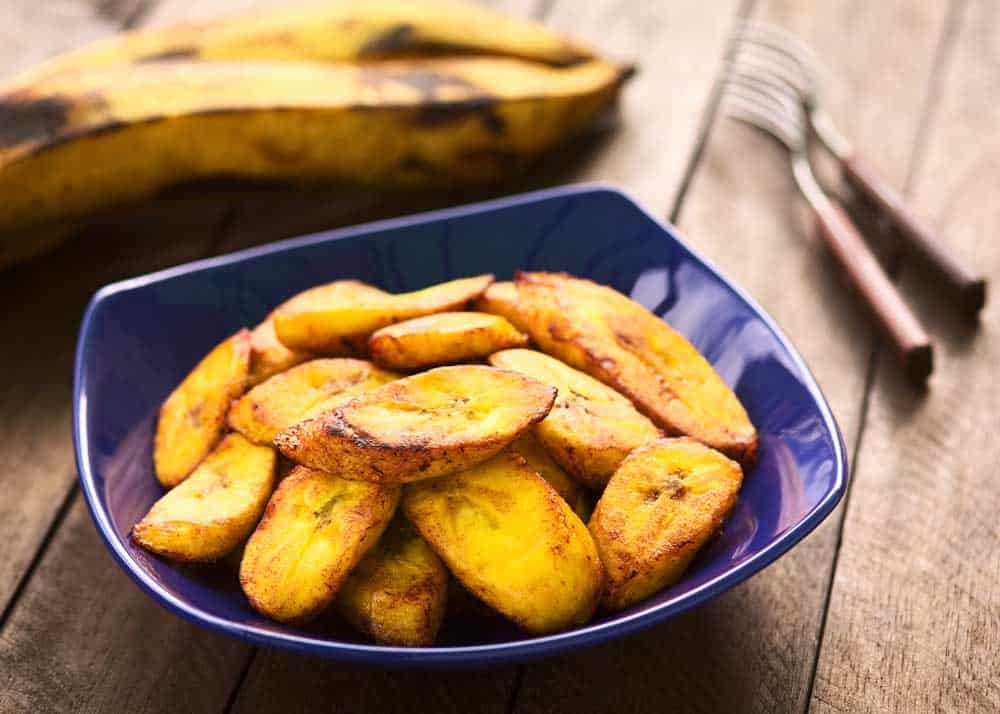
Nicaraguan Food: 22 Dishes, Drinks, and Desserts You Must Try
Nicaraguan food is influenced by the wonderful blending of cultures here. Many of their traditional recipes are from the Indigenous people. The West Coast was colonized by Spain . The East Coast was once a British protectorate, and much of its population is of African descent. So the food will vary depending on where you are in Nicaragua.
You’ll find that most of the food here comes from ingredients that are locally grown. Nicaragua is known as “the land of lakes and volcanoes.” Not only does that make it a beautiful country to live in, but also a land of fertile crops.
Check out the list below for some of the dishes, drinks, and desserts that you must try on your next trip to Nicaragua.
Warning: reading this list may make your mouth water.
14 Main Dishes Worth Trying
1. salpicon.
Easy to make and delicious, salpicon is the Nicaraguan version of mincemeat. It combines ground beef, with onions, peppers, and garlic. Finish off with a squeeze of fresh lime. Salpicon is traditionally served with rice, fried plantains, and a piece of fried cheese.
2. Indio Viejo
Literally meaning “Old Indian” this beef stew has been around since pre-colonial times. It has been said that this dish gained its name when European colonizers asked an Indigenous man what he was eating. Not wanting to share his food, he claimed that they were eating the oldest member of their tribe who had recently passed. Therefore the name “Old Indian.”
Among other ingredients, this orange stew contains shredded beef, tomatoes, and sour/bitter oranges. Corn flour is added as a thickener. Once you’ve tried it, you won’t want to share it either.
A hearty and inexpensive meal, vigorón is a plate of crispy fried pork and yucca topped with a pickled cabbage salad. While North Americans may be accustomed to hotdogs being sold by vendors at baseball games, Nicaraguan vendors carry plates of delicious vigorón.
4. Nacatamal
While living in Nicaragua, Nacatamales were my favorite. They are typically served on Sunday morning with coffee and fresh bread. But I could eat them morning, noon, and night. You can find them in most traditional restaurants, but the best ones we had were made by a sweet older lady who sold them from her home.
Nacatamales are made with a masa (a sort of dough) consisting of corn flour and lard. In the middle, you will find meat (usually pork, but sometimes chicken), rice, potatoes, tomatoes, and seasonings. They are steamed and served in a plantain leaf tied with a string.
5. Plantains
Readily available, plantains are frequently served as a snack or side dish. They are the banana’s more starchy cousin.
- Maduros: Maduros are made from ripe plantains that are fried in oil. They are sweet and have a soft, mushy texture.
- Tajadas: In Nicaragua, tajadas are long, fried chips made from the green/unripe plantains. They are more savory than sweet, similar in taste to a kettle-fried potato chip.
- Tostones: Tostones are another great way to eat green plantains. The plantain is sliced into rounds, which are fried on both sides. They are then removed from the pan, flattened, and fried again. The outside gets nice and crispy while the inside stays soft.
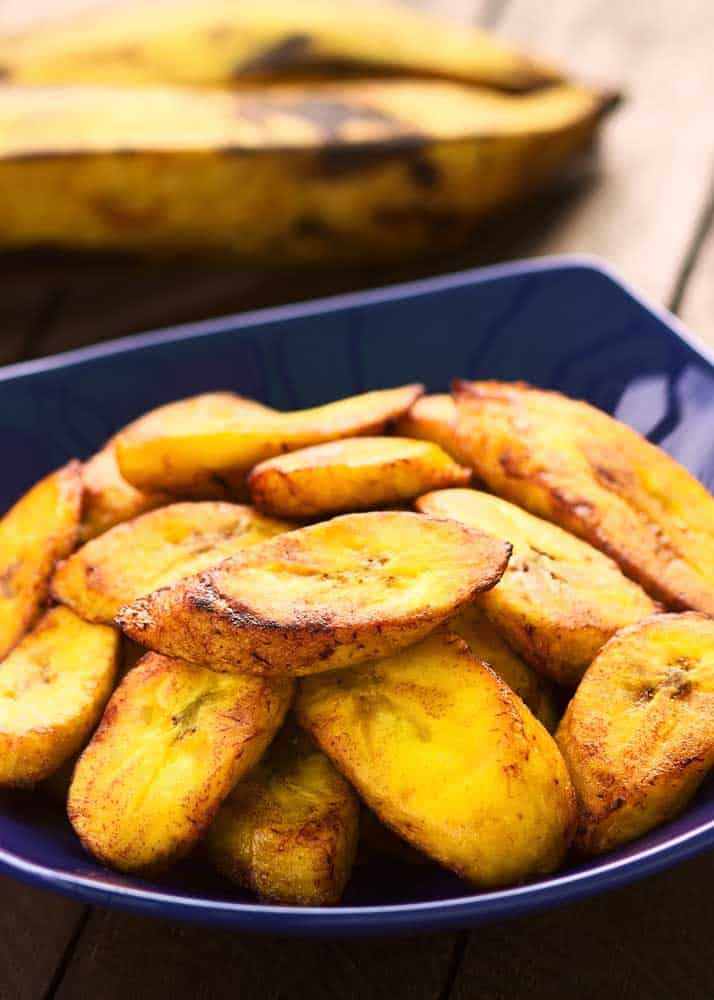
Want to give them a try? Here are 10 ways to cook plantains .
Asado/asada is the Spanish word for grilled meat. In the evening it is common to see street vendors setting up their homemade grills on the curbside.
Nicaraguan asado is often marinated in orange juice, making for flavorful and tender meat. You can buy it on its own or served with tajadas, gallo pinto (see below), and pickled cabbage salad. Try the chicken, pork, or beef- it’s all delicious.
7. Quesillo
My husband loves quesillos, a quick and easy snack sold by many street vendors. The ingredients are white cheese, pickled onions, and cream served in a fresh corn tortilla.
Rondón or “Run Down” is a seafood stew found on the east coast of Nicaragua. You can find similar dishes in Jamaica and all along the Caribbean Coast. A yummy blend of coconut, fresh seafood, and root vegetables- it’s a hearty dish that satisfies.
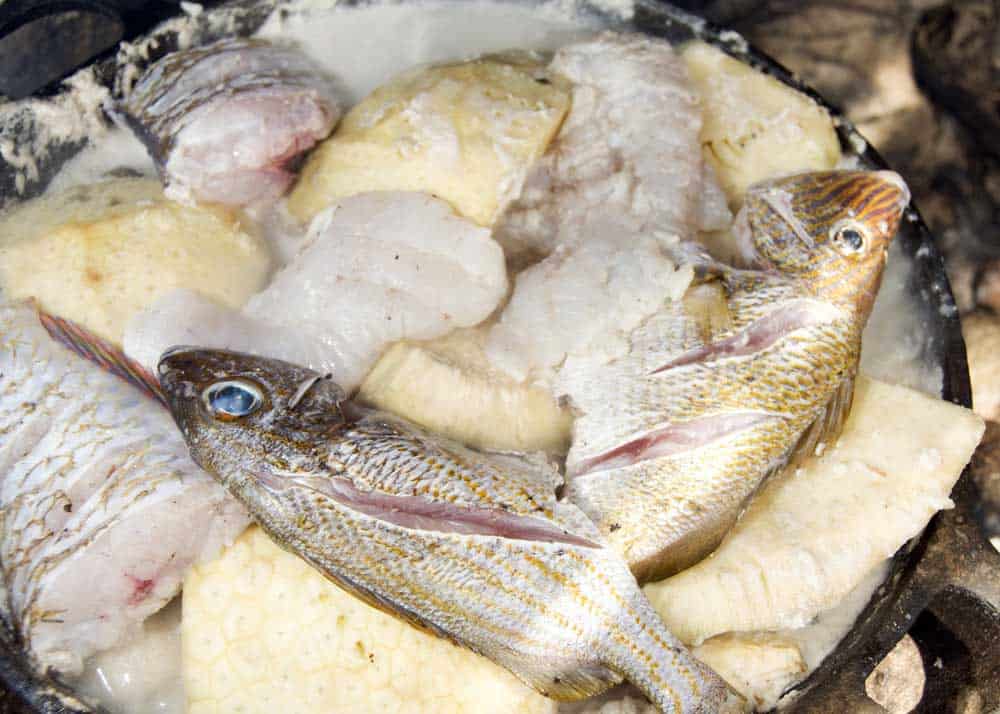
9. Gallo Pinto
Gallo pinto literally means spotted rooster, but has nothing to do with chicken. It’s a mixture of rice and beans that is served as part of a traditional “Nica Breakfast” (eggs, gallo pinto, fried cheese, maduro plantains, and coffee), and also with lunch and supper.
To make gallo pinto at home, combine half a kilogram (one pound) of cooked rice with half a kilogram (one pound) of cooked red kidney beans. Fry it together with 1 onion, 1 head of garlic, 1 sweet pepper, and salt for flavor.
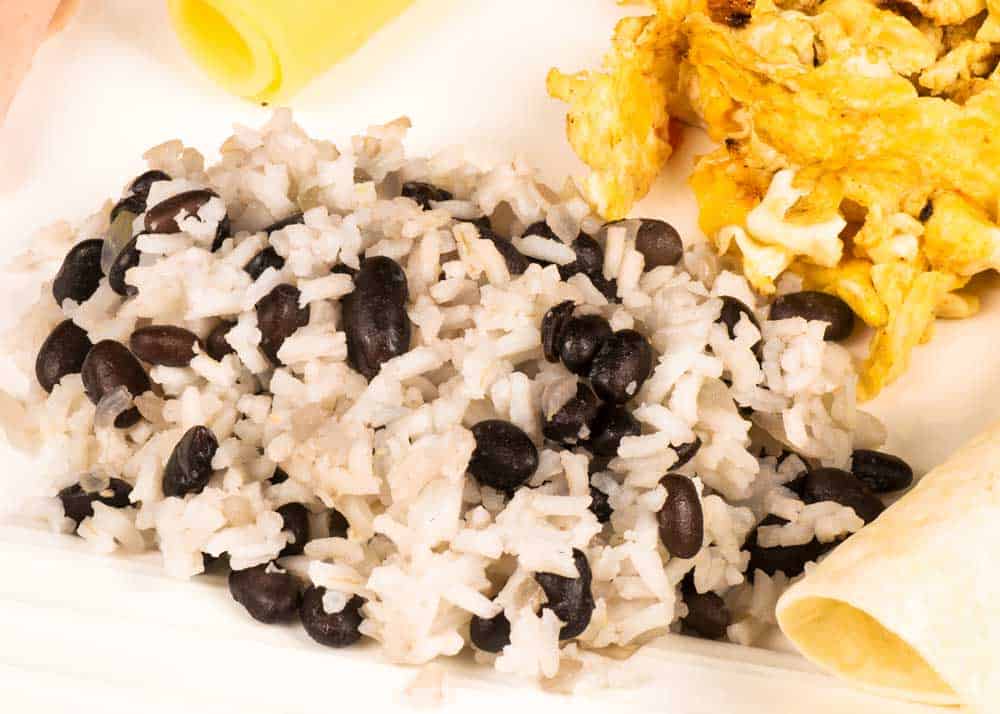
10. Chancho con Yuca
This is a pork dish with boiled yucca and topped with a pickled cabbage and tomato salad. The pork is marinated in the juices of sour/bitter oranges and garlic, and then grilled to perfection.
11. Pollo Jalapeño
As the name suggests, this dish consists of cooked chicken breasts smothered in a thick and creamy jalapeno sauce. While jalapenos can provide quite a spicy kick on their own, when combined with the heavy cream and rosemary in the sauce, you’ll be in for a delicious (but not flame-inducing) meal.
12. Caballo Bayo
Caballo means horse in Spanish, but fortunately, that is not one of the ingredients in this meal. Caballo Bayo is a meal served during festivities and special occasions. Corn tortillas are served with a variety of toppings, generally displayed in clay pots.
Some of the items in this buffet may include: shredded cheese, guacamole, pico de gallo (tomato salsa), sour cream, chorizo sausage, moronga (blood sausage), along with other meats. Some side dishes may also be served, including gallo pinto (rice and beans), and fried plantain.
Sopa is Spanish for soup, and there are so many amazing soups for you to try in Nicaragua that this section could be its own category.
- A favorite among many locals is Mondongo , a vegetable soup containing beef tripe (the edible lining of a cow’s stomach).
- Another popular soup is Sopa de Queso (Cheese Soup). This dairy-rich soup is typically reserved for special occasions.
- And don’t forget to try the Ajiaco . In Nicaragua, some of the ingredients in this yummy soup are pork, spinach, pineapple, ripe plantain, and tomatoes.
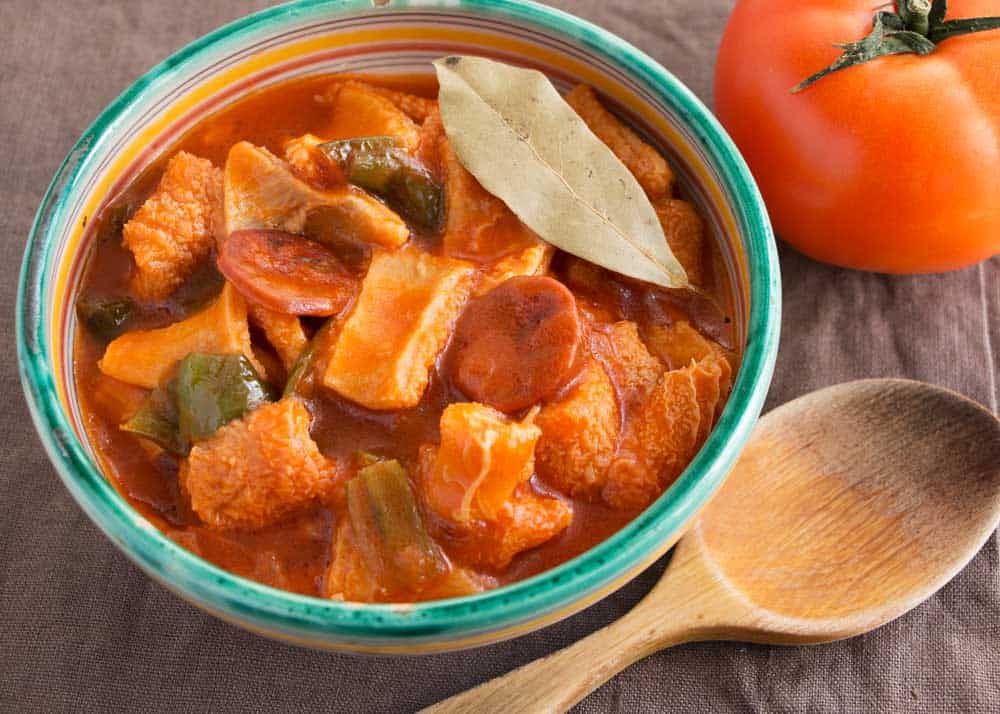
If you are a “meat and potatoes” kind of person, then Baho is definitely for you. This hearty meal consists of slow-cooked yucca, green plantains, ripe plantains, and beef (marinated in bitter orange juice, onions, and garlic). Baho is topped with a pickled cabbage and tomato salad, and often served on a plantain leaf.
Learn more about neighboring Costa Rica
5 Nicaraguan Drinks to Try
Now that we’ve covered the main dishes, here are a few drinks that you should try during your time in Nicaragua. As a side note, if you’re taking a cold drink “to-go” expect it to be poured into a plastic baggie with a straw.
If you’re a coffee drinker, you will be in paradise in Nicaragua. In our house in the Carazo province, we could drink our morning coffee while looking out upon the fields that it was grown in.
Coffee is grown throughout the country, especially in the mountains of the north, and is one of its main exports. The coffee here is of high quality and delicious. As a bonus, most of the local farmers are happy to provide you with a tour.
Learn more about Nicaraguan coffee .
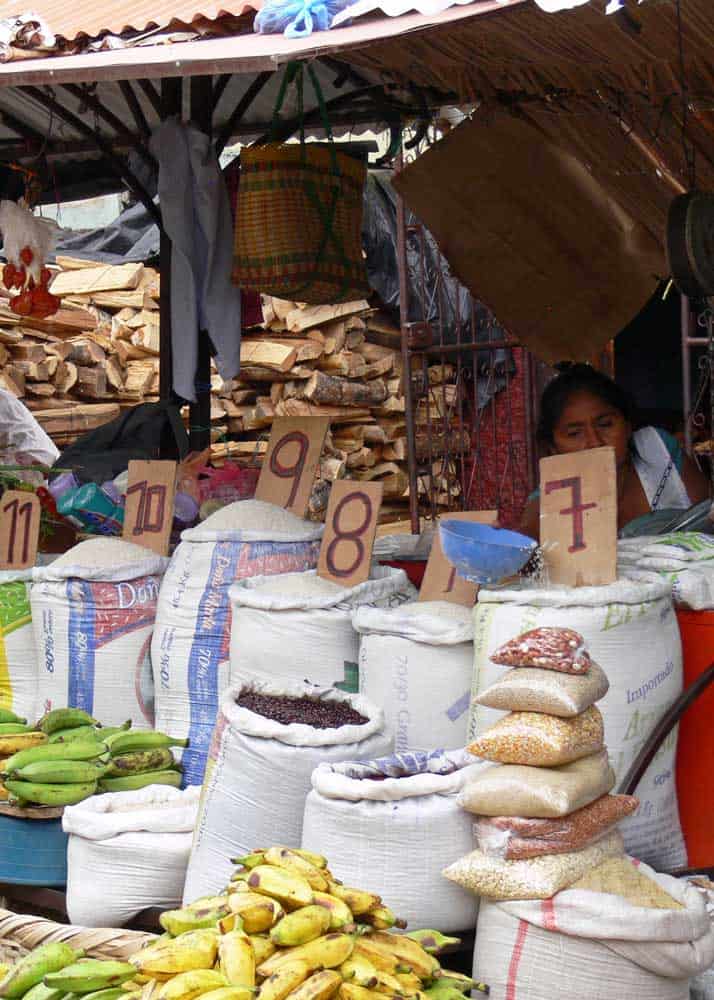
Nope, we’re not leaving Nicaragua to enjoy this drink. Jamaica is what the Nicaraguans call the flower of the hibiscus plant. It is dried, and then boiled in water, producing a red drink. Enjoyed either hot or cold, add some cane sugar, cinnamon, and ginger to complete this refreshing drink.
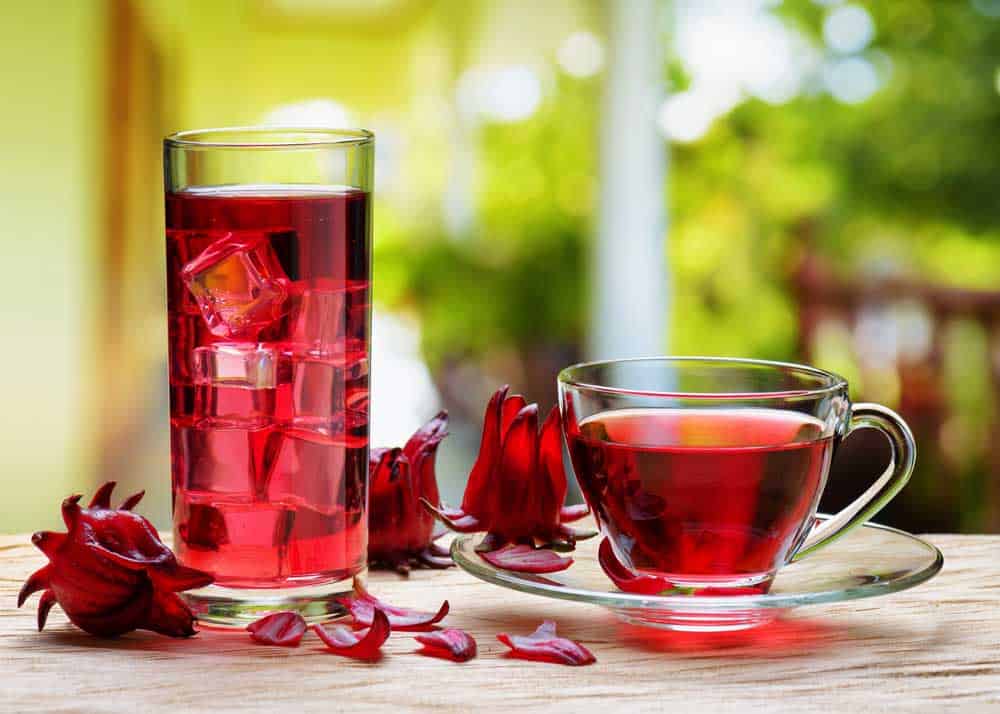
3. Natural Fruit Drinks
If you’re looking for something healthy but tasty to drink, Nicaragua has many options for you. Pineapples, oranges, mangoes, watermelons, guavas, papayas, bananas , and my personal favorite – the pitaya (dragon fruit) are all grown in abundance here.
Both restaurants and street vendors will sell freshly made juices. And don’t forget to try coconut water, straight out of the coconut.
4. Pinolillo
Usually served cold, pinolillo is made with corn flour, cacao, and cinnamon. This powder is mixed into either water or milk, and can be sweetened or unsweetened.
Macuá is the National drink of Nicaragua. Made with locally produced rum and fruit juices (usually guava and lemon), it’s certainly a tasty drink on a warm day.
3 Nicaraguan Desserts to Put on Your List
1. bunuelos.
These are a deep-fried treat made with a dough of yucca flour and cheese. To top it off, these small round sweets are drizzled with a sweet cinnamon-sugar syrup. Need I say more?
2. Rosquillas
A crunchy butter cookie made using corn flour and Nicaraguan cheese (which is dry and a bit salty). While some brown sugar can be added to the recipe, this dessert is not overly sweet.
3. Chocolate
Saving the best for last, chocolate! All of the ingredients needed to produce amazing chocolate are grown right in Nicaragua. For an indulgent treat, go to the Chocomuseo ( Chocolate Museum ) in Granada.
Not only do they give free tours outlining the history of Chocolate, they also offer classes to make your own. At the time of writing, they also had a chocolatey breakfast buffet and a chocolate spa. Go ahead, you deserve it!
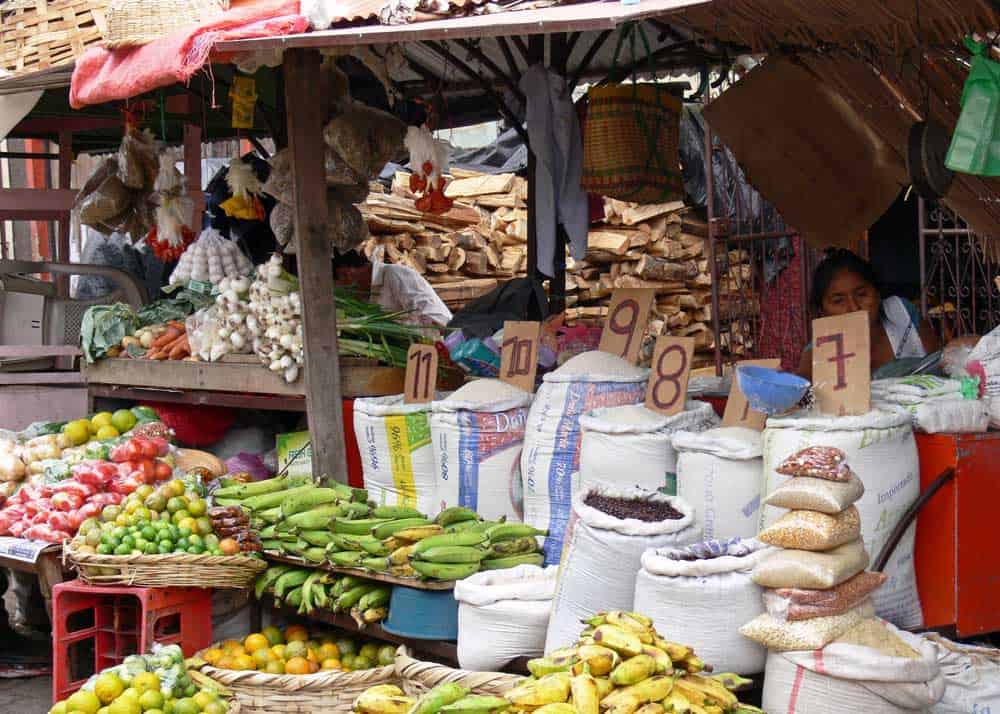
Planning a trip to Nicaragua is worth it for the food alone. Have you visited this beautiful country? What were some of your favorites? Let me know in the comments below.
Hello, I'm Diane Diegor . I'm a travel and nature enthusiast. I love learning about other cultures and tasting their food.
I'm a regular contributor to Storyteller Travel .
Similar Posts

10 Tips for Shopping at an Open Market in Ecuador (11 Spanish Phrases)
The attraction for many gringos, of traveling and living in a foreign country, is the thrill of traditional open markets. When we first arrived here, we heard everything from: “everything is so cheap” and “its such nice / fresh / beautiful / unique products here” to “don’t go there – you’ll get robbed or mugged”…
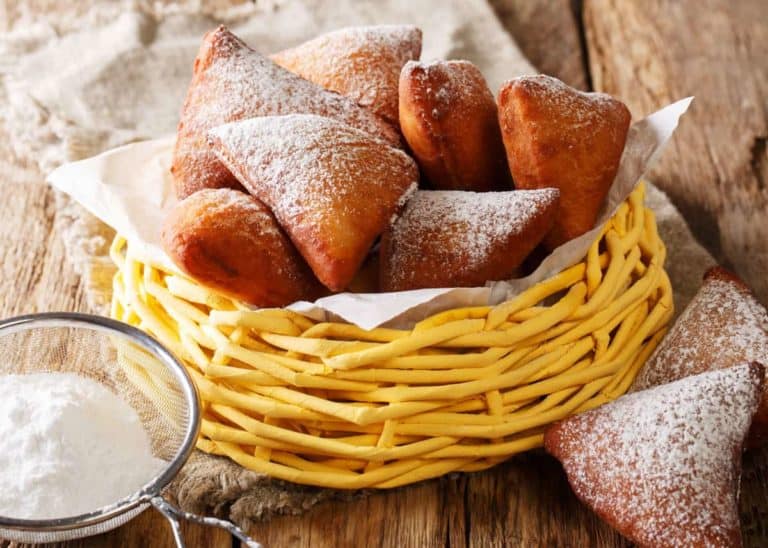
Uganda Food Guide: 17 Must-Try Dishes for Your Visit
Curious about what Ugandan food is like? In this Uganda Food Guide, you’ll learn about breakfast, lunch, and dinner – and sauces, desserts, and beverages from around the country – with 10 videos that include recipes and tips for preparing your own. You’ll also learn about the three places to try local food. Uganda Food…

7 Best Portable Water Filters & Travel Purifiers: 7 Factors Compared
If you’re traveling to rural areas abroad, you need to decide how you’ll filter your water supply. In this huge guide, you’ll learn how to choose the best portable water filter and purifier for your travels. We include factors to consider, plus common water risks, and answer commonly asked questions about water. How to Choose…
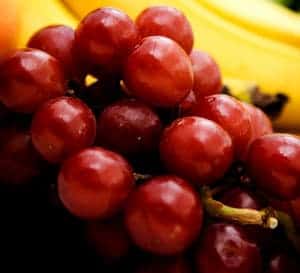
Does Grapefruit Seed Extract Really Work?
Living in Ecuador has given us a variety and quality of food that we literally couldn’t imagine enjoying back in Canada. The fruit is cheap, fresh and delicious. $1.00 pineapples are huge and extremely sweet. Mangoes are sweet and messy (er, juicy) and cost $0.55 per kg! Grapes, papaya, oranges, limes, and bananas are all…
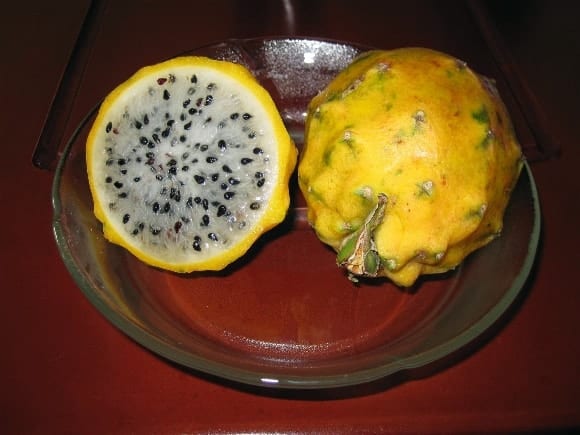
Have You Tried Dragon Fruit? Pitahaya: Bat Pollinated Cactus Fruit
This is a delicious, sweet and refreshing fruit. I’m a fan of fruit that’s easy and doesn’t need juicing or sweetening, like apples, mangoes and bananas. The Pitahaya fruit is new to me, and my list of “easy fruit.” It’s a little funny looking, the skin is yellow (or red, depending on variety) and bumpy. …
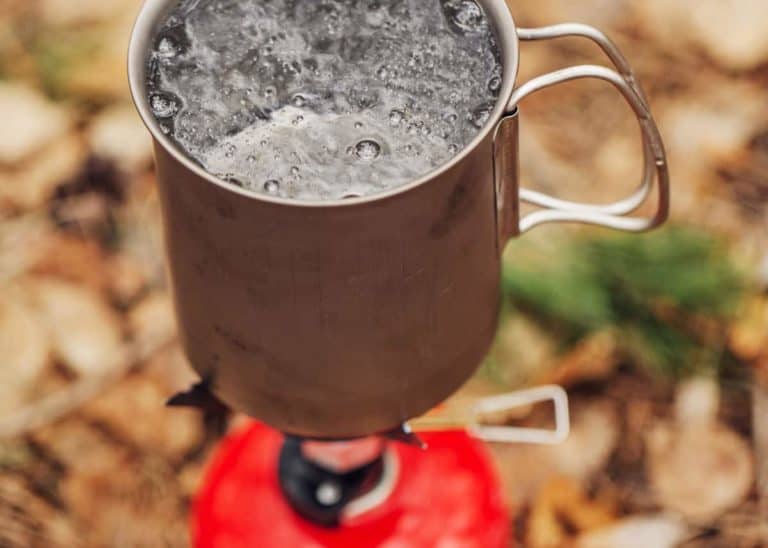
How Long to Boil Water to Purify for Drinking (According to Science)
Whether you’re hiking or camping this summer, safe water is pretty important. In this post, you’ll learn how long to boil water to make it safe for drinking. Plus, you’ll learn about what makes you sick, other purification methods, and we’ll answer many questions about safe drinking water. How Long to Boil Water to Purify…
I love the fact you love my country, but salpicón is not ground meat, is normally “posta” that you cook/boil and then you chop yourself.
It’s “Chancho con Yuca” not “Chanco”. Missing Arroz Aguado and empanadas de maduro, which are also served with salpicón. Great list! 👍
Thanks Mak11!
Leave a Reply Cancel reply
Your email address will not be published. Required fields are marked *
- Central America
- 10 Traditional Dishes You Must...
Traditional Dishes You Must Try in Nicaragua

The constant search for ever more authentic flavours in recent years has fuelled a foodie revolution based on farmers markets, food trucks, and an eat-like-a-local philosophy that has also changed the way we travel. As a tourism destination, Nicaragua is not only booming with birdwatchers, surfers, volcano-boarders and culture vultures, but also ticks all the boxes for culinary travellers seeking gastro adventures. Self-confessed foodies are being enticed here by a smorgasboard of delicious traditional dishes to feast on and a host of exotic fruits and vegetables to try. Made from home-grown ingredients and the kind of love you only get in places where the locals are passionate about the food they cook, traditional Nicaraguan dishes can be found at high-end restaurants, hole-in-the-wall eateries, local markets, and street corner grills.
Gallo pinto.

Much more than rice and beans, gallo pinto is a national dish that Nicaraguans can happily eat for breakfast, lunch, and dinner. The name translates as painted rooster, and to live up to its name gallo pinto is typically made of red beans, white rice, and diced onions that are fried together in a large skillet with some of the water that the beans were boiled in to give the mixture a reddish tinge. On the Atlantic coast and Nicaragua’s Caribbean islands the beans, rice, and onions are fried in coconut oil, or with a splash of coconut milk to make them extra creamy. Nicaraguans joke that the country runs on gallo pinto power.
Desayuno Nica
Gallo Pinto is one of the main components of a desayuno típico , a traditional Nicaraguan breakfast, which is loaded with enough energy to fill you up until well past lunch. The full Nica comes with fried eggs, or scrambled eggs cooked with diced onions and bell peppers, fried plantains, a few squares of fried or fresh cheese, a piled up heap of gallo pinto , and a fresh maize tortilla. Typical extras include pico de gallo , a vinegary salsa of finely chopped tomatoes and onions, and a little pot of sour cream, but bacon or blood sausage could also make it onto the plate. Combined with a tropical juice such as pitahaya (dragon fruit) or calala (passion fruit), and a strong local coffee, the desayuno Nica is up there with the best breakfasts in the Americas.
Nacatamales

Made from maize dough stuffed with pork, slices of potato, and a sprig of a minty herb called yerba buena , nacatamales are Nicaragua’s version of the Mexican tamal or the Venezuelan hallaca . Nacatamal comes from Nahuatl, the language of the ancient Aztecs, from the root nacatl (meat) and tamalli (something wrapped), as the corn dough is wrapped in a plantain leaf before being boiled. Nicaraguans usually only eat nacatamales for breakfast at the weekend with a coffee, as they are considered too heavy to eat in the evening. While pork and potato are the classic combination for nacatamales , they can be stuffed with whatever comes to hand: chicken, rice, or vegetables. Nacatamales are super tasty, but always remember to take off the plantain leaf before tucking in.

Quesillos are cheesy treats sold from street carts all over the country. They consist of a tortilla wrapped around a circle of homemade white cheese that is smothered with curtido (finely chopped pickled onion) and a generous dollop of crema (cream). They are either served wrapped up in a plastic bag (so you can eat them without making a mess) or flat on a plate. The towns of La Paz Centro and Nagarote – on the road between the cities of Leon and Managua – both insist they produce the best quesillos in Nicaragua. Following tradition, add a hearty dash of homemade chile sauce before you tuck in, and accompany your quesillo with a chocolate and maize drink called tiste , which is served in a gourd cup.
Indio Viejo

A thick soup made of maize dough with shredded beef and onion, Indio Viejo (Old Indian) is a Nicaraguan dish that has its roots in pre-Columbian times. According to legend, a group of hungry Spanish conquistadors arrived in an indigenous village demanding to know what the locals were cooking. “Only an old Indian who died yesterday,” a quick-witted member of the tribe responded. The ruse worked. Shocked at this story of cannibalism, the Spaniards rode off to raid another village, and the whole tribe had a good laugh as they enjoyed the meal of maize that had been cooking over the fire. Indio Viejo gets its slightly sweet flavour from yerba Buena and bitter orange, and is traditionally served with tostones (fried green plantains) and cuajada (curd cheese).
A classic of Creole cooking on the Atlantic coast of Nicaragua, rondón is a one-pot cooking solution for busy fishermen that has become an iconic dish for the whole region. Fish, shrimp, lobster, or any other seafood you can “run down” are added to the pot with root vegetables like yuca ( cassava ), plantains, potatoes, carrots, bell peppers, chilli peppers, and a fish stock sweetened with coconut milk to create a mouth-watering stew. Rondón can also be made with beef, pork, or turtle meat, but the creamy coconut stock works best with seafood.
The name of this popular dish comes from the Spanish word vaho , which means mist or steam, and to prepare it chunks of beef, green plantains, mature plantains, yuca ( cassava ), onions, and peppers are slowly steamed together in a huge cooking pot that is sealed at the top with layers of banana leaves to keep in all the amazing flavours. After spending four to eight hours on a low heat, the ingredients are cooked to perfection and are served on a banana leaf with a topping of vinegary cabbage slaw. Typically eaten at the weekend, baho is said to be an excellent cure for a hangover.

Slightly sweet, slightly salty – and delicious when combined with homemade cuajada (curd cheese) and cream – the güirila (corn pancake) is one of the gastronomic delights of the Nicaraguan countryside. The spelling can put off some non-Spanish speakers, but güirila is easy to pronounce once you hear it. Just ask for a wee-ri-la. According to Nicaraguans, the best güirilas are to be found in the north of the country, in and around Matagalpa and Sebaco, although the people of Chontales, the country’s dairy region, also lay claim to the crown.

There’s only one place to eat vigorón , and that’s in the historic city of Granada, where the dish was first created in 1914. A mini-mountain of boiled yuca and chicharrones (pork rinds) topped with a chopped cabbage salad that contains slices of mimbro , a sharp-tasting fruit from the cucumber tree, vigorón is sold in Granada by street vendors with nicknames like El Gordito (The Fat Man), La Pelona (The Bald Woman), and La Perla (The Pearl), who all have their loyal, local fans. The key to vigorón’s moreishness is the killer combination of creamy yuca with crispy fried pork and the crunchy freshness of the zingy slaw.
Fried dough balls covered in syrup might not tingle everybody’s taste buds, but in Nicaragua this pan-Latin American staple is made from starchy yuca ( cassava ) flour, which is mixed with eggs and cheese before being deep fried to create crunchy balls of happiness that are eaten all year round. The syrup is flavoured with cinnamon and poured over the buñuelos while hot, adding a warm sticky sweetness to the salty savouriness of the yucca and cheese balls. Nicaraguans don’t generally eat desserts after a main meal in a restaurant, but a small bowl of buñuelos served with a coffee is probably the exception.
For more inspiration on what to see and do in Nicaragua, see the places in Nicaragua that you need to visit .
Since you are here, we would like to share our vision for the future of travel - and the direction Culture Trip is moving in.
Culture Trip launched in 2011 with a simple yet passionate mission: to inspire people to go beyond their boundaries and experience what makes a place, its people and its culture special and meaningful — and this is still in our DNA today. We are proud that, for more than a decade, millions like you have trusted our award-winning recommendations by people who deeply understand what makes certain places and communities so special.
Increasingly we believe the world needs more meaningful, real-life connections between curious travellers keen to explore the world in a more responsible way. That is why we have intensively curated a collection of premium small-group trips as an invitation to meet and connect with new, like-minded people for once-in-a-lifetime experiences in three categories: Culture Trips, Rail Trips and Private Trips. Our Trips are suitable for both solo travelers, couples and friends who want to explore the world together.
Culture Trips are deeply immersive 5 to 16 days itineraries, that combine authentic local experiences, exciting activities and 4-5* accommodation to look forward to at the end of each day. Our Rail Trips are our most planet-friendly itineraries that invite you to take the scenic route, relax whilst getting under the skin of a destination. Our Private Trips are fully tailored itineraries, curated by our Travel Experts specifically for you, your friends or your family.
We know that many of you worry about the environmental impact of travel and are looking for ways of expanding horizons in ways that do minimal harm - and may even bring benefits. We are committed to go as far as possible in curating our trips with care for the planet. That is why all of our trips are flightless in destination, fully carbon offset - and we have ambitious plans to be net zero in the very near future.

Places to Stay
The best hotels in nicaragua for every traveler.

See & Do
How to go volcano boarding in nicaragua.

Bars & Cafes
The best wine bars in nicaragua.

Managua: Why This Hidden Gem Deserves to be Explored

The Best Markets to Visit in Nicaragua

The Best Hotels in Granada, Nicaragua

The Best Boutique Resorts in Nicaragua
The most beautiful historical towns and cities in nicaragua.

The Story Behind How Nicaragua Got its Name

The Best Bed and Breakfasts in Nicaragua

Where to Stay in Granada, Nicaragua

Guides & Tips
11 nicaraguan words and phrases you need to know, culture trip spring sale, save up to $1,100 on our unique small-group trips limited spots..

- Post ID: 1533617
- Sponsored? No
- View Payload
What to eat in Nicaragua? Top 9 Nicaraguan Foods
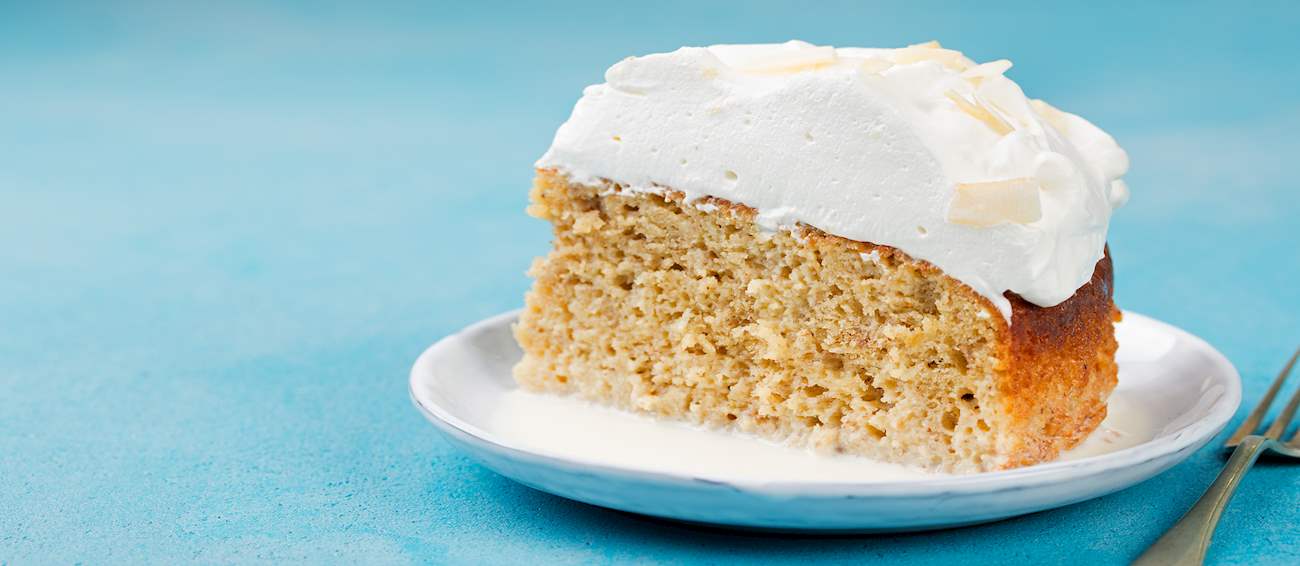
Indio viejo

Indio viejo is a Nicaraguan dish made with vegetables such as garlic, onions, sweet peppers, and tomatoes. Water-drenched tortillas are first ground into a dough; then the beef is shredded and fried with vegetables, tortilla dough, and achiote paste. When all of these components are combined, it results in a creation of this hearty stew with a name that can be translated as old Indian . The dish dates back to pre-Columbian Nicaragua, when it was originally made with Central American animals, although beef is the preferred option these days. It is typically served with fried plantains and rice.
Indio viejo is a Nicaraguan dish made with vegetables such as garlic, onions, sweet peppers, and tomatoes. Water-drenched tortillas are first ground into a dough; then the beef is shredded and fried with vegetables, tortilla dough, and achiote paste.
Tres Leches Cake

Tres leches cake is a dense, moist dessert consisting of a sponge cake covered with three types of milk: evaporated, condensed, and whole milk. Although its origins are quite murky, most sources claim it was invented in Nicaragua, but the cake is popular throughout Central America, the United States, and Europe, where it is a staple at numerous celebrations and festivities. It is believed that the original recipe was first printed on milk cans in Latin America, to promote the use of the product, and as a result, the milk companies boosted their milk sales.
Tres leches cake is a dense, moist dessert consisting of a sponge cake covered with three types of milk: evaporated, condensed, and whole milk. Although its origins are quite murky, most sources claim it was invented in Nicaragua, but the cake is popular throughout Central America, the United States, and Europe, where it is a staple at numerous celebrations and festivities.
MAIN INGREDIENTS

Cachapa, chorreada, arepa de choclo, güirila, toquera, tortilla de choclo, and tortilla changa, are all names that describe a Latin American corn dish that can be categorized as either a pancake, tortilla, or flatbread, depending on the country. It can be made only of corn or have additional ingredients like sugar, water, milk, salt, butter, cheese, and oil. They are typically prepared by street vendors and are either fried or griddled (in Nicaragua, they’re cooked between two banana leaves!) and characterized by a sweet-savory flavor. They can be eaten plain with a beverage, wrapped around a filling, or topped like an open-faced sandwich with things like cheese, shredded pork, sour cream, and eggs. They can be eaten any time of day, but typically they're eaten for breakfast, as a snack, or a quick dinner.
Cachapa, chorreada, arepa de choclo, güirila, toquera, tortilla de choclo, and tortilla changa, are all names that describe a Latin American corn dish that can be categorized as either a pancake, tortilla, or flatbread, depending on the country.
Gallo pinto

Gallo pinto, sometimes referred to only as pinto , is the traditional national dish of Costa Rica and Nicaragua. Although many variations of the dish exist, at its most basic it is a blend of cooked and fried rice and beans, combined with herbs and vegetables such as cilantro, peppers, celery, and onions. The name of the dish means spotted rooster, referring to the fact that the combination of beans and rice results in a spotted, speckled visual appearance. It is typically served as a side dish, either for breakfast (alongside eggs or meat), lunch or dinner, and sometimes with all three meals of the day. The origins of the dish are probably Nicaraguan, with the name dating back to the 1900s, inspiring a rivalry between the two countries, so it is not just Costa Rican national dish, but Nicaraguan as well. The obvious difference is that the Costa Rican version uses black beans, while the Nicaraguan version uses red beans. Regardless of its origins, the rivalry still continues, and gallo pinto remains a staple of both cuisines, with a small bottle of Salsa Lizano on the side in Costa Rica, a spicy condiment acting as a reminder of which country's version of the dish one is consuming.
Gallo pinto, sometimes referred to only as pinto , is the traditional national dish of Costa Rica and Nicaragua. Although many variations of the dish exist, at its most basic it is a blend of cooked and fried rice and beans, combined with herbs and vegetables such as cilantro, peppers, celery, and onions.

Vaho or baho is one of the most popular Nicaraguan dishes and a great hangover cure. It is made by wrapping a combination of beef, yuca, and plantains in banana leaves, then steaming the concoction. The word vaho means steam or mist , referring to the method of preparation. Onions and peppers are sometimes added to vaho in order to enhance the flavor and texture. This dish is traditionally prepared on weekends and consumed on Sunday afternoon, when it's typically accompanied by curtido (cabbage relish).
Vaho or baho is one of the most popular Nicaraguan dishes and a great hangover cure. It is made by wrapping a combination of beef, yuca, and plantains in banana leaves, then steaming the concoction. The word vaho means steam or mist , referring to the method of preparation.

Nacatamal is a type of traditional Nicaraguan tamale made with corn dough which is stuffed with chicken or pork, then wrapped in plantain leaves and steamed. This savory dish usually also contains ingredients such as bell peppers, garlic, potatoes, rice, bitter orange, onions, mint, and chile peppers. On special occasions, nacatamal is often enriched by the addition of prunes, raisins, capers, and olives. It is typically prepared on weekends and served for breakfast, paired with bread and a cup of coffee on the side. The name of the dish is derived from the Nahuatl words nacatl , which means meat , and tamalli , which means tamale . Originally, the dish was prepared with turkey, iguana, tomatoes, annatto, and deer meat wrapped in corn leaves, but during the colonial time, the meat changed to pork and chicken, while plantain leaves substituted corn leaves.
Nacatamal is a type of traditional Nicaraguan tamale made with corn dough which is stuffed with chicken or pork, then wrapped in plantain leaves and steamed. This savory dish usually also contains ingredients such as bell peppers, garlic, potatoes, rice, bitter orange, onions, mint, and chile peppers.
OTHER VARIATIONS OF Tamal

MOST ICONIC Nacatamal
The Garden Cafe

Restaurante Comidas Típicas y Más
Nacatamales Emma
Vegetable dish, stuffed eggplants (berenjenas rellenas).

Berenjenas rellenas or stuffed eggplants is a traditional savory specialty originating from Spain. There are many versions of this dish regarding its preparation and the ingredients used for the filling. The eggplants are typically cut along the middle and baked until tender before they have their pulp removed, although they’re occasionally left raw and cooked with the filling. A variety of vegetables, vegetables and rice, or a combination of ground meat (usually pork and beef) and vegetables are most commonly used for stuffing the hollowed eggplants. Typical vegetables contained in the filling include tomatoes, zucchinis, onions, peppers, chili peppers, and mashed potatoes, while the mixture is usually flavored with garlic, salt, pepper, oregano, thyme, rosemary, or parsley. Other common additions to this specialty include sweet corn, slices of bacon, mushrooms, beans, béchamel sauce, or grated cheese such as Manchego or parmesan. The dish is also popular in Spanish-speaking countries such as Nicaragua.
Berenjenas rellenas or stuffed eggplants is a traditional savory specialty originating from Spain. There are many versions of this dish regarding its preparation and the ingredients used for the filling. The eggplants are typically cut along the middle and baked until tender before they have their pulp removed, although they’re occasionally left raw and cooked with the filling.
Sweet Pastry

Rosquillas are traditional Spanish deep-fried donuts, characterized by their fluffy texture and a hole in the middle. They are typically prepared during the Holy Week festivities. Although there are many varieties of rosquillas, the classic ones are prepared with a combination of eggs, sugar, milk, oil, lemon zest, flour, baking powder, and anisette, which imparts a unique flavor to these tasty donuts. Another classic variety of rosquillas is made with sweet muscat wine ( moscatel ), and those donuts are known as rosquillas de vino . After they have been deep-fried, rosquillas are typically served as a sweet snack, topped with cinnamon sugar. Interestingly, in Honduras, the rosquillas are made with corn masa and curd cheese, and they are not deep-fried but baked in the oven.
Rosquillas are traditional Spanish deep-fried donuts, characterized by their fluffy texture and a hole in the middle. They are typically prepared during the Holy Week festivities. Although there are many varieties of rosquillas, the classic ones are prepared with a combination of eggs, sugar, milk, oil, lemon zest, flour, baking powder, and anisette, which imparts a unique flavor to these tasty donuts.
VARIATIONS OF Rosquillas

Street Food
Vigorón is a popular Nicaraguan dish that is often served to unexpected guests and visitors, since it is quickly and easily prepared. It consists of boiled yucca, chopped cabbage, onions, tomatoes, chile peppers, and fried pork rinds known as chicharrones . Some Nicaraguans claim that there is no true vigoron without the addition of mimbro, a tangy fruit from the cucumber tree. The combination of these ingredients comes served in banana leaves when sold by street vendors. It is believed that vigorón was invented in Granada in 1914 by María Luisa Cisneros Lacayo, who had an interesting nickname – La Loca. According to Dr. Alejandro Barberena Pérez, she named the dish after seeing an advertisement for the eponymous medicinal tonic.
Vigorón is a popular Nicaraguan dish that is often served to unexpected guests and visitors, since it is quickly and easily prepared. It consists of boiled yucca, chopped cabbage, onions, tomatoes, chile peppers, and fried pork rinds known as chicharrones .
MOST ICONIC Vigorón
Vigorón de la Abuela
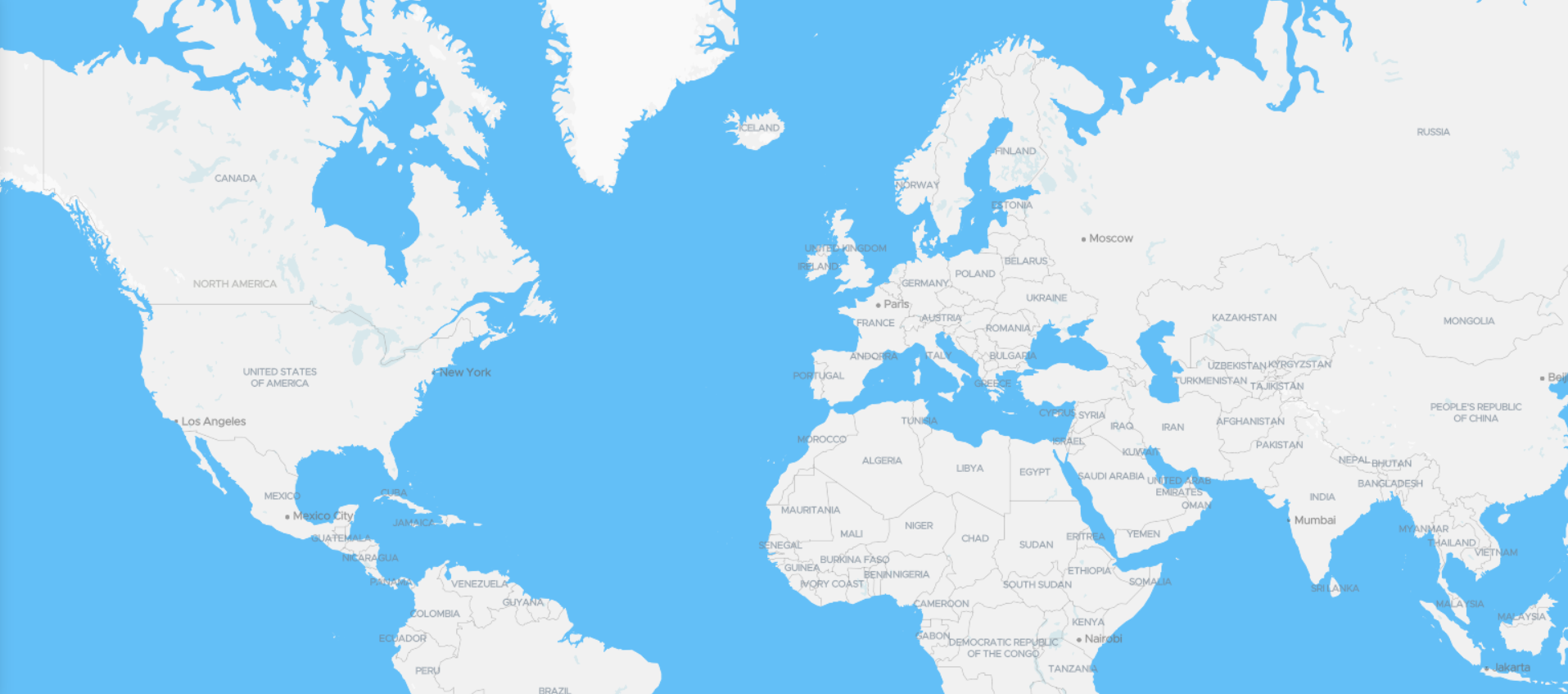

- Virginia Beach
- History & facts
- Famous people
- Famous landmarks
- AI interviews
- Science & Nature
- Tech & Business
Discover something new everyday
- Famous places
Food & Drinks
- Tech & Business
30 Mouth-Watering Traditional Foods of Nicaragua You Need to Try
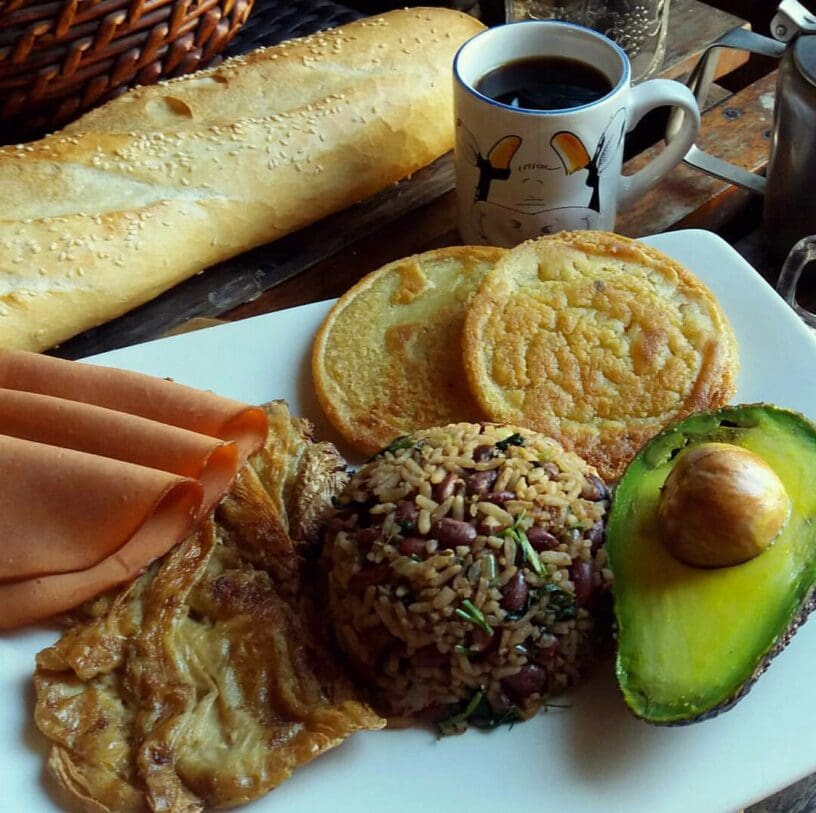
Aleat88 , CC BY-SA 4.0 , via Wikimedia Commons
Read Next →
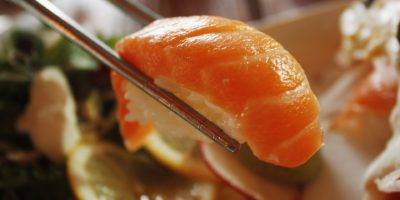
15 Best Sushi Trains Of London
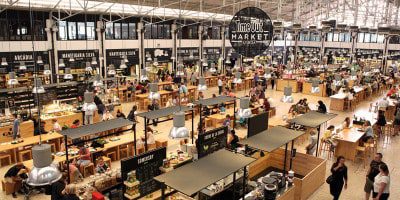
Top 14 Food Markets in Lisbon
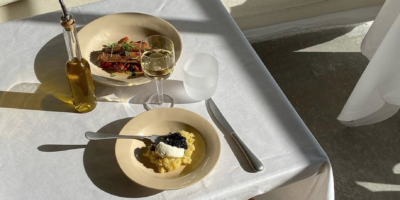
20 Best Restaurants in Paris in 2023
1. gallo pinto: the breakfast champion.
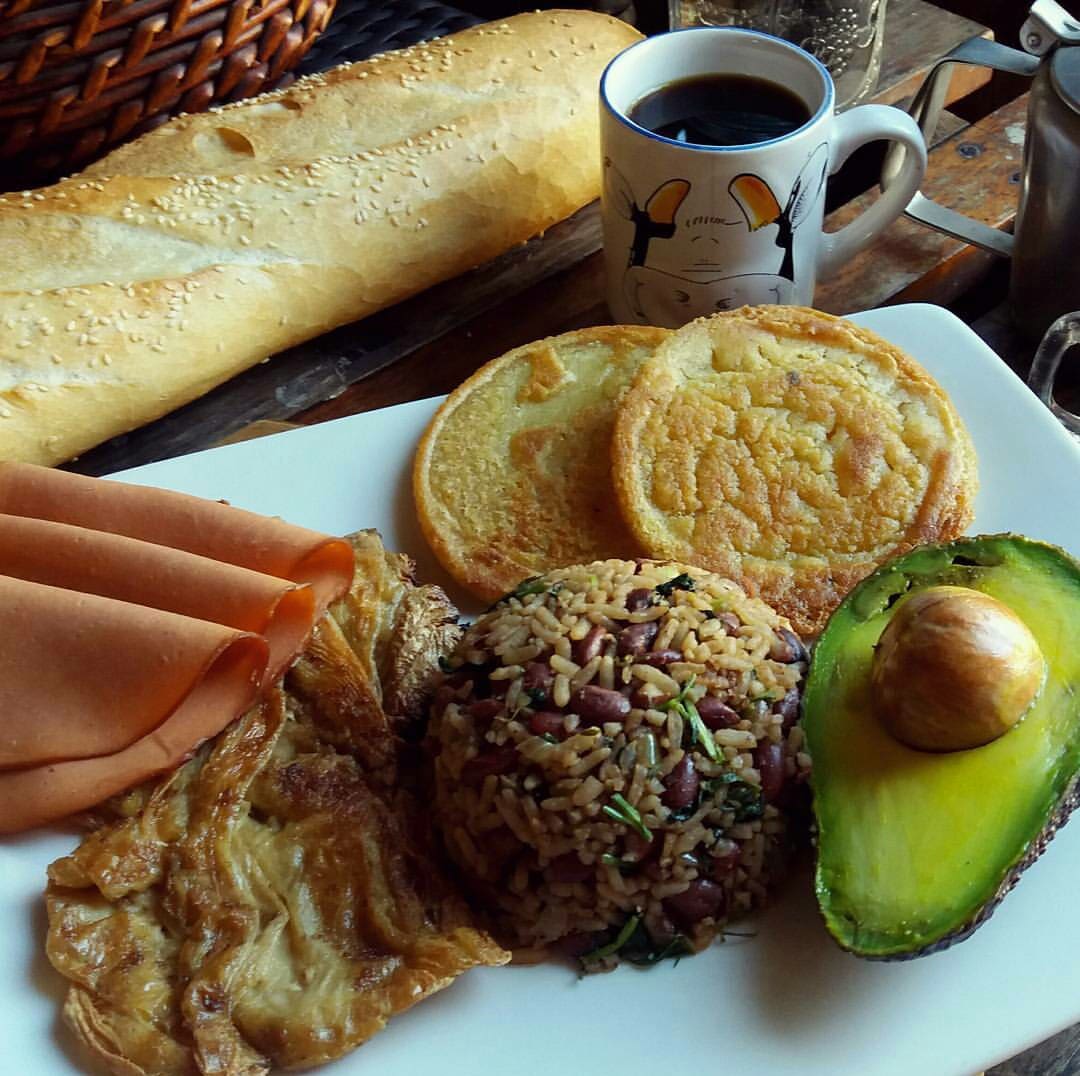
2. Nacatamal: A Sunday Tradition
3. vigorón: a street food delight.
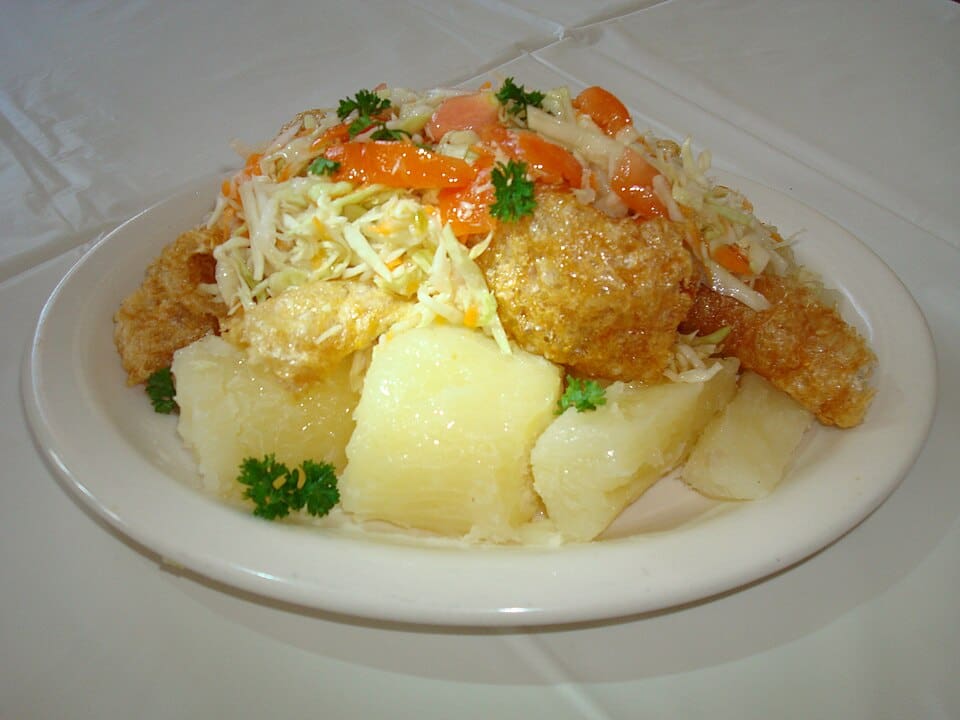
Nicaraguan food , Public domain, via Wikimedia Commons
4. Indio Viejo: The Indigenous Stew
5. sopa de albóndigas: comfort in a bowl.
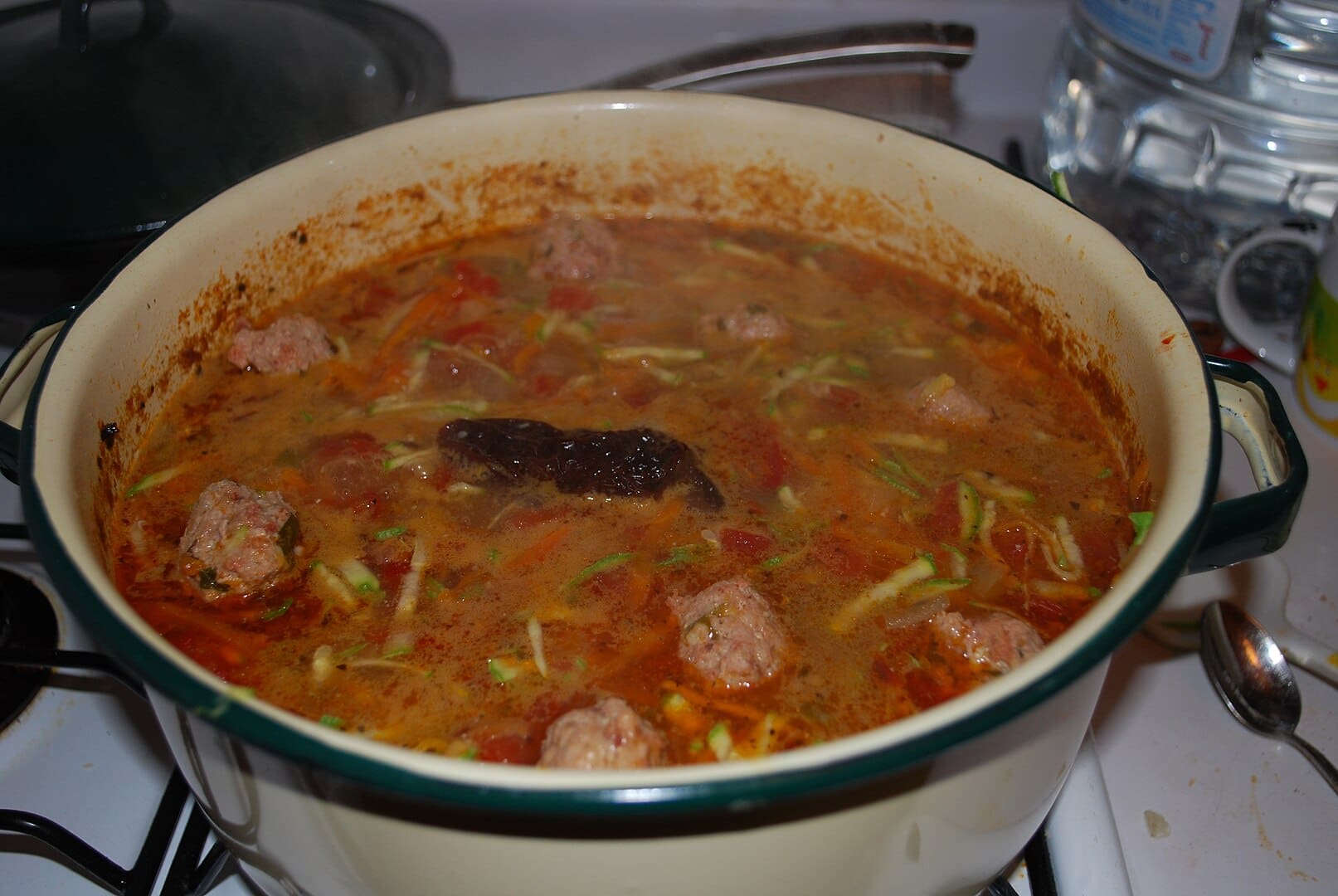
Thelmadatter , CC BY-SA 3.0 , via Wikimedia Commons
6. Rondón: Caribbean Fusion
7. tajadas: fried plantain perfection.
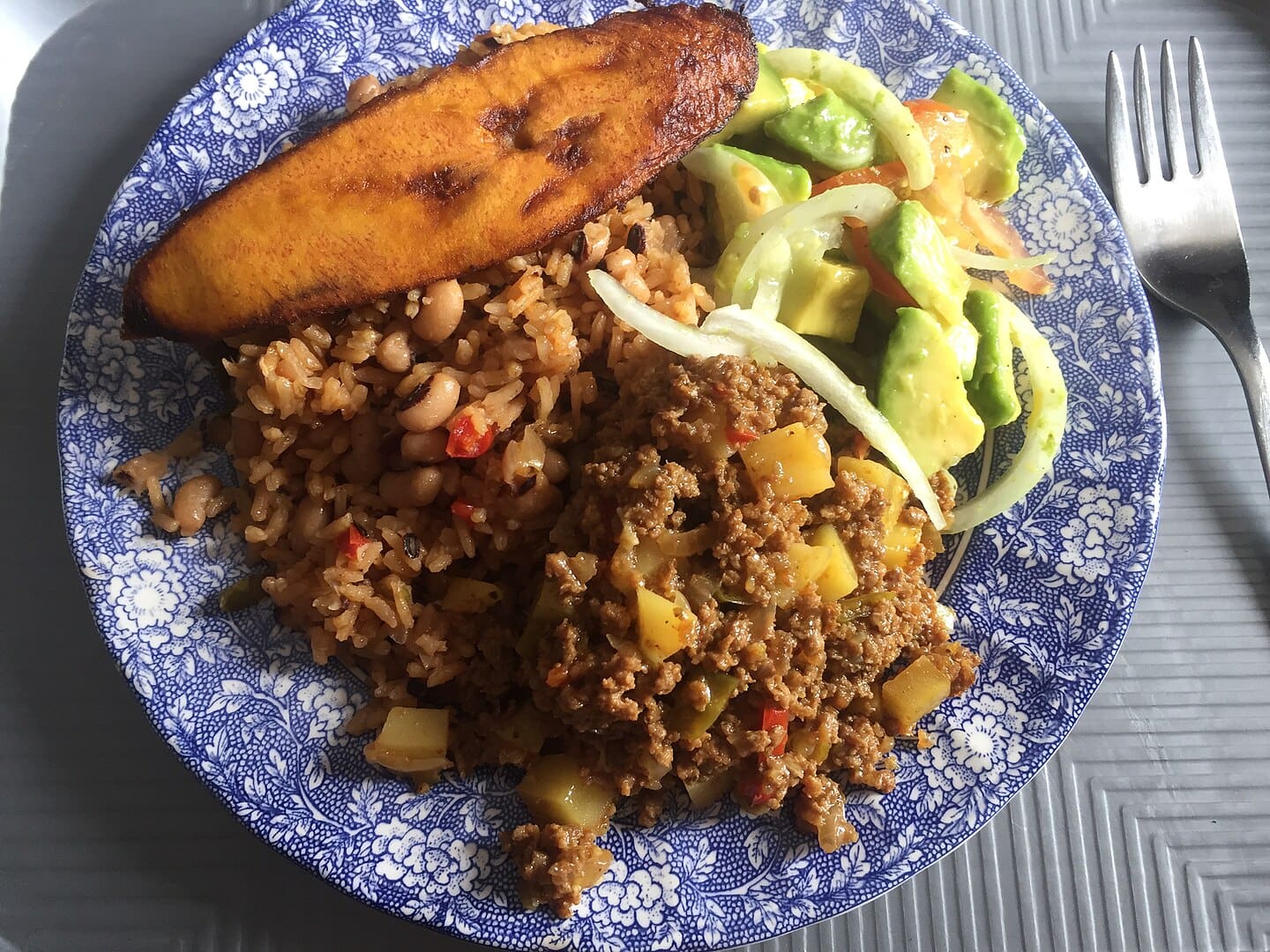
Jdvillalobos , CC BY-SA 4.0 , via Wikimedia Commons
8. Quesillo: The Art of Cheese
9. sopa de mondongo: tripe soup extravaganza.
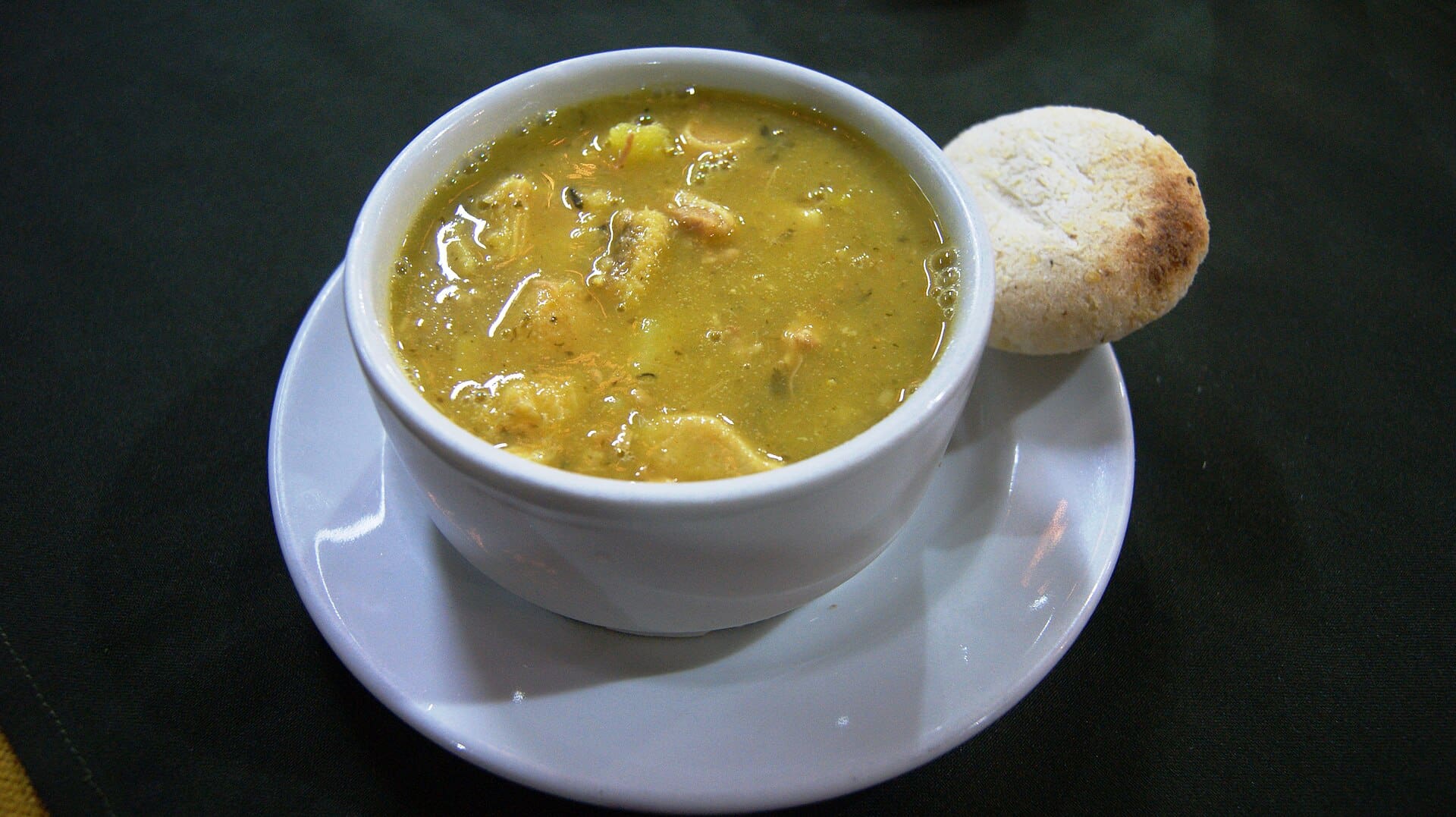
Dtarazona , CC BY-SA 3.0 , via Wikimedia Commons
10. Tiste: The Indigenous Chocolate Drink
11. chancho con yuca: pork and cassava harmony.
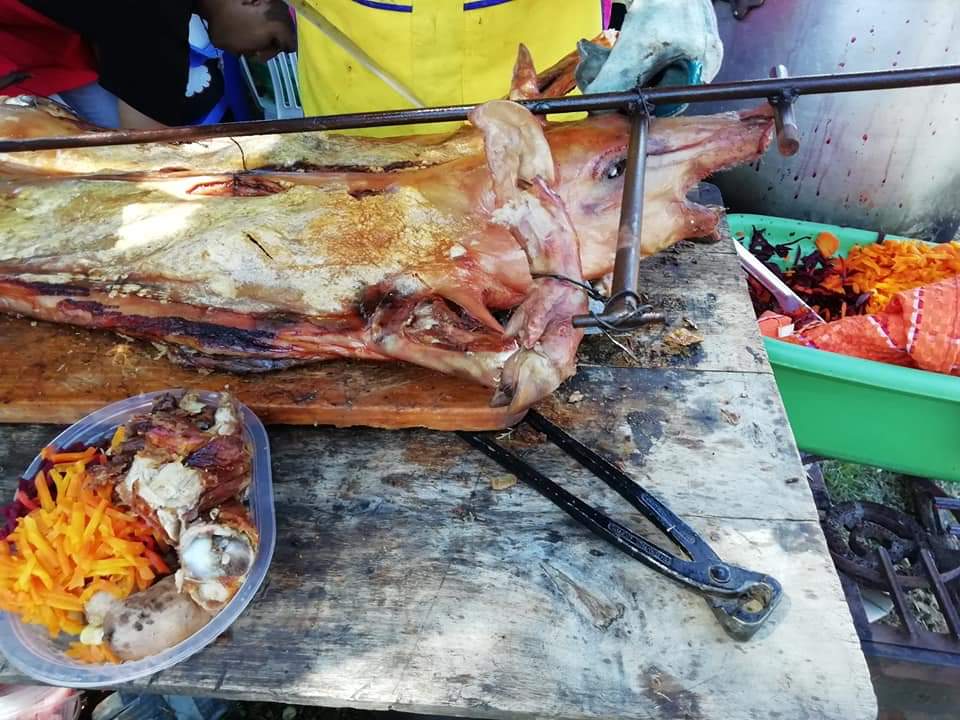
Wawitasny , CC BY-SA 3.0 , via Wikimedia Commons
12. Cajeta de Coco: Coconut Heaven
13. tostones: double-fried plantain delight.
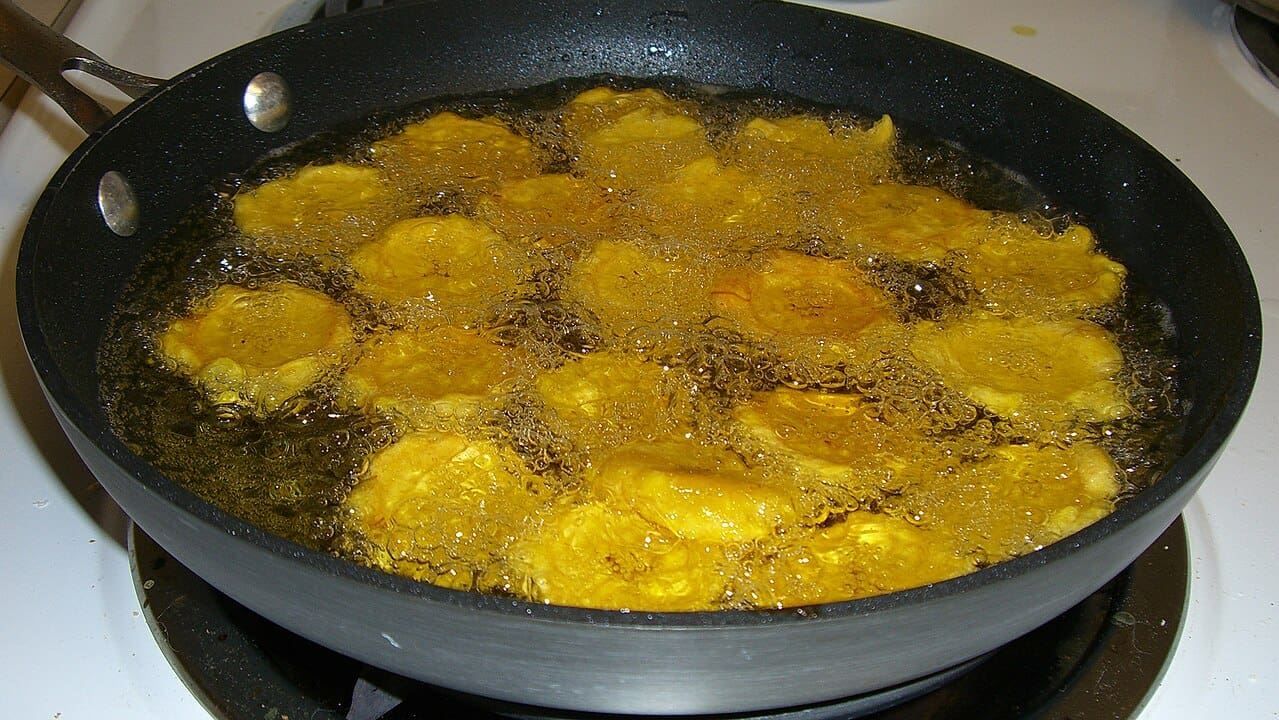
No machine-readable author provided. Dozenist assumed (based on copyright claims). , CC BY-SA 3.0 , via Wikimedia Commons
14. Riguas: Corn Pancakes of Joy
15. sopa de caracol: conch soup extravaganza.
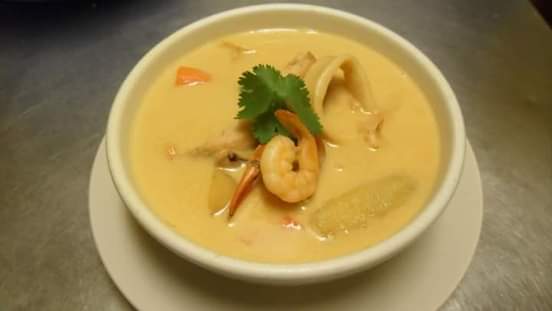
Jislorimers , CC BY-SA 4.0 , via Wikimedia Commons
16. Queso Frito: Fried Cheese Fiesta
17. guirila: corn tamales from the north.
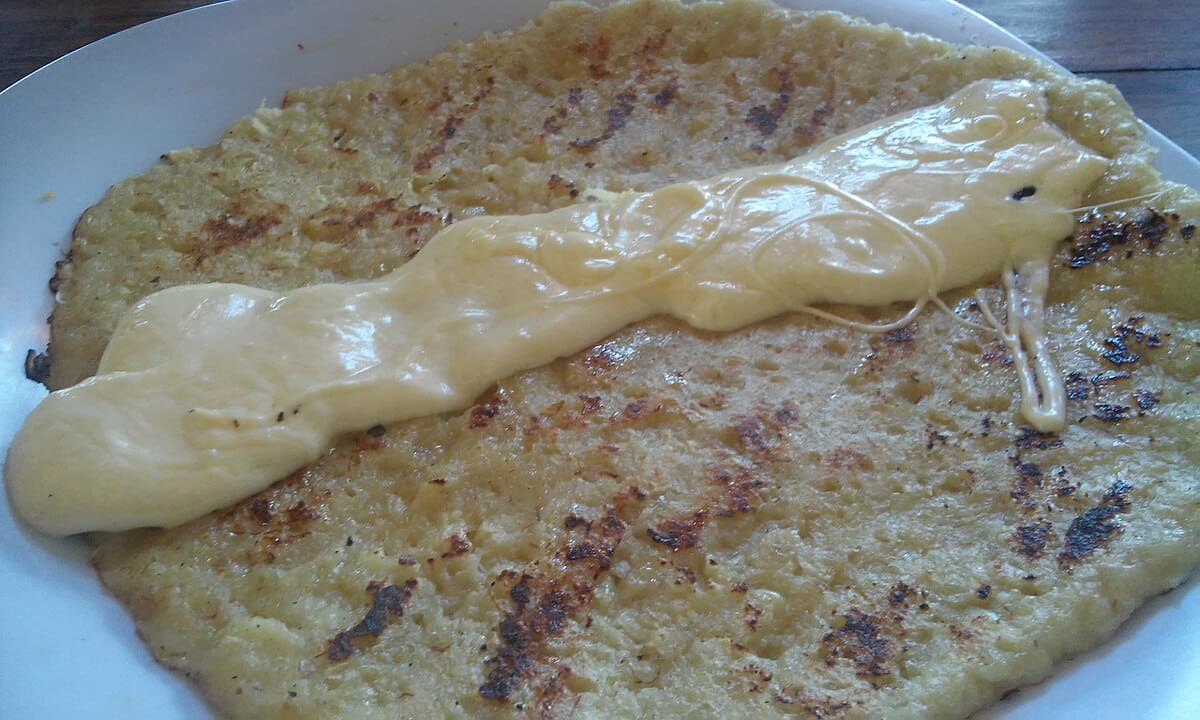
Byralaal , CC BY-SA 4.0 , via Wikimedia Commons
18. Ensalada de Repollo: Crunchy Cabbage Salad
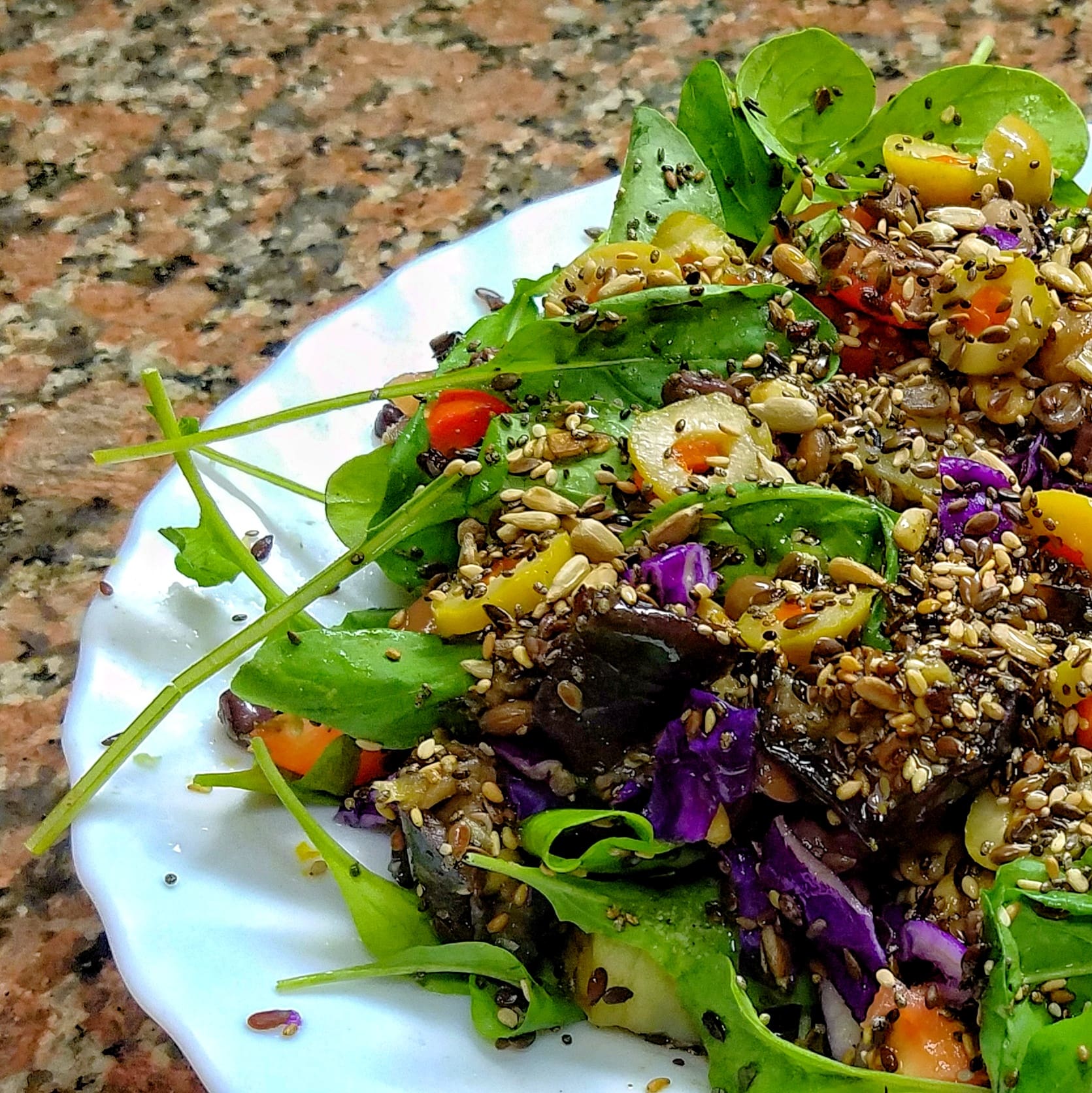
Dolapeart , CC BY-SA 4.0 , via Wikimedia Commons
19. Nica Burrito: A Nicaraguan Twist
20. pescado a la tipitapa: lake-style fish.
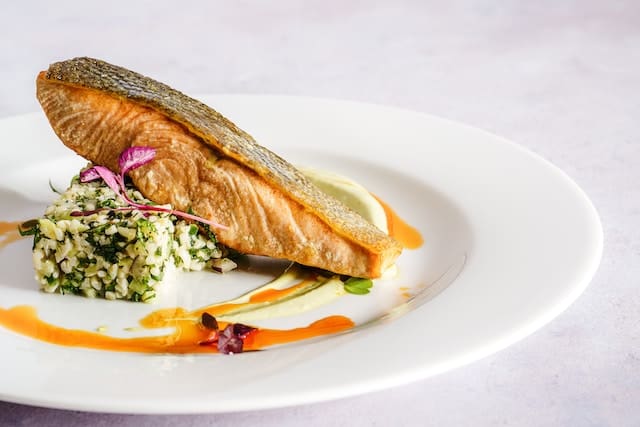
Photo by Sebastian Coman Photography on Unsplash
21. Raspado: Cool Down with Shaved Ice
22. rosquillas: corn dough delights.
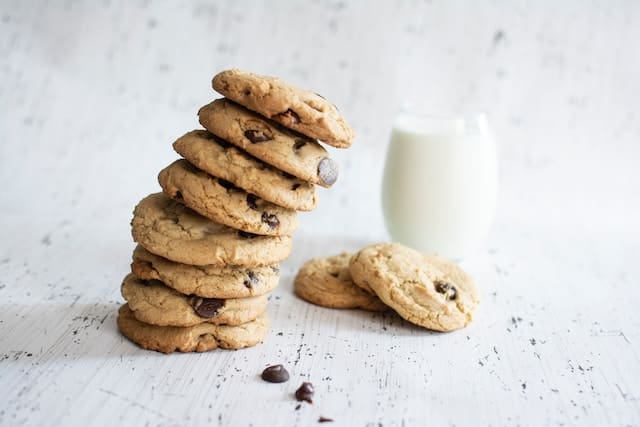
Photo by Christina Branco on Unsplash
23. Cacao de Bola: Chocolate Balls of Bliss
24. tres leches: the quintessential dessert.
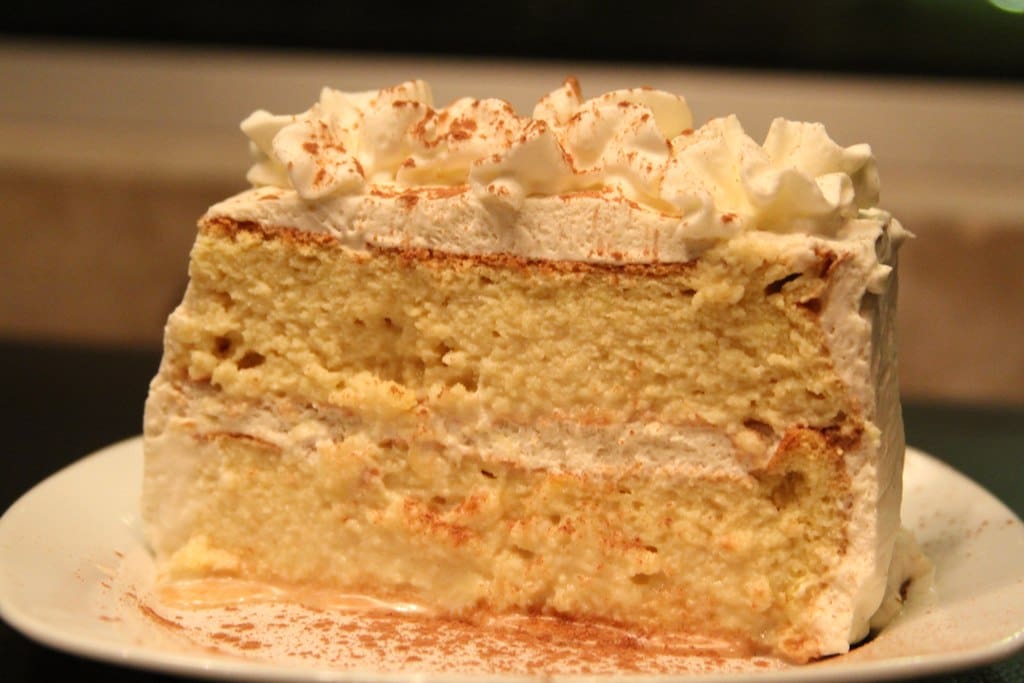
Hungry Dudes , CC BY 2.0 , via Wikimedia Commons
25. Chicha de Maíz: Corn Beverage Tradition
26. güirila con queso: corn cake with cheese.
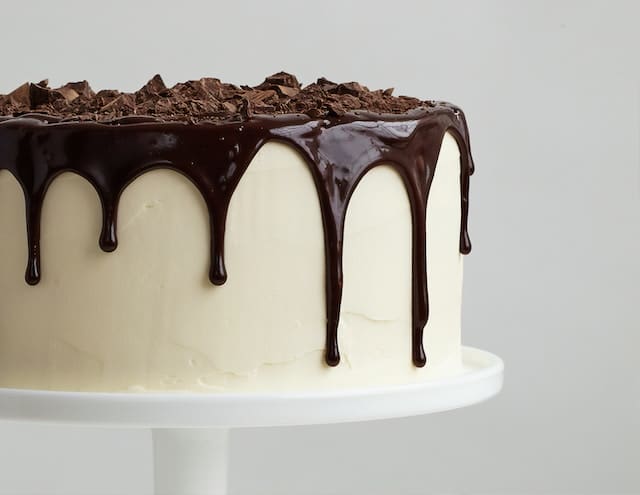
Photo by American Heritage Chocolate on Unsplash
27. Arroz Agüero: Festive Rice Dish
28. vaho: plantain-wrapped perfection.
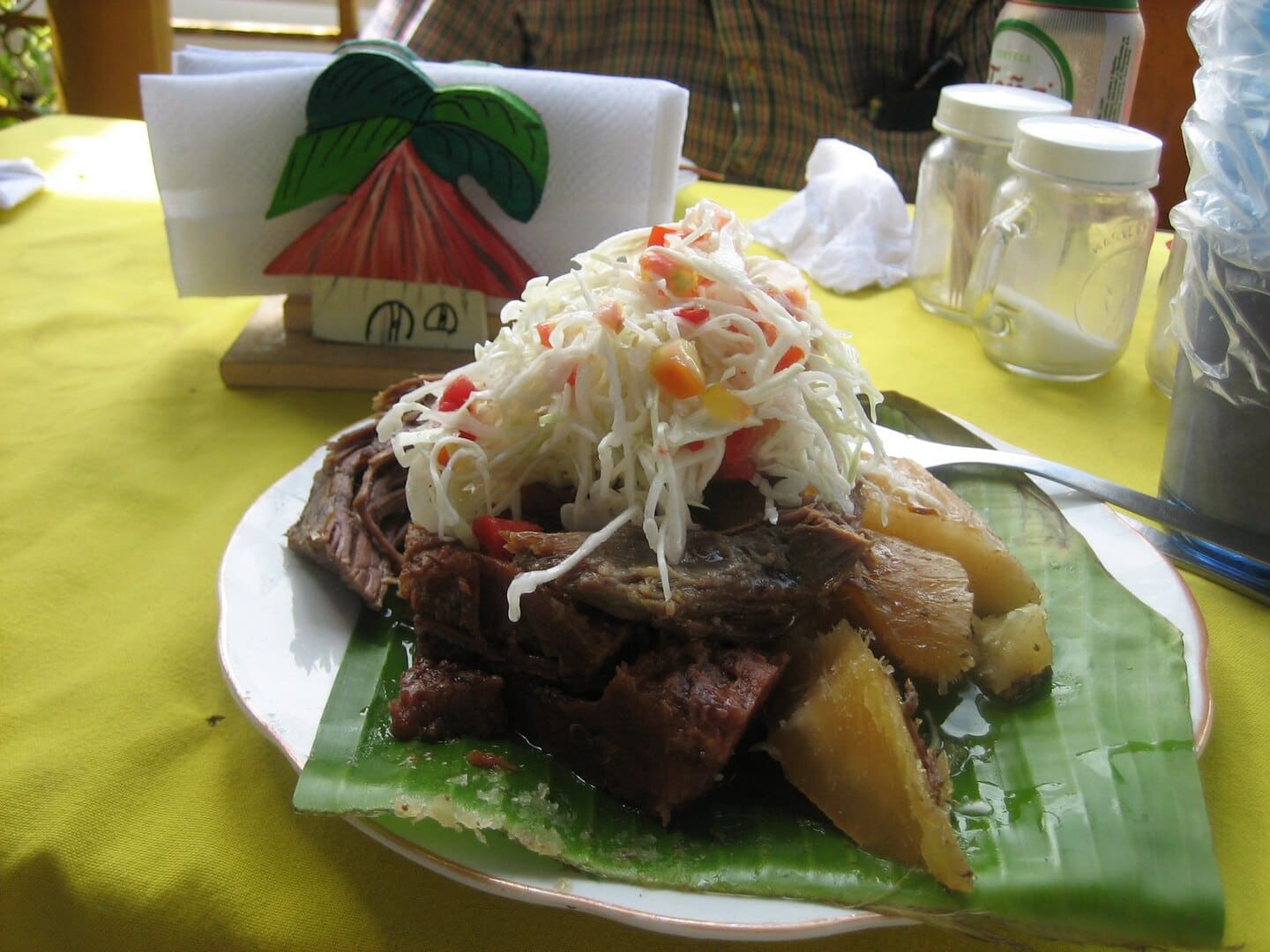
Antonio Carillo ([email protected]) , Attribution, via Wikimedia Commons
29. Baho: Banana Leaf-Wrapped Wonder
30. raspadilla con leche: shaved ice with milk.
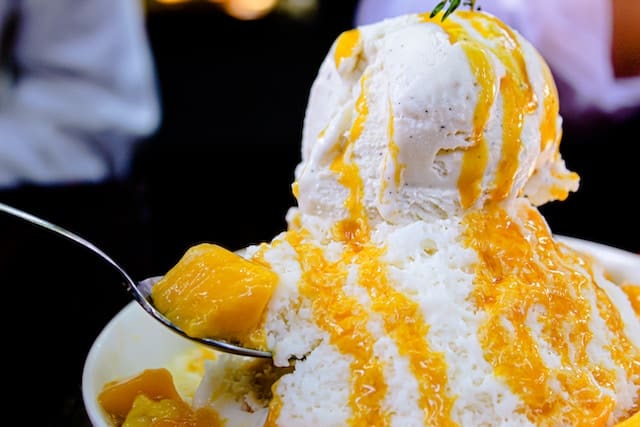
Photo by Crystal Jo on Unsplash
Planning a trip to Paris ? Get ready !
These are Amazon’s best-selling travel products that you may need for coming to Paris.
- The best travel book : Rick Steves – Paris 2023 – Learn more here
- Fodor’s Paris 2024 – Learn more here
Travel Gear
- Venture Pal Lightweight Backpack – Learn more here
- Samsonite Winfield 2 28″ Luggage – Learn more here
- Swig Savvy’s Stainless Steel Insulated Water Bottle – Learn more here
Check Amazon’s best-seller list for the most popular travel accessories. We sometimes read this list just to find out what new travel products people are buying.
Diane C. has been captivated by the cultures and traditions of people across the globe ever since she went backpacking through East Africa for her 22nd birthday. The customs and cuisine she experienced in Zanzibar instilled in her a desire to travel more and explore. Diane loves writing about the traditions and cultures of different countries and analysing the various laws and customs. When she is not on the move or immersed in a good book, she enjoys savouring a cup of masala tea. Diane is currently a trainee lawyer.
Hello & Welcome

Popular Articles

Top 20 Streets to See in Paris

Paris in two days


Top 15 Things to do Around the Eiffel Tower

The Best Way to Visit Paris Museums

Top 15 Fashion Stores in Le Marais
Visit europe with discover walks.
- Paris walking tours
- Montmartre walking tour
- Lisbon walking tours
- Prague walking tours
- Barcelona walking tours
- Private tours in Europe
- Privacy policy
© 2024 Charing Cross Corporation

15 Nicaraguan Foods You Need to Try in Nicaragua
By: Author Nomad Paradise
Posted on Published: July 17, 2021 - Last updated: October 3, 2022
Sharing is caring!
This website may contain affiliate links and advertising so that we can provide recipes and guides at no additional cost to you. Learn more
A Central American cuisine as diverse as it is flavorful, Nicaraguan food holds so many delights in store, depending on where in the country you are.
Built on a foundation of indigenous, Creole, and Spanish influences, Nicaragua’s Pacific-facing side offers tender beer and rich produce, while its Caribbean side is renowned for its salty-fresh seafood.
Wherever in Nicaragua you find yourself, wonderful food is in abundance. On your travels, be sure to try these 15 popular and traditional dishes, as recommended by a local writer.
Nicaraguan Foods To Try
Mains and sides, 1 – quesillo.
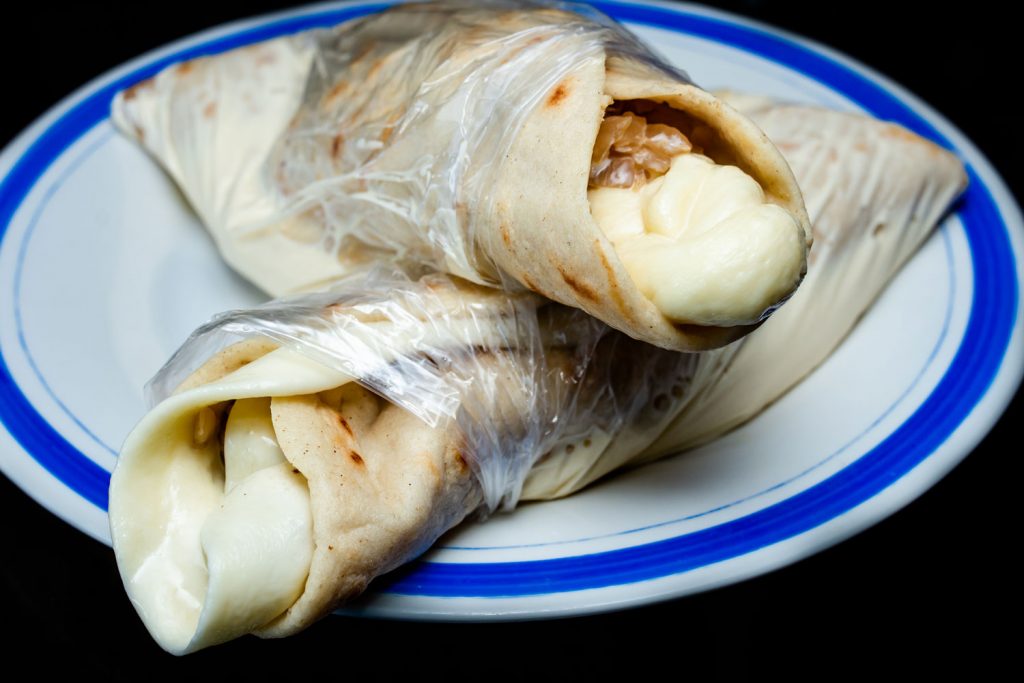
The word quesillo literally means “little cheese”, and will likely refer to a different food product depending on where you are in Latin America.
In Nicaragua, quesillo is a popular snack, originally from the León Department: both Nagarote and La Paz Centro are recognized to be its birthplace.
It is prepared by wrapping a freshly cooked corn tortilla around thin slices of the soft and chewy cheese (that immediately starts to melt) and then adding some pickled onions, a pinch of salt, and a generous spoonful of sour cream. According to locals, it should be eaten with a fresco de tiste, a traditional cacao-based beverage.
Quesillo is often sold at bus stops, stations, on roadsides, and especially on the carretera (highway) that connects Managua to Leon, where it is easy to spot the very many quesillo stands.
It can be eaten from a plate, but it is normally served in a plastic bag. Locals will tie the bag in a knot, tear off one of the corners, and then enjoy this salty treat by squeezing the cheese through the gap. It sure sounds like an odd technique, but once you will try it, you will never eat it in a different way!
2 – Güirilas

Güirilas are thicker tortillas, prepared with pureed sweet corn kernels and a pinch of salt. The pureed mix is scooped on top of a buttered plantain leaf, spread out by hand, covered with a second leaf, and then cooked or grilled on a hot griddle on both sides.
The dish is originally from the Northern region, and the best güirilas are found in and between Sebaco and Matagalpa. Anybody traveling through this area will want to stop on the way back to buy a few güirilas and other local specialties to bring home.
Güirilas are normally served warm on a plantain leaf, topped with sour cream and a big chunk of cuajada cheese. Many Nicaraguans like to enjoy them with a cup of coffee.
3 – Nacatamal
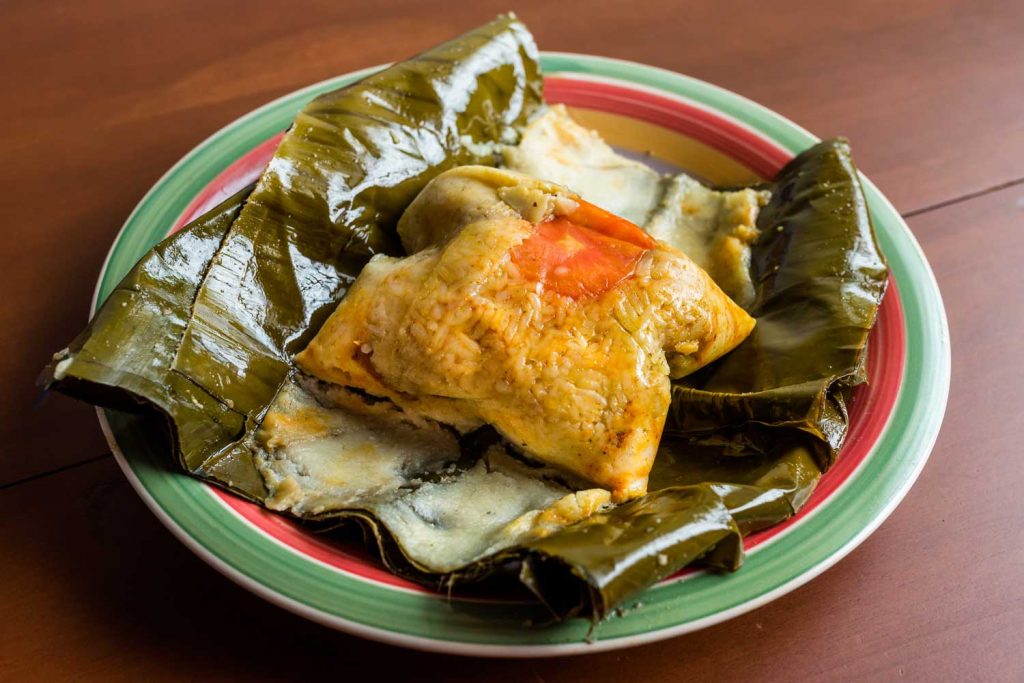
Nacatamal could be considered a Nicaraguan variation of the famous Mexican tamal . It is prepared with a corn dough that is stuffed with pork, potatoes, a minty herb called yerbabuena , and sometimes rice and other vegetables, then wrapped in a plantain leaf to be boiled.
Many Nicaraguans like to have nacatamal for breakfast/brunch on either Saturdays or Sundays – or both.
As for what to eat with it, asking a group of locals whether nacatamal should be eaten with bread or tortilla will likely start a never-ending and inconclusive debate that continues to this day, even online!
Coffee is the ideal drink to pair with nacatamal , but you can also have a cold drink, like a local fresco or some soda.
4 – Desayuno Típico

Desayuno típico or desayuno nica is a popular breakfast choice at any hotel, hostel, or house in Nicaragua, either with a cup of strong coffee, or various drinks and juices.
Essentially a combination of foods that make up a breakfast dish, in a similar vein to the British Full English, Desayuno típico varies by region. However, it commonly consists of a generous amount of Gallo Pinto (beans and rice, see #10 on this list) with eggs (fried or scrambled, together with vegetables and/or ham), a few squares of fresh or fried cheese, fried sweet plantains and corn tortillas.
It is always possible to request some extras, such as avocado, sour cream, and pico de gallo, which is prepared with finely chopped onions, green peppers, and tomatoes in either vinegar or lime juice.
When ordering a Desayuno Típico in a hotel or comedor, chunks of fresh fruit may also be offered on the side, such as banana, pineapple, watermelon, and cantaloupe.
5 – Indio Viejo
Most Nicaraguans agree that indio viejo is one of the country’s most popular and oldest dishes, dating back to pre-Columbian times. Nowadays it is mostly reserved for special occasions, such as local holidays, family celebrations, and weddings.
Indio viejo is a thick stew, combining a simple but flavorsome handful of native and modern-day ingredients.
It consists firstly of shredded beef, quickly fried with vegetables, enhanced with ingredients such as the minty herb yerbabuena , bitter orange ( naranja agria ) and annatto paste ( achiote ).
Next, a corn mixture, prepared by blending old tortillas soaked in water or broth overnight, is added to thicken the dish, and the stew is left to simmer for about 10 minutes.
Finally, Indio viejo is served hot with tostones (fried green plantains) and cubes of a local curd cheese called cuajada .
A Nicaraguan favorite, its name even means ‘Old Indian’, reinforcing the dish’s importance as one of the foundation foods the indigenous people in the region used to prepare.
6 – Caballo Bayo
More than a dish itself, Caballo Bayo is a very typical and scenographic buffet, that demonstrates a variety of different traditional preparations from Nicaraguan gastronomy, kept in clay bowls and pots. These pots keep food warm for longer and are called inditos, as they are decorated to depict the face of indigenous people.
More than a dish itself, Caballo Bayo is a gathering of traditional Nicaraguan dishes, prepared and served in traditional clay pots known as inditos , that date back to the indigenous era.
Served buffet-style, the inditos allow the food to keep warm for longer and are decorated to depict the faces of indigenous people.
There are no written rules for Caballo Bayo , and it can be customized according to one’s taste and budget. Some of the most common dishes include mashed red beans, shredded or fried beef, pork and chicken, moronga (blood sausage), chicharrón ( fried pork belly or pork rinds), fried sweet plantain, guacamole , pico de gallo , shredded or crumbled cheese and sour cream, and normally a typical sweet or dessert to end the meal with.
Caballo Bayo is largely prepared for celebrations and holidays, and the dishes are commonly served in clay or wooden dishes, covered with a plantain leaf.
7 – Gallina Rellena
Gallina Rellena means “stuffed hen”, and it is a traditional dish eaten in Nicaragua throughout December. The feast for the Conception of the Virgin Mary opens the Gallina Rellena season, and the dish continues to be popular right through Christmas and to New Year.
Traditionally, to prepare this Nicaraguan favorite the hen is first brined, then stuffed with a creamy, sweet and sour stuffing, before being cooked in the oven.
The stuffing, or relleno , varies from household to household, but commonly pork meat and a range of vegetables, including garlic, onions, celery, chayote, carrots, green peppers, and potatoes, are used in the stuffing.
Breadcrumbs, milk, wine, butter, mustard, and tomato sauce help bind the stuffing together, while a range of additional ingredients, such as raisins, capers, olives, and dried prunes, can be found in different variations.
Served with plenty of bread, Gallina Rellena is a must-try Nicaraguan dish over the Christmas period. Locals even enjoy the next day serving of stuffing, or recalentado , even more!
8 – Baho or Vaho
Baho is one of the most typical dishes of Nicaraguan cuisine, normally prepared or bought for lunch on Sundays.
The dish consists of a simple but flavorsome combination of beef (normally brisket), vegetables, plantains (both green and ripe) and yuca (cassava). The dish requires ample time to prepare because the meat needs to be either marinated overnight or covered in salt and left out in the sun to cure.
Once the meat is ready, the pot then needs to be prepared in a specific way so that the ingredients – that are placed in a specific order and wrapped in plantain leaves – do not touch the water.
Baho is finally steamed over water for about 4 hours and served on a plantain leaf. When served, each person normally receives a piece of both green and ripe plantain, one piece of yuca , and one portion of meat, topped with cabbage salad.
9 – Vigorón

Vigorón is recognized to be originally from Granada, where it was first created in 1914, but it is very popular everywhere in Nicaragua. It can be considered a street food, since it is mostly sold at bus stations and stops, markets, on the roadsides, or by street vendors.
It is sold wrapped in a plantain leaf, and locals will simply unwrap the leaf and eat the dish with their hands, no cutlery required!
Vigorón consists of a wholesome base of yuca (cassava), boiled to a soft and creamy consistency, with crunchy pieces of chicharrón or charrasca (fried pork belly or pork rinds), topped with a repollo salad made of cabbage, carrots, and tomatoes, drizzled in vinegar and seasoned with salt. It is utterly delicious.
10 – Gallo Pinto

While “rice and beans” is probably the go-to dish Latin America, you will find a slightly different version of this staple in every country and household.
Gallo Pinto (meaning along the lines of “spotted rooster” due to its color) is both the Nicaraguan and Costa Rican national dish. It can be served at any time of the day, but is wildly popular at breakfast, often as a component of the famous Desayuno Típico.
Gallo Pinto is the perfect recipe to “recycle” leftover rice from an unfinished meal – or better yet, the previous day – which is re-fried together with onions and local red beans (called seda). Of course, it can be made from freshly-cooked rice (rather than leftover rice), but it will not taste as good!
11 – Rond ó n
Rondón is a Jamaican one-pot dish, very popular on the Atlantic coast of Nicaragua and many other Caribbean countries.
The name Rondón is one of the many ways people refer to this dish (run dun, fling-me-far, and fling me are three of many), as it comes from the term “run down”, referring to the act of using whatever ingredients you “run down” to at the end of the week.
In Nicaragua, Rondón is a thick, spicy and flavourful stew, that is served with toasted coconut and tostones (fried green plantain).
The dish traditionally includes seafood, such as lobster, shrimp, and fish, but it is not uncommon to see other kinds of meat in this stew, including beef, pork, or even turtle meat.
Many different root vegetables (potatoes, plantains, yuca , quequisque , carrots, peppers) and typical Creole spices are also used, cooked together with meat, fish stock, and fresh coconut milk.
Desserts and Beverages
12 – pinol, pinolillo & co..

Pinol and Pinolillo are sweet traditional drinks and some of the most famous symbols of Nicaragua. In fact, it is very common to hear locals refer to themselves as Pinoleros or Pinoleras with pride!
Pinolillo is made of toasted white corn, a much smaller proportion of toasted cacao beans, and spices such as cinnamon, allspice, and cloves, all ground together.
Pinol is much simpler, consisting only of corn and spices. Both Pinol and Pinolillo are prepared by adding water or milk and the desired amount of sugar to the dry mixture to obtain a drink with a slightly gritty texture.
Variations of these recipes exist, such as tibio, which is a thicker drink that is served warm. It is prepared by cooking Pinol or Pinolillo powder in water or milk for some time, and traditionally consumed early in the morning or just before bed.
Tiste on the other hand is served cold, but the mixture used to prepare this beverage comes as a dough rather than powder, because of significantly higher cacao content.
All these drinks – and others such as semilla de jicaro and pozol – are traditionally served in special handcrafted gourds called jicaras or cumbos , which are often purchased by tourists as souvenirs in many countries of Latin America. These containers are made from recycling the shells from the jicaro ( Crescentia alata ) tree fruits, that are emptied and dried before they can be decorated.
13 – Pio V / Pio Quinto
Pio V is a dessert that is served for special occasions, particularly at Christmas. The origin behind its name is not precisely known, but it is believed to have been named after Pope Pius V by Dona Juana Lazo de Figueroa.
This is the name of the Spanish chef who was tasked with creating a dessert to impress the newly appointed Governor of Nicaragua, Don Alonso de Casaos, in León, December 1566.
She was able to combine native ingredients with recipes from the “Old World” in such a way that Pio V is still one of the most appreciated desserts of Nicaraguan cuisine to this day.
The dish consists of three elements, wisely combined to deliver an extraordinary contrast of flavors and textures: a soft sponge cake called marquesote , an alcoholic syrup called miel or sopa borracha (literally drunken soup, given the presence of rum), and a Spanish natilla-inspired custard cream ( manjar or atol) that will reach the right thickness only with the addition of corn starch.
Sprinkled cinnamon is the final touch to this magnificent dessert, while raisins and dried prunes soaked in local rum are often added to the recipe for both flavor and decadence.
14 – Dulces Marianos

Dulces Marianos is one name given to the many different, colorful sweets that are typically sold from mid-November to January in Nicaragua. This timespan covers both the Christmas holidays and La Purísima , the most popular feast for most locals.
La Purísima is a nine-day devotion dedicated to the Conception of the Virgin Mary that is celebrated between the 28 th of November and the 8 th of December. During each novena day family, friends and neighbors gather together to pray and sing to the Virgin Mary, and exchange sweets, candies, and treats.
Such sweets can be bought per piece, in pre-packed trays, or handmade baskets, and always include some fudges. Common sights include bright pink coconut fudge ( cajeta de coco ), milk fudge ( cajeta de leche ), papaya fudge ( cajeta de papaya or piñonates ), and coyolito (fudge made from coyol , a special palm tree fruit).
Another beloved staple of Dulces Marianos is Bienmesabe , a dessert of fried green plantain strips, caramelized in cane sugar.
Finally, no La Purísima is complete without Gofio , a candy originally from the North of Nicaragua that comes in diamond-shaped pieces. It is made with pinol (toasted ground white corn), spices (ginger, nutmeg, anise, cinnamon), and a caramel prepared with black cane sugar, called miel .
15 – Buñuelos
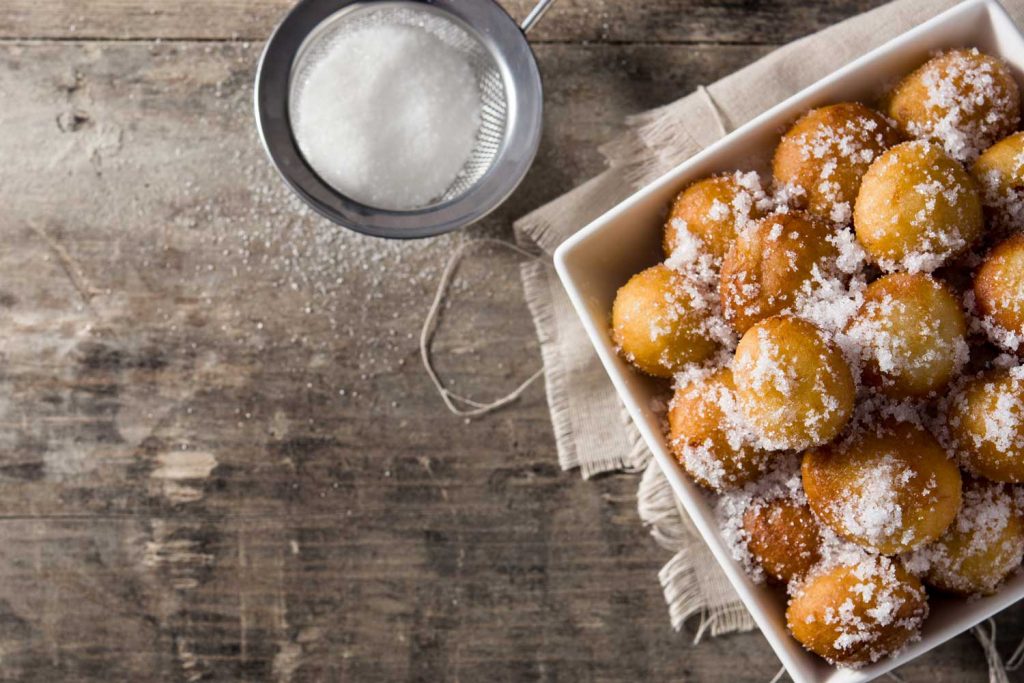
Buñuelos exist in many countries in Latin America and originate from Spain. These sweet fried balls are a joy to try, and are often dipped or covered in syrup or honey.
What makes Nicaraguan buñuelos unique however are the ingredients used to prepare the dough. While in other countries flours and starches are mixed with local cheese and the rest of the ingredients (including baking powder, eggs, and so forth), this variation rather uses grated raw yuca (cassava).
In Nicaragua, the serving syrup is flavored with cinnamon, and either served separately in a little cup or poured on top of the buñuelos .
Nicaraguan Foods Summary
Central America is home to some truly undiscovered gems when it comes to cuisines, and Nicaragua is very much on that coveted list.
Nicaragua’s breathtaking geography and diverse landscape open it up to an astonishing array of natural ingredients, delicious meat, and tender seafood.
With both Pacific and Caribbean flavors layered atop a wholesome foundation of indigenous dishes, Nicaraguan food offers flavors and combinations totally unique to the region.
Any trip to this jaw-droppingly beautiful country is simply not complete without trying as many of the traditional dishes as possible. Food is an integral part of Central American culture and plays a huge role in shaping society, bringing families together for celebrations and quality time across the country.
You Might Also Like to Read
- Popular Honduran Foods You Need to Try
- Most Popular Costa Rican Foods to Try
- Panamanian Foods You Need to Try
Save and Pin for Later
Keep these Nicaraguan foods in a safe place for an upcoming trip, by saving this article to one of your Pinterest boards.
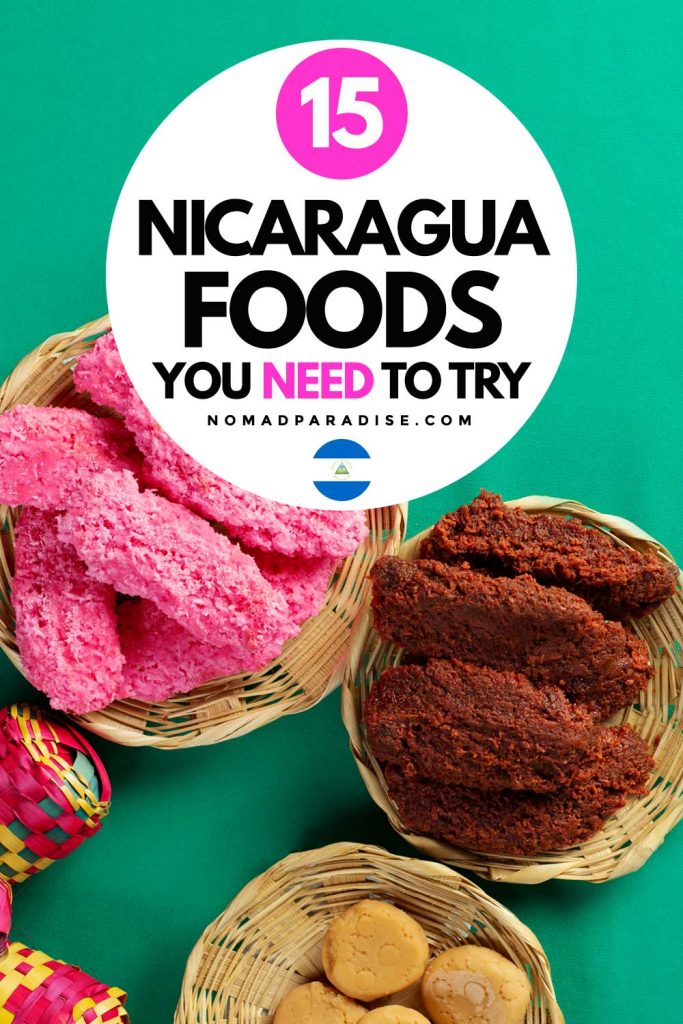
Contributor: Camilla De Totero is a multilingual translator and content writer, hailing from Matagalpa, Nicaragua, with a passion for sharing her home cuisine and culture through her writing.
Images licensed via Shutterstock
Hey there! We are Dale and Doina, the founders of Nomad Paradise. We traveled full-time for over three years, and while we now have a home base in the U.K., continue to take trips abroad to visit new places and try new cuisines and foods. Our food guides are curated with the guidance of local foodies, and their contribution is indicated under each article. We also cook the foods we try abroad, and you can discover how to make them in our 'recipes from around the world' category.
View all posts
Friday 14th of October 2022
I’m from Nicaragua, and this article it’s beautiful, thank you for show our culinary traditions, congratulations
Wednesday 29th of December 2021
This was a good article enlightening me with recipes from my native country. I will save it for future references. Thanks
Saturday 14th of August 2021
This article actually has an appropriate selection of Nicaraguan dishes. Good job!
WalterJohn Lacayo
Monday 9th of August 2021
Beautifully Illustrated article about the most delicious typical dishes from Nicaragua. Congratulations Camille Totero.
Thursday 22nd of July 2021
I'm from Nicaragua and have never heard of Pio V🤔
- PLACES TO GO
- THINGS TO DO
- TRAVEL TIPS
- LOCAL CULTURE
- Ometepe Island
- Corn Islands
- Emerald Coast
- Northern Nicaragua

- GETTING AROUND
- BORDER CROSSING

What Is Traditional Nicaraguan Food? 15 Typical Dishes
- Hidden Nicaragua
- February 16, 2024
- No Comments

Nicaragua is known for its exotic wildlife, rugged volcano adventures, and historic cities. But you need fuel for all that exploring. That’s why this tiny country has mastered the art of gastronomy that’s flavorful, filling, and fun to eat.
With lots of plantains, cheese, and maíz , you’ll never go hungry in Nicaragua. Here are 15 traditional Nicaraguan foods that will give you a taste of what to expect on your visit:
Gallo Pinto

Gallo pinto might just be the most popular food in Nicaragua. It sounds simple enough–after all, what’s so special about rice and beans? But when it’s coming from a Nicaraguan kitchen, these two humble ingredients become a side dish to dream about.
Nicaragua’s gallo pinto is a blend of red beans, rice, and onion cooked to perfection. You’ll find it as a staple in the typical Nicaraguan breakfast, but it can be eaten at every meal.
HN Hint : On the Caribbean coast, Nicaraguans cook gallo pinto with coconut for a tropical kick.
Plantains are another favorite food in Nicaragua. While you can find them boiled, crispy, or sweet, fried tostones are a classic variation. Made from smashed green plantains, these soft round chips are dense and chewy. A sprinkle of salt on top complements the slight sweetness, pairing well with ice-cold cervezas.
This typical Nicaraguan food often comes with a cube of fried cheese on top – tostones con queso is an easy dish to share.
León holds the title for inventing this traditional Nicaraguan food. Quesillo is considered a street food that’s somewhere between a snack and a meal. Typically served in a plastic bag, Nicaraguan quesillo is a handheld tortilla wrapped around a slice of melty cheese, pickled onion. Finish it off with crema, and you have yourself a cheese lover’s dream!
You can also find quesillo served at larger Nicaraguan restaurants. In this case, the tortilla is usually presented flat on a plate and eaten with a knife and fork (but where’s the fun in that?).
Güirila is a traditional Nicaraguan food best known in the Matagalpa region. It’s a specialty street food that’s simple enough, but strong in its distinctive sweet and sour flavor .
The foundation of güirila is a sweet tortilla made from young white corn. The maize is pureed, grilled flat between two banana leaves, then typically topped with cuajada , a type of cheese curd. It can also be served with meat to make the güirila tortilla more hearty. If you get the chance to try this traditional Nicaraguan food, take it! You won’t find it everywhere.

Vigorón is Granada’s signature dish. It’s a typical Nicaraguan dish that you could describe as “everything but the kitchen sink.” Stacked high on top of a banana leaf is a heap of boiled yuca (cassava root), fried chicharrones (pork rinds), shredded cabbage soaked in vinegar, and diced tomatoes. The result is a busy blend of flavors and textures ranging from sharp and tart to soft and starchy. This is one messy dish, so you can eat it with your hands, but use a fork if possible.
HN Hint : For the best vigorón in Granada, ask for a woman called “La Abuela.”

Available only on weekends, nacatamal is a traditional breakfast dish in Nicaragua. Nacatamales are heavy –Nicaraguans enjoy them with black coffee, or occasionally cola (don’t try to pair this food with beer unless you want your stomach to burst!).
Nacatamales are held together by a thick masa de maíz . The hefty filling consists of achiote pork, rice, potato, onion, tomato, and orange juice, all of which gets tucked tightly into a banana leaf wrapper. Some variations also include fruit. The stuffed leaves are then steamed over boiling water until fully cooked and ready to eat. It’s a rich, indulgent meal to start your day.
HN Hint : The Nicaraguan nacatamal is made with love–so much so that you won’t typically find it at a restaurant. Instead, look for homes with a small sign that says “HAY NACATAMAL” on weekends (particularly Sundays) and get it directly from local families.
Like the traditional Nicaraguan dish nacatamal, baho is predominantly offered on weekends or special occasions. It’s a savory feast with slow-cooked beef as the star . Nicaraguan baho is steamed in an enormous vat lined with banana leaves. The base is prepared by arranging the core ingredients into concentric circles: alternating green and ripe plantains form the outer ring, while chunks of yuca are placed inside. On top lies marinated beef, more yuca, and sliced onion, peppers, and tomatoes.
Often served with a vinegar cabbage slaw, baho is decadent and delicious. Get it from Mercado Central in León.
Indio Viejo

Indio viejo is Nicaraguan through and through. It is one of the most traditional dishes you can enjoy in the country. Legend has it that this thick stew was named after an indigenous leader fibbed to Spanish colonizers that he was eating “an old Indian” to avoid handing over his meal. It worked–and the indio viejo remains popular today. Thickened by masa dough, indio viejo is easily spotted by its porridge-like consistency and signature deep orange color, which comes from achiote spice.
If you like maize, sour orange, and shredded beef, then try this typical dish the next time you’re in Nicaragua.
Sopa de Mondongo

Feeling adventurous? Pronounced “moon don’t go,” sopa de mondongo is made with tripe . This typical dish is traditional to Masatepe, but you can find it just about anywhere in Nicaragua. Packed with meat and vegetables, this traditional tomato-based soup is flavored with citrus and a sprig of mint. It is sometimes served with avocado and cheese.
Nicaraguans believe that sopa de mondongo will heal anything, so if you have one too many cervezas, this might be the traditional food for you!
Arroz a la Valenciana
Much like Spanish paella, Nicaraguan arroz a la Valenciana is a rice skillet made to serve a crowd . Nicaragua prepares this typical dish with a tomato base, sweet peppers and peas, and a generous amount of meat. There is a mix of proteins in traditional Nicaraguan arroz a la valenciana: chorizo, shredded chicken, ham, and sliced hotdogs are all popular additions.
HN Hint : Arroz a la Valenciana is prepared differently on the Caribbean side of Nicaragua. It is a creamier dish with tropical coconut flavor.
Arroz a la Valenciana is sometimes called arroz de piñata because it is often cooked for birthdays and special occasions.
Pescado a la Tipitapa
A traditional Nicaragua food for seafood-lovers hails from Tipitapa, in the Managua region. Usually made with guapote (rainbow bass) or red snapper, pescado a la Tipitapa is a typical dish that fries the entire fish whole.
Pescado a la Tipitapa is deboned, lightly breaded, and covered in a slightly sweet tomato sauce with peppers and onions. The fish is incredibly fresh –in true Nicaragua fashion, it’s almost always caught the same day it’s served. Expect a large platter complete with rice, tostones or fries, and a small salad when you order this dish. Don’t forget to add a squeeze of lime on top!
Buñuelos are a favorite Nicaraguan dessert. They’re essentially little donut holes –think hush puppies, or dense beignets. Yuca forms the dough for this dessert, but in Nicaragua it is typically mixed with cheese. The crispy fritters are drizzled in a cinnamon sugar-infused honey and served hot.
Nicaraguans indulge in buñuelos on weekends and holidays like Easter. They’re quick and easy to prepare, but taste absolutely decadent. Pair them with Nicaraguan coffee to round out the dessert.
Lovingly made by hand, rosquillas are traditional Nicaraguan cookies . They look like small golden rings and have a little crunch. Rosquillas are simple cookies with a touch of sweetness. Much like Italian pastries, they don’t require much beyond the basics: fine corn flour ( masa harina ), Nicaraguan cheese ( queso seco ), butter, eggs, and cane sugar ( panela ).
HN Hint : On special occasions, rosquilla dough is baked into a softer, square dessert called cosas de horno .
Rosquillas are traditionally baked for Semana Santa (or Holy Week) and Easter. The toasted cookies are meant to be dipped in hot coffee, then eaten when soaked through with flavor. You can sample the most traditional Nicaraguan rosquillas in Somoto , but they are found all over the country.
Arroz con Leche

Arroz con leche is a creamy rice pudding topped with ground cinnamon. This traditional Nicaraguan food is as sweet and rich as it is comforting . This typical dish is infused with spices by adding cinnamon sticks to the boiling rice water. For extra flavor, you will sometimes find arroz con leche with vanilla and raisins.
Served hot or cold, arroz con leche is a mouthwatering Nicaraguan dessert that’s easy to make and even easier to love.
Tres Leches Cake

If there’s one sweet treat that’s beloved in Nicaragua, it’s tres leches cake . Though many Latin countries claim this popular dessert, Nicaraguans will tell you that it belongs to the Land of Lakes and Volcanoes.
As the name suggests, an airy sponge cake is soaked in three different types of milk: evaporated milk, sweetened condensed milk, and heavy cream. A whipped frosting and single ruby red fruit (usually a cherry or strawberry) adorn each slice of this delicious Nicaraguan dish. If you want to celebrate a birthday Nicaraguan style, you can’t go wrong with tres leches cake.
These 15 popular Nicaraguan foods are just a small sample of all that you can enjoy on your visit . From sweet plantains to savory baho, heavy nacatamal to honey-dipped buñuelos, and everything in between, you’ll have your hands and stomach full of rich fare in Nicaragua.
Have you tried any of these traditional Nicaraguan foods? Which was your favorite? Let us know in the comments below!
PIN this post to save it for later.

Meet your Tour Guides
Hola! We’re Gail & Luis, a team of two with a deep love for Nicaragua. Luis, a professional tour guide, is the knowledgeable source behind the blog. Gail, an American writer, is the voice.
We started this blog as a way to stay connected from afar and support Nicaragua in our own small way.
Today, our mission is to open hearts and minds to the wonders of Nicaragua and make it easier than ever to start planning your trip.
YOU MAY ALSO LIKE:

STAY IN THE KNOW:
Subscribe to our email list to be the first to know when we reveal new Nicaraguan hidden gems!
Leave a Comment
Have questions or comments on this post drop them below.
SUBSCRIBE FOR THE EMAIL LIST

Legal || Copyright 2024 @ Hidden Nicaragua || Website Design by Honeywave Creative
Cookie policy

Nicaraguan Food: Typical and Traditional Cuisine
By: Author Maria Laborde
Posted on Last updated: January 18, 2023
Like in many Latin American countries, Nicaraguan food goes back to pre-Columbian times and has been transformed and influenced over time.
This is evident in the name of some of its dishes and the ingredients and spices used in them.
Most of the traditional Nicaragua menu is known as “criollo,” which is how Indian-Spanish fusion cuisine is referred to throughout most of the Caribbean, Central, and South America.
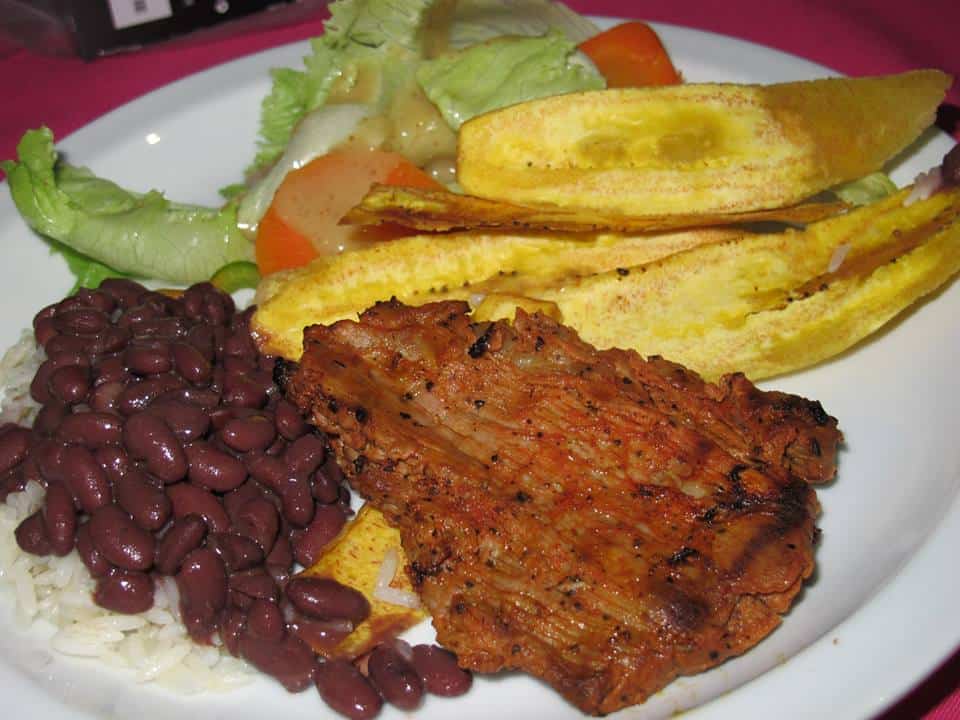
Table of Contents
Indio Viejo
Tajadas con queso, caballo bayo, local fish with tropical fruit and vegetables, rondón, gallo pinto con coco, pan de coco.
There is a significant difference between the Pacific, Atlantic/Caribbean, Northern, and Central Nicaraguan foods—particularly the type of vegetables and spices consumed.
Yet, there is one omnipresent base ingredient: corn .
Its extensive usage goes back to ancient indigenous cultures in the Americas, particularly Mexico, Honduras , El Salvador , Nicaragua , etc. Furthermore, this ingredient is not limited to food.
It's also used in various traditional drinks such as Pinole (pre-Columbian drink with cocoa, cinnamon, and toasted ground corn), Chicha (fermented corn beer), and other fruit-based nonalcoholic beverages.
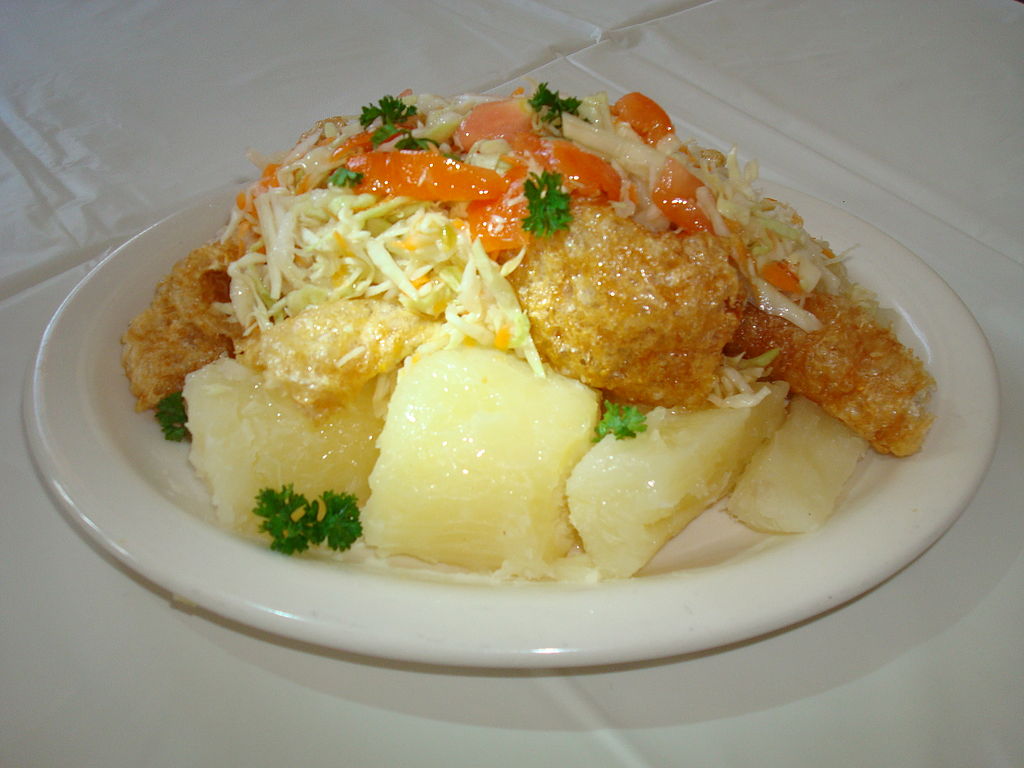
Ingredients typically found in the tropics triumph here as well.
These include fruits such as mangoes, jocotes , papaya, plantains, avocado, and tamarind, in addition to starchy root vegetables such as cassava and quequisque (also known as Malanga or yautia ).
Herbs and spices include garlic, onions, tomatoes, cilantro, oregano, achiote (annatto), cacao, and cinnamon.
They portray how well-seasoned, yet non-spicy, Nicaraguan cuisine is. Moreover, how the mixing of the sweet, savory, and sour is the norm—especially when it comes to seafood (to kill that “fishy” taste and smell).
Other unique features of Nicaraguan recipes are animal innards such as tails, stomachs, brains , testicles, skin (particularly of pigs), feet, and even blood (to make the traditional moronga ).
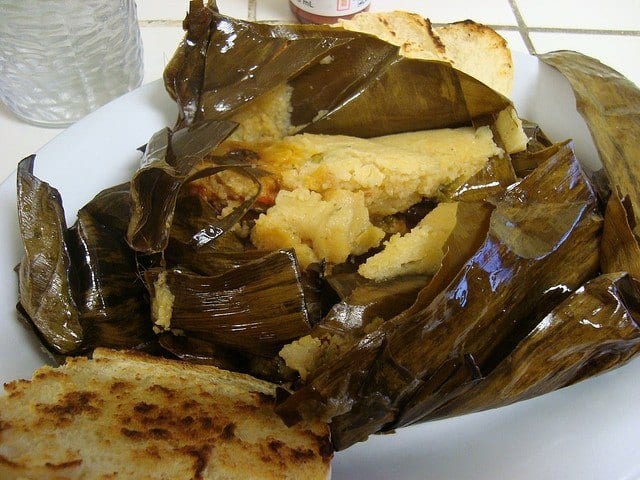
Central and Pacific Cuisine
The inhabitants of the Central and Pacific regions of Nicaragua prefer simple gallo pinto (rice and black beans, cooked with oil in a frying pan ) with either beef, chicken, pork, or (particularly on the coast) seafood—alongside fried snacks and dairy products.
Sample dishes include:
Indio Viejo is a thick chicken or beef stew made with cornflour “masa,” garlic, onions, sweet peppers, tomatoes, and a squirt of sour orange.
Using achiote or annatto also gives the dish an attractive deep-orange color.
Quesillo is a thick corn tortilla with soft cheese, pickled onions, and sour cream.
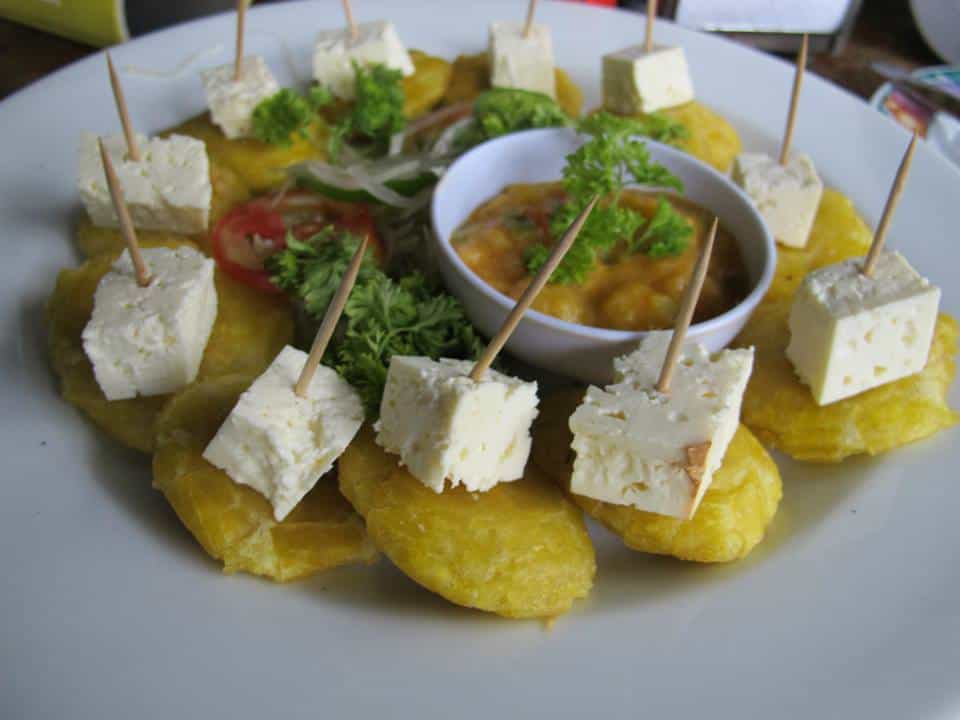
Tajadas con queso is fried plantains, sliced thin or thick, with salty local cheese & repollo (cabbage salad) as toppings.
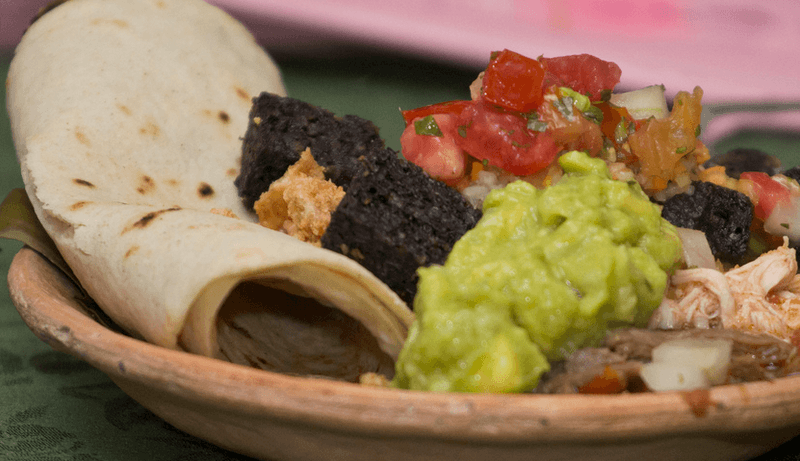
Caballo Bayo is the Nicaraguan twist on Mexican fajitas: many ingredients are typically served in clay pots, from which guests pick their favorites to make their tortillas.
Fillings and toppings include fried/shredded beef or chicken, mashed beans, creole chorizo, guacamole, pico de gallo, sour cream, moronga (pork blood sausage), chicharrón , green & red sauces.
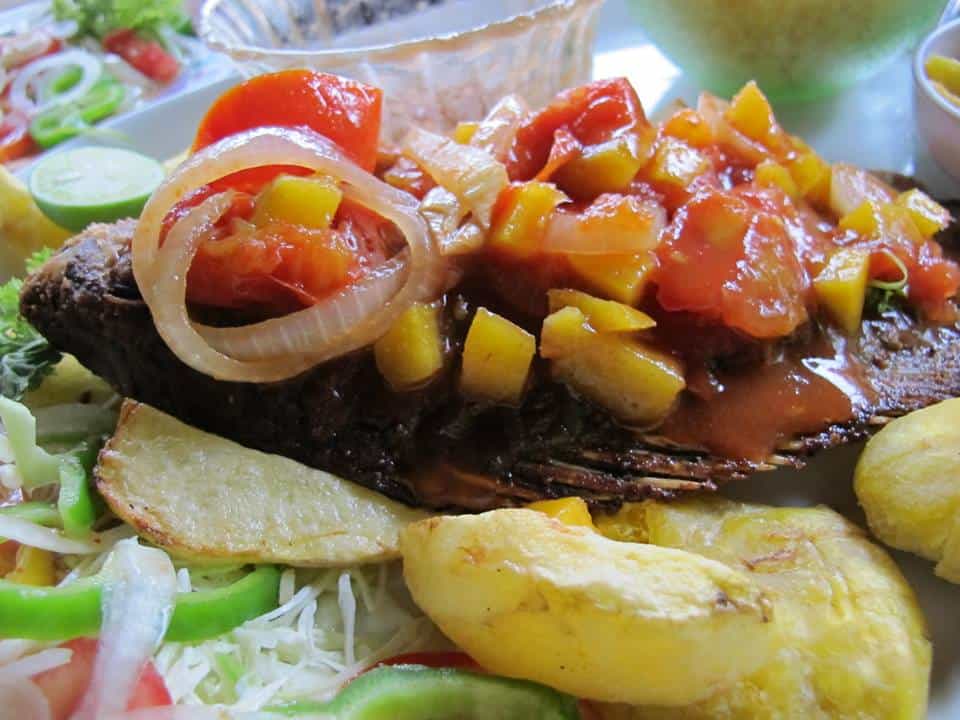
Local fish dishes such as guapote are typically seasoned while cooking with savory ingredients such as garlic, black pepper, cilantro, and onions but topped upon serving with sweet tropical fruit sauces that may include, say, mango and tomatoes (as pictured above).
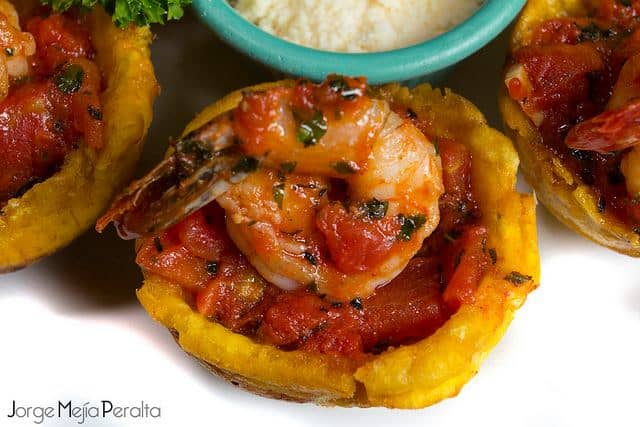
Atlantic and Caribbean Cuisine
On the other hand, Nicaraguan food on the Atlantic coast is heavily influenced by Afro-Caribbean spices and flavors, mainly coconuts, chiltoma (sweet peppers), and chilies accompanied by roots such as yuca (like cassava), and malanga.
Moreover, coconut oil is typically used for cooking instead of lard or cooking oil. These combinations give ‘Nica-Caribbean' cuisine a distinct flavor.
The most popular seafood dishes include lobster , shrimp, and crab. You name it. When it comes to fish, it is eaten either dried, fried, or in soups.
Rondón is a creamy coconut milk-based stew of turtle meat or fish with beef or pork, originally from the city of Bluefields.
It is seasoned with sweet peppers, chilies, onions, plantains, yuca , quequisque , and an herb named nargan .
We recommend you opt for the fish variety, though, as turtles are endangered.
Gallo pinto con coco is like the traditional Nicaraguan rice and black beans dish, but cooking oil is substituted by coconut oil when frying.
Likewise, pan de coco is bread whose flour includes ground coconut and is the perfect accompaniment to rondón .
Gaubul is a traditional Caribbean-Nicaraguan drink, little known even on the Pacific coast of its own country.
It is a mixture of cooked, mashed green plantains with fresh cow milk, coconut water, and sugar to taste.
Maria Alexandra Laborde is a serial expat, having lived and traveled extensively throughout 6 different countries and territories, including over 18 years in Latin America.
Also, Maria is the author of LatinAbroad , where she shares cultural experiences and advice after living in and traveling to over 30 countries across 5 continents. Follow her on Facebook , Google+ , Instagram and Pinterest
Planning a trip? Go Backpacking recommends:
- G Adventures for small group tours.
- Hostelworld for booking hostels.
Wednesday 31st of August 2016
are just a visiter or an expert
Kathryn Irby
Thursday 19th of May 2016
What kind of bread is typically eaten with a meal in Nicaragua?
Saiful Islam Khan
Wednesday 10th of December 2014
Wow, how charming & colorful these dishes are! Mind-blowing traditional cuisines with various tests and experiences! Any ethnic food has own tests, decorations, colors & facts indeed. Thank you Laborde to share such a nice post through the site! I wish you'll keep your sharing on towards food lovers throughout the world.
Best regards, Saiful
Wednesday 12th of November 2014
Yum yum haven't been to Nicaragua yet on my list of places to visit. Love the Latin American cuisine though. Definitely a different flavor than lower Central or up South America Panama or Colombia.
Rebe from Travnation.com
You need a post about El Salvador so we can all talk about pupusas.
Thursday 13th of November 2014
Ah yes, I experienced them first hand earlier this year, but I was only there for a few days. Delicious!
Suggestions
Discover nicaragua’s 12 tourist routes.

Nicaragua is a country full of surprises and exciting adventures, with incomparable natural and cultural beauty that offers an unforgettable travel experience. Discover 12 of the country’s tourist routes where you can experience priceless moments while enjoying delicious food, a verity of cultural expressions, nature and friendly people. Segoviana Route: It comprises the departments of…

Colombian actress delighted with Nicaraguan cuisine

Eight Nicaraguan meals

Matagalpa awaits you with its coffee and cocoa tour

Nicaraguan Cuisine: For Your Foodie Clients or Anyone in Between
Nomadic Matt's Travel Site
Travel Better, Cheaper, Longer
Nicaragua Travel Guide
Last Updated: September 1, 2023
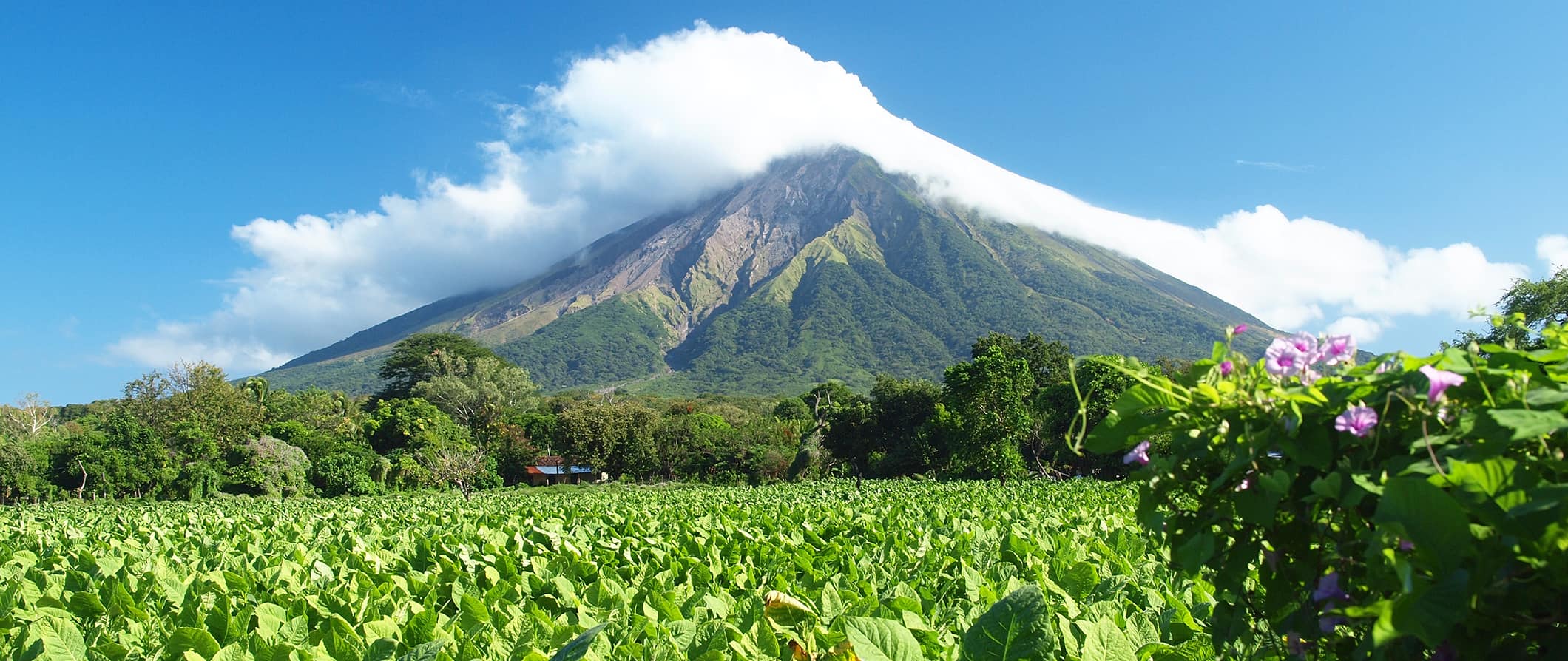
Known as the “Land of Lakes and Volcanoes,” Nicaragua is the largest country in Central America. Home to Lake Nicaragua (Central America’s largest lake), beautiful islands, expansive volcanic terrain, mangrove swamps, ethereal cloud forests, and tropical rainforests, Nicaragua is a stunning destination with tons of things to see and do — no matter your interests.
In fact, I loved my visit to Nicaragua so much I ended up extending my visit!
While Granada, León, and San Juan del Sur tend to pull in the crowds, if you leave the main southern cities and get a little off the tourist trail, you can discover even more varied landscapes, friendly locals, and little explored towns and national parks.
This travel guide to Nicaragua shows you how to visit on a budget, save money, and make the most of your trip.
Table of Contents
- Things to See and Do
- Typical Costs
- Suggested Budget
- Money-Saving Tips
- Where to Stay
- How to Get Around
- How to Stay Safe
- Best Places to Book Your Trip
- Related Blogs on Nicaragua
Top 5 Things to See and Do in Nicaragua
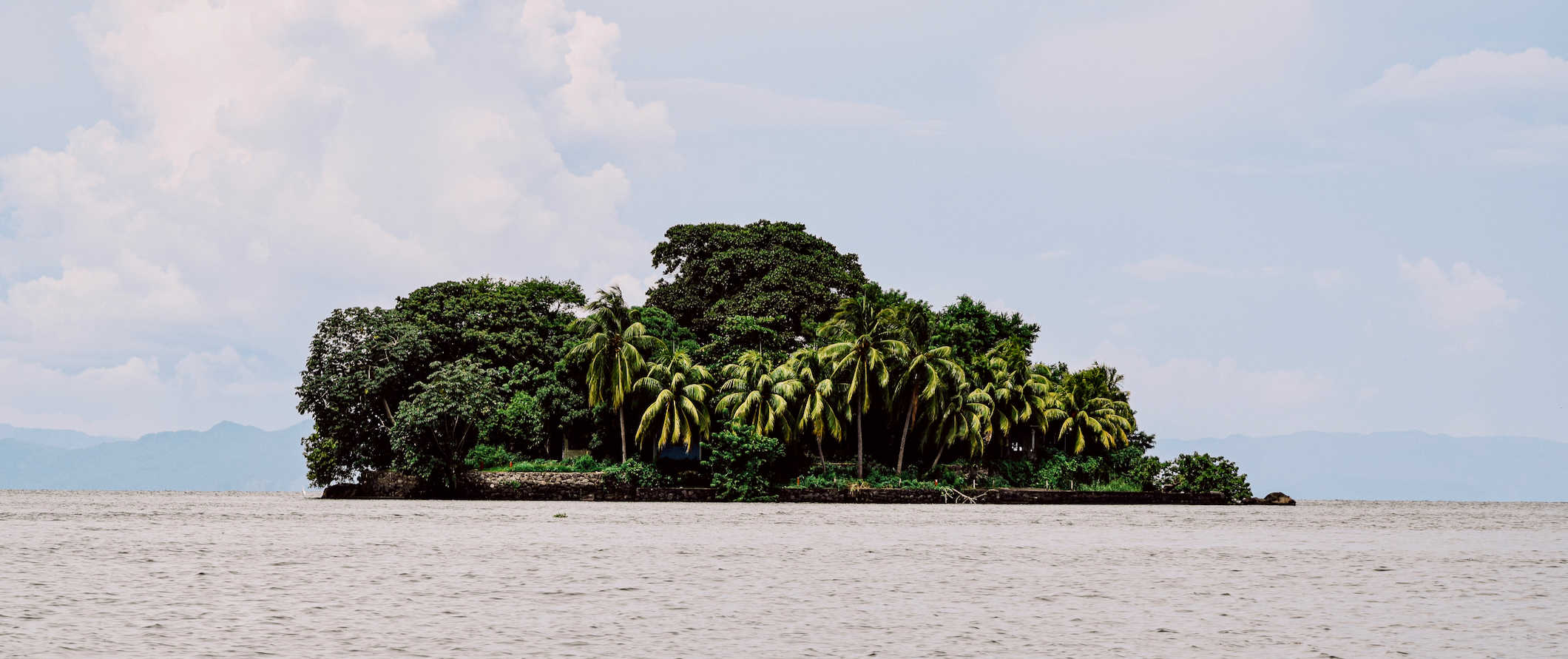
1. Visit Little Corn Island
This archipelago off the Caribbean coast is one of the best places to relax in the country. It boasts diving with hammerhead sharks and underwater caves, fresh seafood, and plenty of hammock downtime on deserted beaches (invest in a good hammock if you’re serious about your R&R). Don’t miss Otto’s Beach.
2. Relax in San Juan del Sur
This picturesque surfer paradise is fringed with prehistoric volcanic hills and was the first destination to put Nicaragua on the map. Backpackers flock here in droves to surf and party under the stars. It’s a must-visit destination in the country!
3. Admire colonial Granada
Nicaragua’s oldest city is revered as the colonial jewel of Central America. Many of the pastel-painted buildings have been meticulously restored. Bask in Granada’s historic grandeur as you weave through the cobblestone streets, visit local art galleries, and sip on a coffee in a plaza.
4. Tour León
From world-class museums, Central America’s largest cathedral, and other beautiful monuments to a lively party scene fueled by the ample student population, León is one of my favorite places in the country. Sample the best roadside quesillo and see the local artists who give the city its eccentric flavor.
5. Explore Ometepe Island
Spend your days hiking, kayaking, or cycling around the island, spotting howler monkeys and archeological ruins in the process. Two of the two volcanoes here (Concepción and Maderas) offer strenuous 8-10-hour hikes. Guides are mandatory and cost 530 NIO.
Other Things to See and Do in Nicaragua
1. hike miraflores.
Miraflores national park was the highlight of my entire trip. Located in Estelí in northern Nicaragua, this is a stunning cloud forest with rivers and waterfalls. You can take day-hikes or multiday treks to the park (the multiday trips enable you to stay with local host families in small communities) and there are also programs to help you learn to farm. The one-day trek that I did ran from 7am-4pm and cost 550 NIO which included two meals and a mandatory guide. An extra bonus that I loved is that all the money goes back into supporting the community and farmers.
2. Explore Rio San Juan
This river is a wonderful stopover for nature enthusiasts looking to go kayaking, fishing, and wildlife watching. Despite the surge in eco-tourism in the region, accommodation options are still no-frills and very low-key, with Wi-Fi and phone coverage being scarce. Most tours leave from San Carlos, which is located at the mouth of the river on Lake Nicaragua.
3. Hike a volcano
Nicaragua has 19 volcanos (9 of which are active). The two peaks on Ometepe –– Concepcion and Maderas –– are the two most popular day hikes in the country. Concepción, towering at 1,600 meters (5,249 feet) is a baking hot hike, so bring lots of sunblock and water. Maderas is easier but muddier, with a lake at the summit. Cerro Negro (near León) offers a comfortable sandy route from top to bottom and is also well-known for “volcano surfing.” Masaya Volcano is the most active volcano in Nicaragua and you can actually see the lava bubbling there (visits are limited to 10 minutes due to the fumes). For people wanting a challenge, try San Cristobal, Nicaragua’s highest volcano. If you’re hunting for scenic Insta-worthy views, hike to Telica (also within easy reach from León) for a spectacular sunset (you can actually camp at the top).
4. Relax at Lake Apoyo
Laguna de Apoyo is a breathtaking body of water that sits upon the Apoyo volcano crater near Granada. This 200-meter-deep lake is the perfect spot for swimming, kayaking, fishing, and sailing. Hostels offer day trips from Granada for around 300 NIO, which include a return shuttle and include use of another hostel’s facilities, kayaks, and tubes on the lagoon. You can also visit independently and stay overnight if you want a longer visit.
5. Tour a coffee plantation
Coffee is Nicaragua’s primary export and Jinotega, the misty and mountainous northern region, produces over 80% of the country’s output. You can organize a coffee tour in any of the eco-lodges/hostels dotted around the region. I particularly liked Eco Albergue La Fundadora. Even though I don’t drink coffee, it’s a fascinating and important industry in the country (and region) and worth learning about.
6. Relax at the Pearl Cays
The remote string of crescent-shaped playas that make up the Pearl Cays (pronounced “Pearl Keys”) offer some of the best Caribbean beaches in Nicaragua. Unfortunately, due to climate change, this stunning collection of white islands is steadily shrinking. Located near the Corn Islands, there are currently only 10 left from the original 18. Accommodation on the island is super exclusive and very pricey. However, day trips by shared speedboat can be easily arranged to make visits affordable. Private boats start from around 8,800 NIO and fit up to 10 people. Come here to snorkel, swim, and lounge away the day.
7. Visit the Bosawas Biosphere Reserve
Bosawas is the second-largest rainforest in the Western Hemisphere and is home to jaguars, tapirs, spider monkeys, harpy eagles, and more. A huge chunk of the country’s bird population — 600 out of 790 species — are located here, making it the prime spot for wildlife and bird watching. Multi-day trips, where you can truly immerse yourself in the wilderness, hike cloud forests, swim in waterfalls, and meet Mayangna and Miskito indigenous communities start at around 12,000 NIO per person.
8. Explore the Solentiname Archipelago
Isolated on the southwest tip of Lago de Nicaragua, the Solentiname Archipelago is a cluster of 36 islands revered for their pristine collections of primitive art, birdlife, and laid-back lifestyle. It’s best to base yourself in Mancarrón and organize day trips to other neighboring islands throughout your stay. It’s roughly a four-hour drive from Managua to San Carlos and then and then a two-hour boat ride to the dock in Mancarrón. There are no ATMs to be found on the islands so bring plenty of cash.
9. Shop at the Masaya Markets
Stock up on rum, coffee, hammocks, and ceramics at the Masaya Markets in Masaya National Park near Managua. Barter your way through the markets and soak up the colorful atmosphere. While there is a lot of tourist junk here, there are still plenty of artisanal handmade crafts as well. On Thursdays, a weekly ‘Night of Revelry’ features traditional dancing, local food, and music. The market is just thirty minutes from Managua.
10. Visit the stone carving hermit
Near Estelí in the north you can find Alberto the hermit. He’s been living here for almost 40 years, carving stone figures and sculptures in the jungle. He’s eccentric, kind, and incredibly knowledgeable about the flora and fauna in the region. Stop by to see his carvings and learn about his life in the jungle. Here’s a video of my visit .
11. Check out the Isletas de Granada
Southeast of the city of Granada in Lake Nicaragua, you can find the Isletas de Granada (Grenada Islets). There are around 365 of these volcanic islands, some of which are inhabited. A few have hotels on them or you can take a one-hour boat ride around them to admire their pristine beauty (it costs around 1,400 NIO for a boat that can take 8 people).
12. See Somoto Canyon
Dating back to the Miocene epoch (23-25 million years ago), Somoto Canyon is a relatively unexplored part of Nicaragua. Located near the border with Honduras, it was discovered by Czech and Nicaraguan scientists in 2004 and, since then, its spectacular walls and clear water have become a popular tourist destination. Activities here include hiking, boating, and scaling the canyon walls. The narrowest part of the canyon can only be reached by swimming or by tubing. Somoto Canyon Tours offers a variety of tours lasting from 3-6 hours with prices starting at 880 NIO.
13. Do a homestay/Learn Spanish
If you have a bit more time to spend in Nicaragua, there are lots of opportunities to volunteer, learn Spanish, and farm by taking part in a homestay (Estelí, Ometepe, and León are popular destinations for this). Hostels and tourist offices in any of the big cities can help you arrange it.
Nicaragua Travel Costs
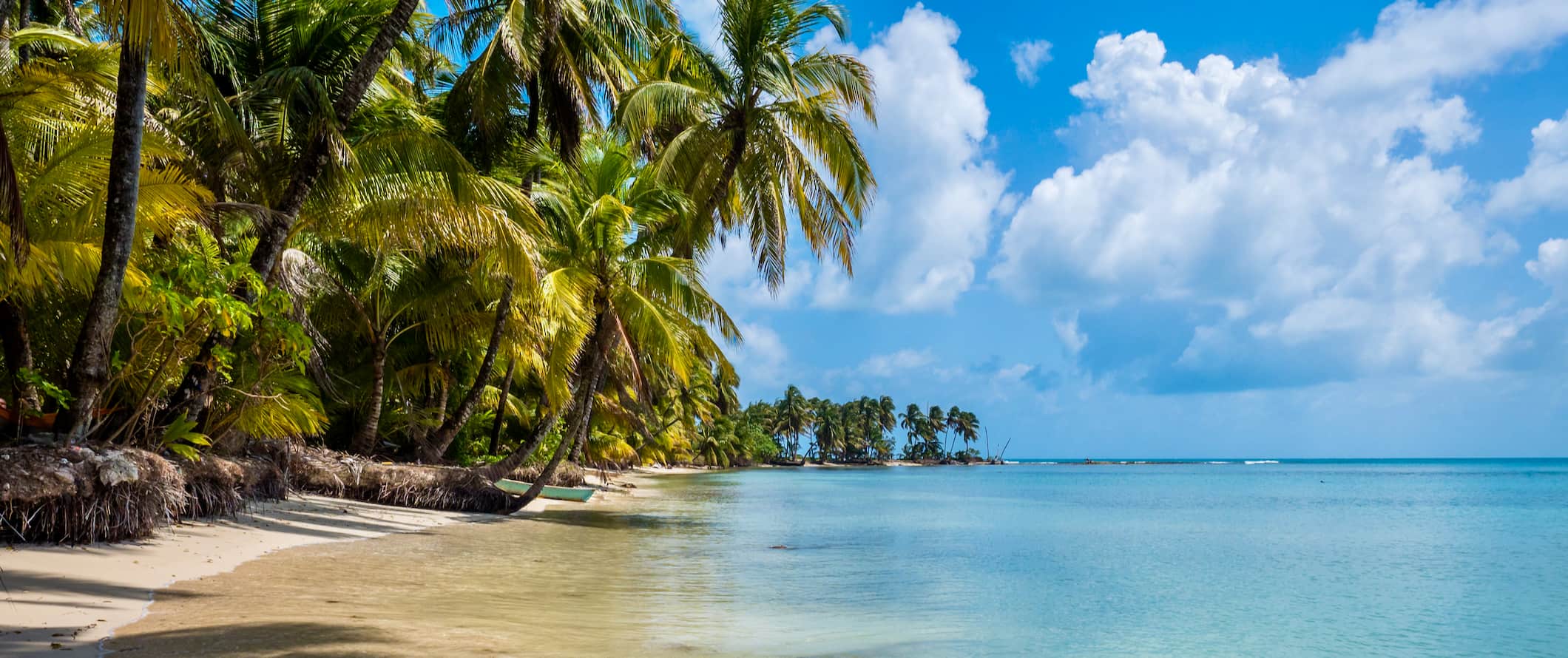
Accommodation – Small 6-8-bed dorms generally cost around 250-350 NIO per night, with private rooms costing between 700-1,700 NIO. Free Wi-Fi and free breakfast are common and many hostels also have a swimming pool.
For a budget two-star hotel, expect to pay between 1,000-2,600 NIO for a double room including breakfast. Expect basic amenities such as Wi-Fi, A/C, a TV, and sometimes a swimming pool.
Airbnb is available on Nicaragua’s Pacific coast as well as in Grenada and Managua (there are no rentals on the Atlantic side). You can score a great beachfront property from 2,800-4,200 NIO depending on group size and house style. For a private room, expect to pay at least 880 NIO per night.
Food – Beans, rice, and meat are the backbone of most meals in Nicaragua. Grilled chicken, pork, and beef are common options (especially for street food). Gallo pinto (fried rice and beans) is the go-to breakfast and dinner meal, with an egg often being added for the breakfast option. Be sure to try the popular quesillo , a tortilla wrapped around white cheese smothered cream, and nacatamales , a tamale made from maize dough stuffed with pork and potato.
A typical lunch, eaten in a comedor (local eatery serving tradition cuisine), or street stall costs between 100-175 NIO. Nicaraguans are more accustomed to dining out for lunch so travelers can expect to see fewer evening options available in non-touristy spots.
On the coast, seafood is the main staple so expect a lot of grilled fish. On the Caribbean side, the cuisine is heavily influenced by Caribbean culture as well.
A meal at a restaurant serving local cuisine costs around 345-520 NIO for a three-course meal with a drink.
The touristy towns and on the coast have more international cuisine options. Expect to pay 800-1,200 NIO for a three-course meal in a mid-range restaurant. A large pizza costs around 270-350 NIO. For fast food (think McDonald’s), expect to pay around 210 NIO for a meal.
A domestic beer or latte/cappuccino costs around 30-90 NIO.
If you’re buying a week’s worth of groceries, expect to pay between 1,100-1,300 NIO for basic staples like rice, beans, seasonal produce, and some meat or fish.
Backpacking Nicaragua Suggested Budgets
On a backpacking budget of 1,100 NIO per day, you can stay in a hostel dorm, use public transportation and chicken buses to get around, limit your drinking, cook all of your meals, and enjoy free and cheap activities like free walking tours and lounging on the beach.
On a mid-range budget of 2,800 NIO per day, you can stay in a private Airbnb or hostel room, eat out for most meals, enjoy a few drinks, take the occasional taxi or coach between cities, and do more paid activities like diving or guided day hikes.
On a “luxury” budget of 8,200 NIO per day or more, you can stay in a hotel, eat out anywhere you want, drink as much as you’d like take domestic flights to get around, and do whatever tours and activities you want. This is just the ground floor for luxury though. The sky is the limit!
You can use the chart below to get some idea of how much you need to budget daily, depending on your travel style. Keep in mind these are daily averages — some days you’ll spend more, some days you’ll spend less (you might spend less every day). We just want to give you a general idea of how to make your budget. Prices are in NIO.
Nicaragua Travel Guide: Money-Saving Tips
Nicaragua is one of the cheaper countries in the region but prices are rising quickly as it becomes more of the “it spot” to retire and work remotely from. Here are some of the best ways to save money during your trip:
- Take the chicken bus – Chicken buses (crowded local buses that make multiple stops) are the cheapest way to travel. You can save big time if you’re willing to trade A/C and cushioned seating to travel on a decommissioned school bus for a few hours. For example, the 3.5-hour trip from Granada to Rivas costs just 70 NIO!
- Refill your water bottle – The tap water here is not safe to drink so make sure you have a reusable bottle with you. To stay safe, bring a water filter like LifeStraw to ensure your water is clean and safe!
- Use the right currency – Pay with US dollars in bigger cities and save your córdobas for purchases at small businesses in rural areas and villages since they won’t have change for larger USD bills.
- Bring cash – Cards are accepted in major establishments and big cities. However, electricity can be fickle on the coast so it’s best to carry plenty of cash in case you’re caught out in a blackout.
- Learn some Spanish – Inflated tourist prices are common here. To avoid getting overcharged, learn some Spanish. Even just a few words and phrases can help you avoid being overcharged.
- Travel during the shoulder season – Prices are highest during the dry months (December-April). To avoid the crowds and save money, travel during the rainy season or shoulder season. You might get rained on, however, accommodation and activities are cheaper.
- Choose less-traveled routes – Prices for activities and accommodation plummet when you leave the tourist triangle (Granada, León, and San Juan del Sur). Nicaragua is the largest country in Central America so don’t be afraid to think outside the box and venture off the beaten path.
- Share private taxis – If you’re traveling in a small group, a taxi can often work out cheaper and more time-efficient than a bus or shuttle. Negotiate the price beforehand and ask your hostel for the normal rates so you have a reference.
Where to Stay in Nicaragua
If you’re looking for places to stay during your visit, here are some of my favorites:
- Hola Ola Hostel (San Juan del Sur)
- Viavia Leon (León)
- De Boca en Boca (Granada)
- Managua Backpackers Inn (Managua)
How to Get Around Nicaragua
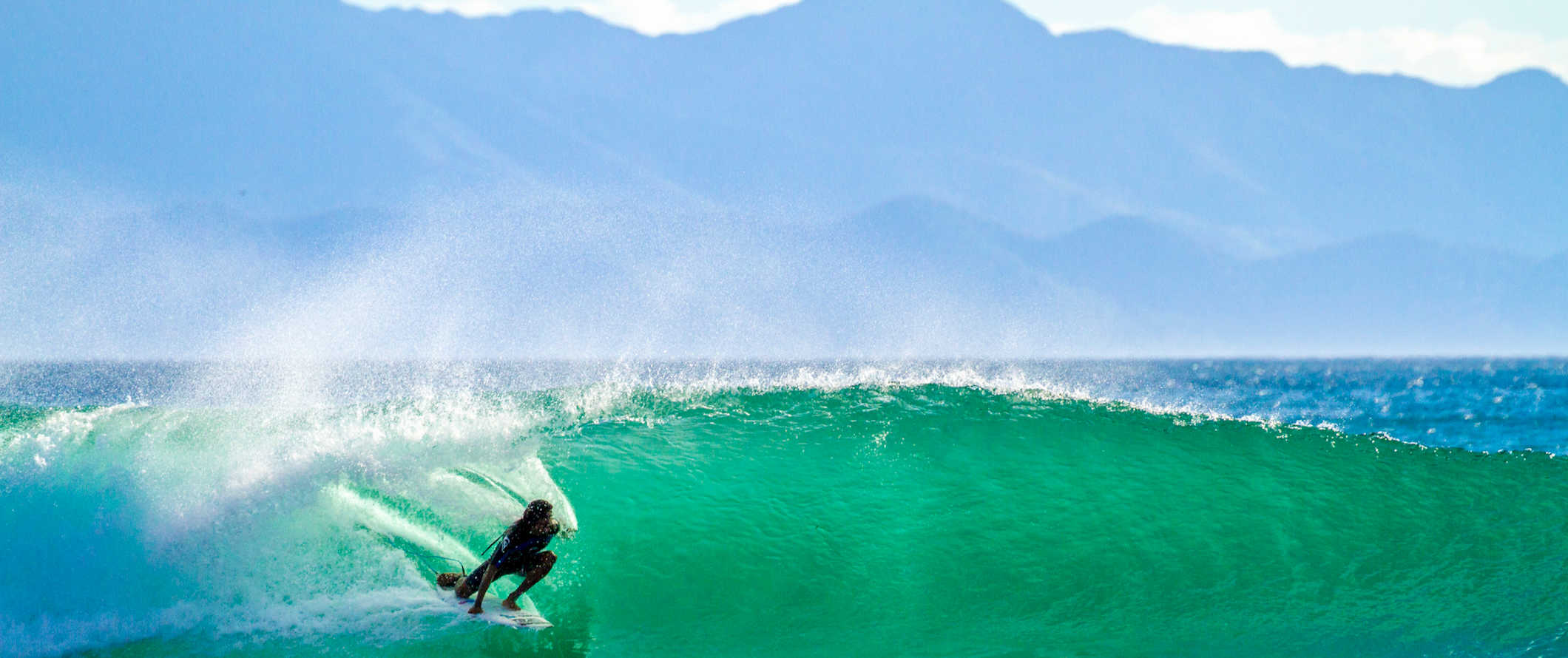
Bus – Chicken buses (i.e. converted school buses) are the cheapest way to get around. They are slow and stop often but have dirt cheap prices (around 35 NIO per hour of travel).
If you’re looking for a more comfortable journey, book with a coach company or private mini-shuttle, the latter of which are air-conditioned with cushioned seating and have storage room for your luggage.
For private mini-shuttles, expect to pay between 880-1,750 NIO per trip, however, you can try and buddy up with other hostel guests to drive down the price since it’s a private booking.
Most of the large cities have public transportation with local bus tickets costing under 6 NIO.
Air – La Costeña, Nicaragua’s domestic carrier, is based out of Managua and serves most of the country. Even if you’re keeping spending to a minimum, you have to take a flight if you want to visit the Corn Islands. Return tickets from Managua to the Corn Islands cost 5,700 NIO. For the 2.5-hour flight from Managua to Bluefields, expect to pay at least 4,500 NIO.
Train – There are no trains in Nicaragua.
Car Rental – A 4WD is recommended if you’re planning to visit rural areas as the roads here can be rough. Prices start from around 1,400 NIO per day for a multi-day rental. You’ll need an International Driving Permit (IDP) and you’ll definitely want to have extra insurance too.
When to Go to Nicaragua
There are two distinct seasons in Nicaragua: the dry season, which falls between November-April, and the green (rainy) season which is from May-October.
To avoid the crowds and peak prices, visit during the rainy season. The rainier months also offer ideal surfing conditions and deserted beaches to enjoy the waves. Just keep in mind the Caribbean coast sees more rain than the Pacific. Expect daily highs around 30°C (86°F).
The San Sebastian festival in Diriamba runs between January 17th-27th and is an amazing way to celebrate a local fiesta, with colorful parades, traditional music, and street-side buffets filling up every corner.
Easter (Semana Santa) is when you can find most locals hitting the mountains or beaches with family and friends. Buses and hotels, particularly on the coast, fill up fast so be sure to book in advance if you’re visiting during this time. Note that cities are much quieter during this period and many local businesses adapt their opening times/hours and events to celebrate the religious holiday.
How to Stay Safe in Nicaragua
Nicaragua is one of the safest countries in Central America, though petty theft and robberies are still relatively common. For that reason, keep your belongings secure and out of sight at all times — especially on crowded public transportation.
Solo female travelers should feel safe here when out during the day, however, they will want to avoid traveling alone after dark. Additionally, the usually standard precautions apply here as well (always keeping an eye on your drink at the bar, never walking home alone intoxicated, etc.).
If you rent a car, don’t leave any valuables in it overnight, and make sure to have suitable insurance just in case as break-ins can occur.
Scams are rare here, but they do happen. Be wary of random strangers asking for medicine or other financial assistance. Just politely decline and be on your way. You can read about common scams to avoid here .
Inflated tourist prices are common in Nicaragua. To avoid getting overcharged, learn some Spanish. Even just a few words and phrases can help you avoid being overcharged
Many people come to Nicaragua to party as drugs and alcohol are both cheap and abundant. However, the fines and penalties for drug use are steep. Police often expect bribes that can cost of hundreds — if not thousands — of dollars. Police won’t hesitate to strip search you if they suspect narcotics so avoid using drugs here to stay safe.
Moreover, the drug trade contributes to deaths, instability, and unrest in the region. Don’t contribute to that.
Protests and clashes in the major cities aren’t uncommon. Should a protest occur during your visit, avoid the area and return to your accommodation. While you’re unlikely to be hurt, it’s better to be safe than sorry.
As always, keep your wits about you at night time, particularly in the capital. Ask your hotel to call you a taxi in Managua (always negotiate the price before getting in the car), which can be an intimidating spot for travelers due to the lack of road names, tourists, and landmarks.
If you experience an emergency, dial 118 for assistance.
Always trust your gut instinct. Avoid isolated areas at night, and be aware of your surroundings at all times. Make copies of your personal documents, including your passport and ID, before you leave on your trip.
If you wouldn’t do it at home, don’t do it in Nicaragua!
The most important piece of advice I can offer is to purchase good travel insurance. Travel insurance protects you against illness, injury, theft, and cancellations. It’s comprehensive protection in case anything goes wrong. I never go on a trip without it as I’ve had to use it many times in the past.
Nicaragua Travel Guide: The Best Booking Resources
These are my favorite companies to use when I travel. They consistently have the best deals, offer world-class customer service and great value, and overall, are better than their competitors. They are the companies I use the most and are always the starting point in my search for travel deals.
- Skyscanner – Skyscanner is my favorite flight search engine. They search small websites and budget airlines that larger search sites tend to miss. They are hands down the number one place to start.
- Hostelworld – This is the best hostel accommodation site out there with the largest inventory, best search interface, and widest availability.
- Booking.com – The best all around booking site that constantly provides the cheapest and lowest rates. They have the widest selection of budget accommodation. In all my tests, they’ve always had the cheapest rates out of all the booking websites.
- Get Your Guide – Get Your Guide is a huge online marketplace for tours and excursions. They have tons of tour options available in cities all around the world, including everything from cooking classes, walking tours, street art lessons, and more!
- SafetyWing – Safety Wing offers convenient and affordable plans tailored to digital nomads and long-term travelers. They have cheap monthly plans, great customer service, and an easy-to-use claims process that makes it perfect for those on the road.
- LifeStraw – My go-to company for reusable water bottles with built-in filters so you can ensure your drinking water is always clean and safe.
- Unbound Merino – They make lightweight, durable, easy-to-clean travel clothing.
- Top Travel Credit Cards – Points are the best way to cut down travel expenses. Here’s my favorite point earning credit cards so you can get free travel!
Nicaragua Travel Guide: Related Articles
Want more info? Check out all the articles I’ve written on backpacking/traveling Central America and continue planning your trip:

Do You Need Travel Insurance for Costa Rica?

The Best Tour Companies in Costa Rica
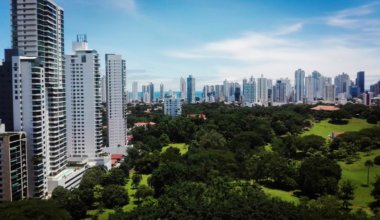
The 6 Best Hostels in Panama City, Panama
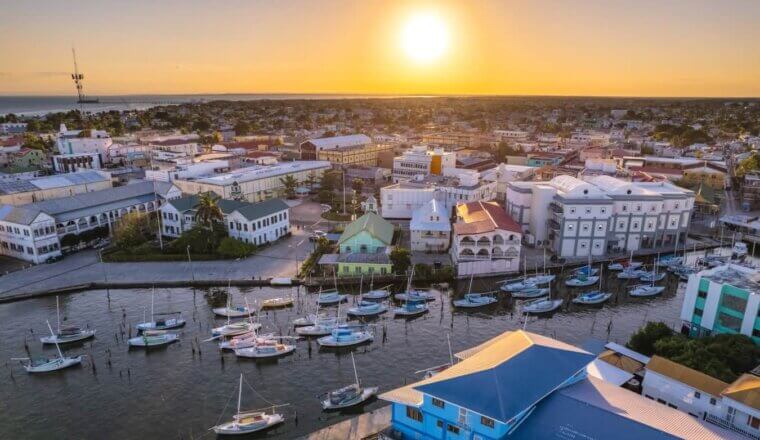
Is Belize Safe to Visit?

Is Central America Safe to Visit?
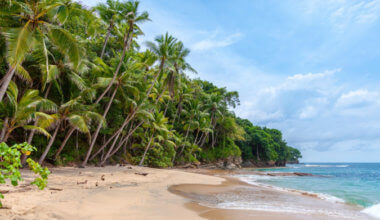
How to Get Around Central America on a Budget
Get my best stuff sent straight to you, pin it on pinterest.
- Where To Stay
- Transportation
- Booking Resources
- Related Blogs

15 Top-Rated Attractions & Things to Do in Nicaragua
Written by Carri Wilbanks Updated Jul 13, 2022 We may earn a commission from affiliate links ( )
Biodiverse and naturally beautiful, Nicaragua is a still off-the-grid destination, filled with active volcanoes, cloud forests, jungles, lakes, and two coastlines, all boasting plenty of attractions and things to do.
Outdoor adventure enthusiasts can hike to natural attractions like crater lakes in dormant volcanos or sled down mountains of ash on wooden boards. While those in search of wildlife experiences can explore one of the many protected reserves around Nicaragua that are home to everything from jaguars to howler and white-faced monkeys and hundreds of species of birds.
With beaches on both its Caribbean and Pacific Ocean coastlines, there are plenty of options for getting wet as well. Towns like San Juan del Sur on the Pacific Ocean's Emerald Coast near Costa Rica are top places to visit, famous for their colorful architecture and surf scene. While the Corn Islands in the Caribbean Sea are known for their laid-back beach vibe.
Managua is Nicaragua's capital city, but people tend not to linger here unless visiting for business. Many things to do really lie in the smaller cities, like Leon and Granada , which are known for their colorful architecture and churches, and natural attractions such as Lake Nicaragua. It is the largest freshwater lake in Central America and home to hundreds upon hundreds of islands, including some with amazing ecolodges.
And then there are the multitude of volcanoes, some dormant; others, like the Masaya Volcano , still very much active. Here are our picks for the top things to see and do around Nicaragua.
1. Islets of Granada
2. corn islands, 3. masaya volcano, 4. cerro negro, 5. mombacho volcano nature preserve, 6. lake nicaragua, 7. san juan del sur, 8. somoto canyon national monument, 9. isla ometepe, 10. bosawas biosphere reserve, 11. granada, 12. reserva natural miraflor, 14. apoyo lagoon natural reserve, 15. san juan de oriente, map of attractions & things to do in nicaragua.
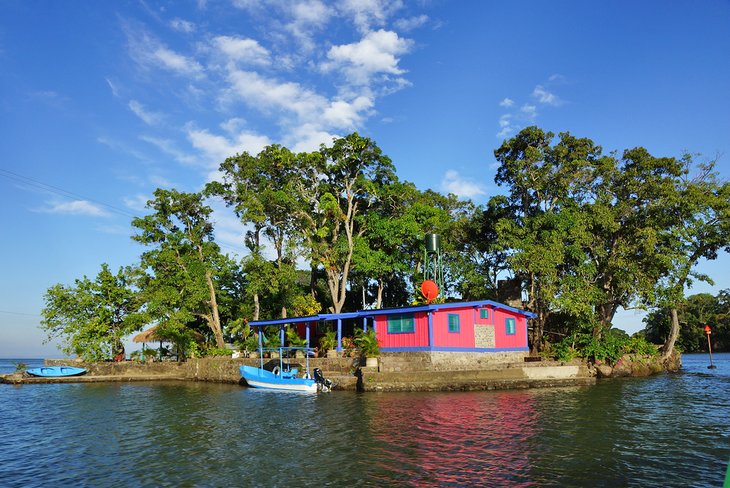
Lake Nicaragua is home to 365 small islands that form an archipelago known as Las Isletas or Islets of Granada, due to their location southeast of the colonial city of Granada. The islets are more than 25,000 years old, initially formed from the ash and stones of the Mombacho volcano .
While some islets are deserted, others have limited development, mostly in the form of ecolodges. Jicaro Island Lodge is one such place. The boutique property is truly special, a place where you can disconnect to reconnect with nature. And you can explore the other islets by SUP board or kayak from the dock at Jicaro if you're staying here.
The accommodation at Jicaro Island Lodge is in two-story wooden treehouses that have an indoor/outdoor vibe and truly feel like sleeping in the midst of the jungle (but are protected from mosquitoes and other biting bugs).
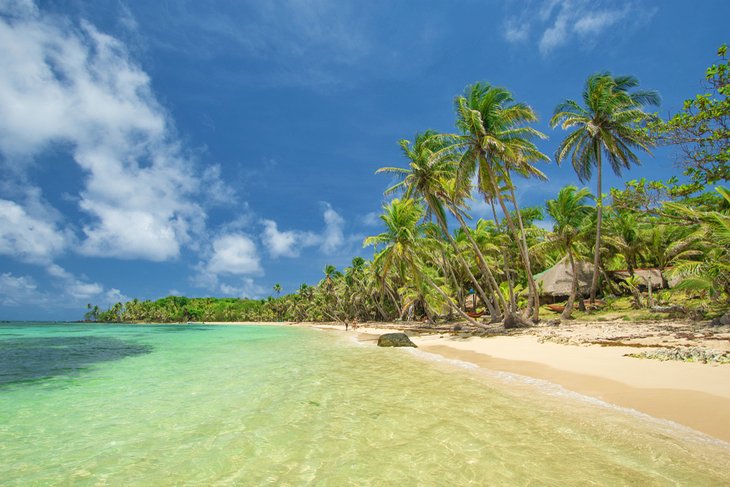
In the Caribbean Sea, about 70 kilometers off Nicaragua's east coast, the Corn Islands are where to go for a laid-back holiday. Big Corn is where you will usually arrive (there are flights from Managua), but you can sleep on either isle.
Despite its name, the Big Corn is actually quite small, and you can bike around it in about an hour. The beaches here are beautiful, light-gold-sand affairs fronted by crystal-clear, turquoise water that stays warm year-round.
From Big Corn, it is a 40-minute boat ride to Little Corn . The tiny island has some accommodation and eating options but no banks or vehicles. You can walk around Little Corn in less than an hour.
There is excellent diving in the reefs off both the Corn Islands, which is why many people visit.
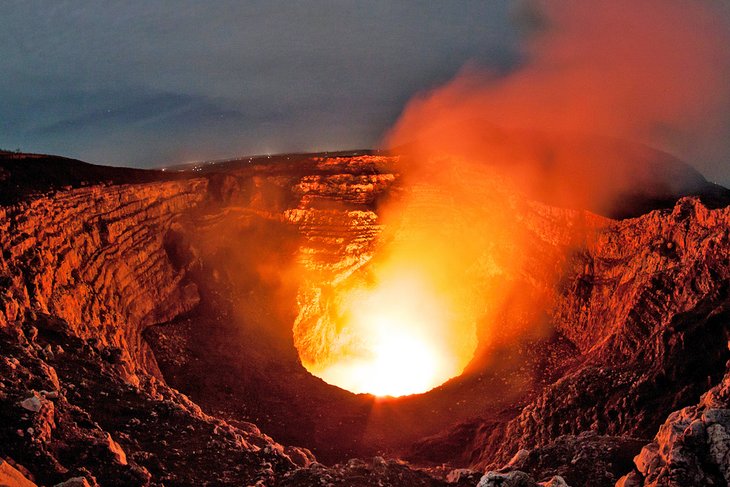
Protected in the country's largest national park, the Masaya Volcano is also one of Nicaragua's top places to visit, just 20 kilometers south of Nicaragua's capital city of Managua.
The most amazing part about visiting this active volcano is how close you can get to the lip of the crater in a private vehicle - you simply drive right up to the edge and park, although you have to park facing downhill in case an emergency evacuation is necessary.
Looking down into the crater, you can see a lake of molten lava. Visit after dark to see the glow the bubbling lava creates inside the pit. If you visit during the day, there is a museum on-site, as well as picnic facilities.
The volcano can be visited on a day trip from Managua or Granada .
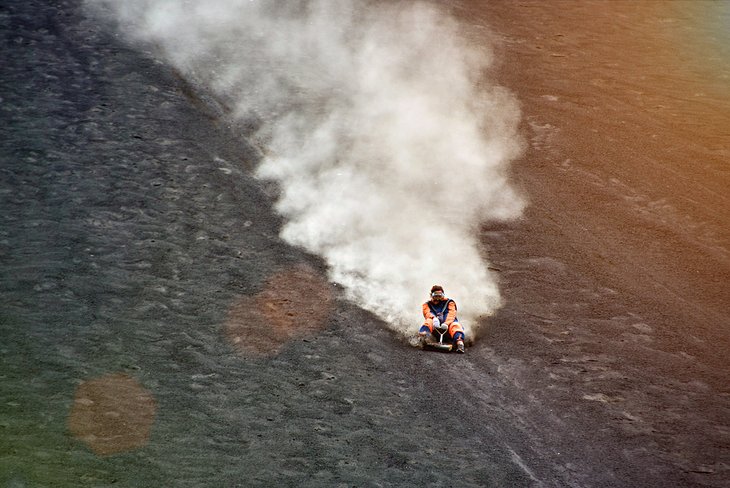
If you want to get your adrenaline pumping a bit then head to Cerro Negro. One of the youngest volcanoes in the world, it last erupted in 1999 and features a dramatic black cone.
While it's still considered active, today most people head to Cerro Negro to try their skills at volcano surfing. The sport involves riding down the side of the volcano's black ash on a wooden surfboard. You'll be wearing a boiler suit and goggles for protection, and you can reach speeds of upwards of 60 miles per hour. The boards can either be ridden sled style (sitting down) or standing up like a surf or snowboard.
Note that to ride down the volcano, you have to hike up. The trek takes about 40 minutes. Most people try this on an organized adventure tour.
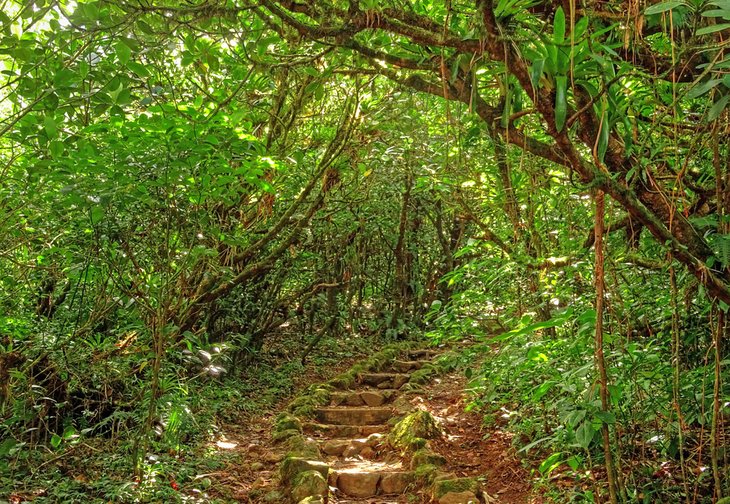
Located atop the dormant Mombacho Volcano, this nature preserve includes a unique cloud forest landscape and covers 2,500 acres. It sits to the southwest of Managua , just 10 kilometers from the colonial town of Granada and magnificent Lake Nicaragua .
Surrounded by rural farms and coffee plantations, the landscape is beautiful. The reserve is known for its prolific, colorful and fragrant flora, with more than 800 species of plants growing here.
There are also hundreds of animal species making their home on Mombacho, including the bright red and green quetzal bird and a number of monkey species such as white-faced monkeys and howler monkeys. The best way to experience the preserve is on one of the many hiking trails running through it.
The reserve is also home to a tourist center, where you can pick up a guide to hike around one of the four volcanic craters, all covered with a rare type of cloud forest that is only found in one other spot in Nicaragua: the Maderas volcano on Ometepe Island .
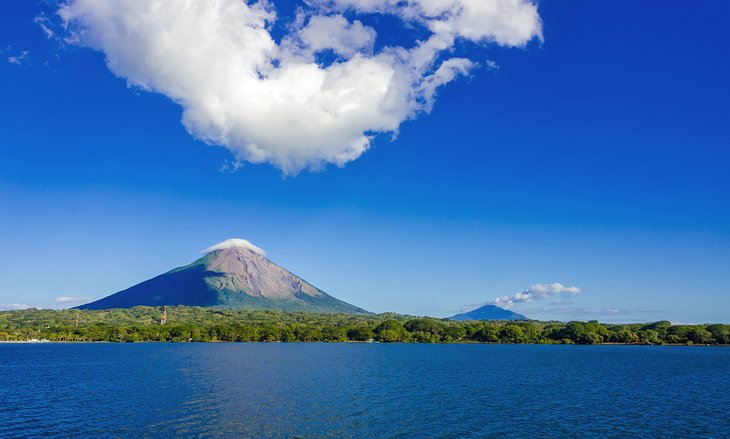
When Spanish colonists first saw Lake Nicaragua, it was so vast, they thought it was a sea. In reality, it is Central America's largest lake at 177 kilometers long with an average width of 57 kilometers. It is home to more than 365 small islets and larger islands, like Ometepe, with two volcanos, in the lake's center.
Another interesting fact about Lake Nicaragua is that it is the only freshwater lake to have ocean animals, including sharks. It is believed the lake was once a sea bay, but then a volcano erupted, trapping marine life and turning it into an inland lake. Over the millennia, the marine life has adapted to living in freshwater.
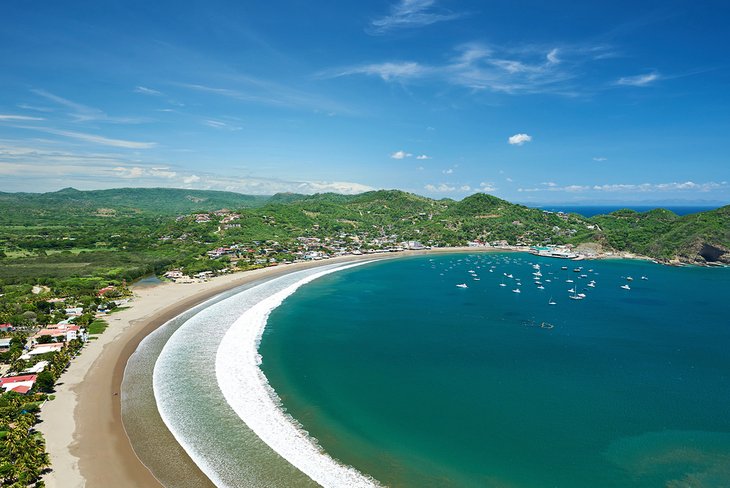
In southwest Nicaragua, on the Emerald Coast, near the border with Costa Rica , San Juan del Sur is a vibrant town with a large expat community and an excellent surf beach just 20 miles to the north. The town itself is filled with colorful buildings and murals. There is also a large Christ of the Mercy statue perched on a hill overlooking the city below that is worth a hike up for sunset, especially to experience the views.
And then there is the long gold-sand meets Pacific Ocean Playa Maderas beach, which is also lined with small hotels and eco-resorts. It picks up most of the swells that hit Nicaragua and is best approached at medium to high tide.
The beach is also known for its long, drawn-out sunsets with an amazing display of bright, shifting colors.
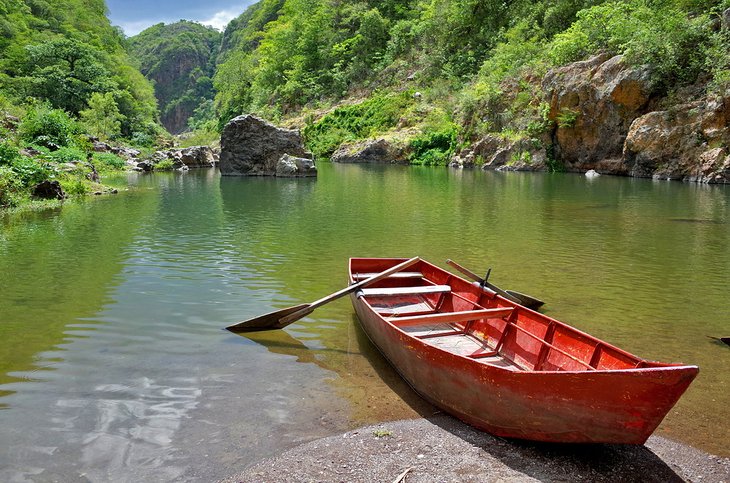
Discovered accidentally in 2004 by two Czech geologists, Somoto Canyon National Monument is now a protected gorge in northern Nicaragua about 2.5 hours from Leon .
The scenery here is stunningly beautiful, and this is also another perfect destination for adrenaline addicts. You can book four- or six-hour descents of the narrowest section of the gorge. Both trips require rock scrambles, floating down rapids in inner tubes, and jumping from high cliffs into deep pools. The six-hour trip also includes rappelling down cliffs into bat-filled caves. Either way this is an adventurous day trip.
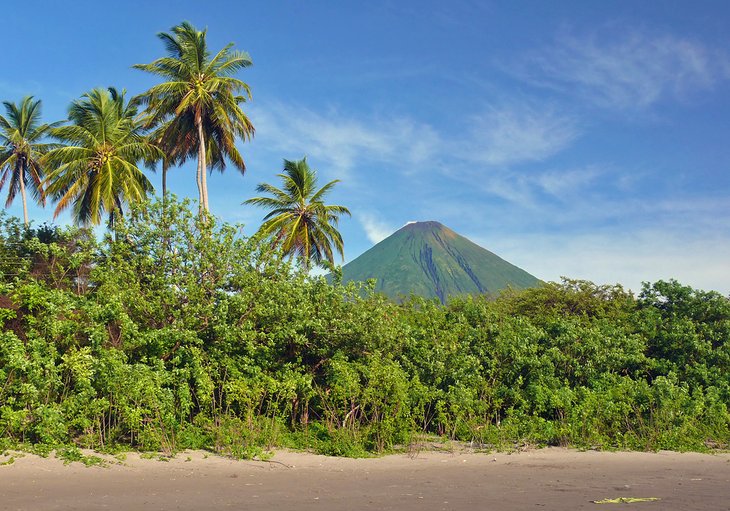
Isla Ometepe is in Lake Nicaragua, the largest freshwater lake in Central America and also home to the Islets of Granada. The island has not one but two volcanos, both of which can be climbed.
Maderas is the volcano in the south of Ometepe, and it is less active than the Concepcion volcano in the north. The hike to the summit of Maderas takes you to a beautiful crater lake. There is also an impressive waterfall at the base that cascades for almost 50 meters down a sheer rock wall.
The island is also popular for horseback riding, mountain biking, or kayaking the Istian River that runs through it. You can also just laze on the white sands of Santo Domingo beach.
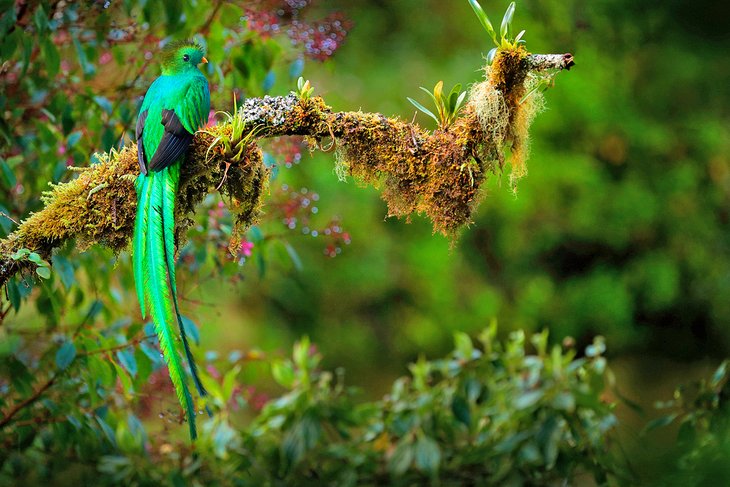
Second only in size to the Amazon rainforest in Brazil, Nicaragua's Bosawas Biosphere Reserve was established in 1997 to protect the biodiversity found in this northern corner of the country. The reserve also protects the free flow of species between Mexico and Central America.
A birder's paradise, you'll find that 600 of the 790 bird species that call Nicaragua home live in this reserve. You'll also find plenty of mammals, including jaguars, Baird's tapir, and spider monkeys in the trees and on the forest floor.
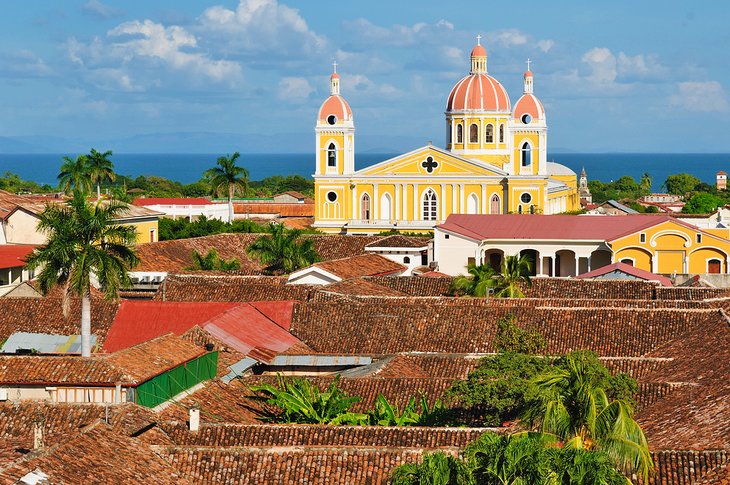
Colorful Granada is a wonderful old city to wander for an afternoon. It is home to some of the best-preserved architecture in Nicaragua, including a number of buildings and churches constructed in Spanish colonial style.
Here, you'll find Convento San Francisco , which is one of the oldest churches in Central America. It has an unmissable Tiffany blue facade, and inside, you'll find one of Nicaragua's top museums, dedicated to the country's pre-Columbian people. There are also restaurants, shops, and coffee houses with sidewalk seating around its main square.
Granada is a popular base for exploring the islands in Lake Nicaragua on whose shore it sits.
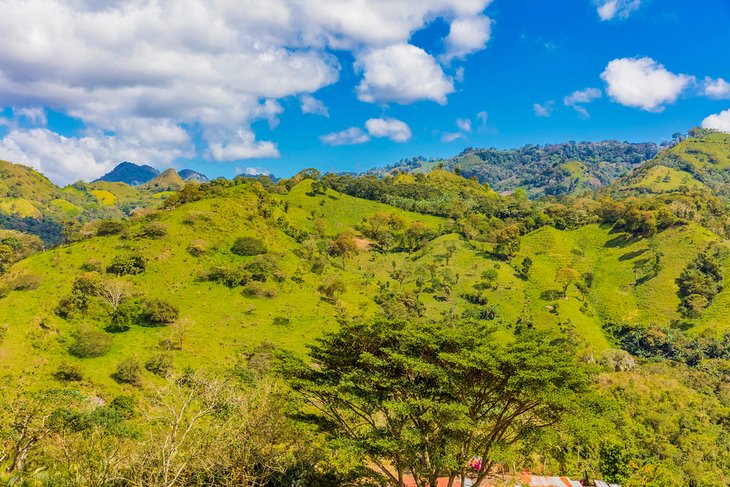
From cooling off under icy waterfalls to horseback riding or trekking in search of some 300 species of birds that live here, including the bright queen quetzal, there is plenty to keep you naturally entertained at Reserva Natural Miraflor.
This reserve in Nicaragua's north covers three climate zones, including dry forest and cloud forest. Visitors can also participate in community tourism projects here at coffee cooperatives. These give you a chance to spend a night with a local family and get a glimpse into their culture and way of life.
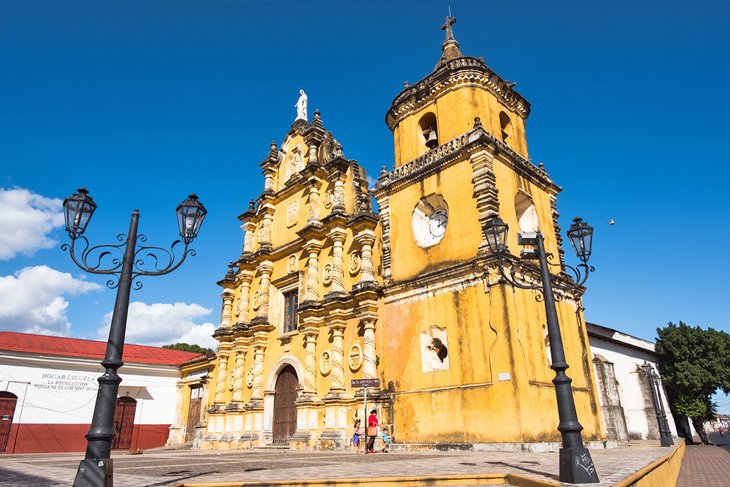
Home to Nicaragua's National University , Leon is considered the country's intellectual capital. The city is also known for its cathedral, art museums, and growing food scene. Leon's cathedral is Central America's biggest, and merges Baroque and Neoclassical styles.
Just a few blocks north of the cathedral is Iglesia de la Recoleccion , which is a beautiful church dating back to 1786. It is built in Mexican-style Baroque design and features a distinct, deep-yellow facade with cream trim. While strolling the walkable downtown, also keep an eye out for murals and graffiti dating back to the political war of the 1980s.
You can also visit the 16th-century ruins of Leon Viejo (old Leon), a UNESCO World Heritage site, and one of the first Spanish colonial settlements in the Americas. These ruins are just a short drive from Leon.
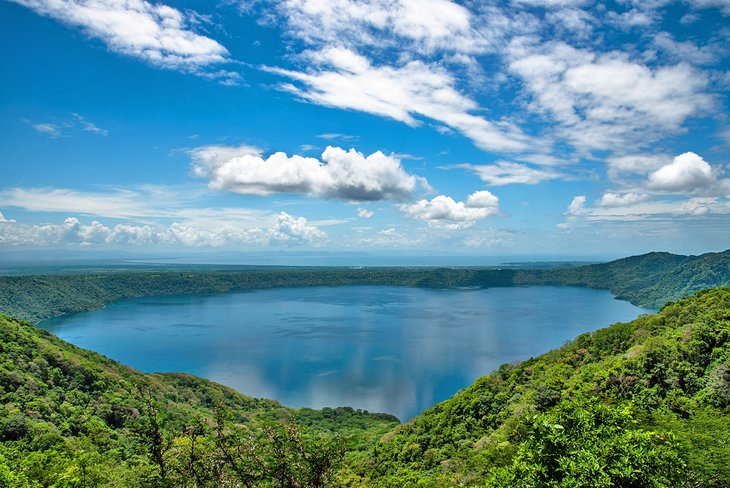
Less than a 30-minute drive from Granada , Apoyo Lagoon Natural Reserve is a giant volcanic crater lake that was created more than 20,000 years ago when the original volcano's cone imploded.
The lake is about 198 meters deep and is so big that when the wind blows hard enough, there are waves big enough to windsurf. The lake is also fed by volcanic fumaroles that keep the water warm and slightly salty.
Activities include kayaking, swimming, scuba diving to explore thermal vents, or just chilling at one of the restaurants on the beachfront.
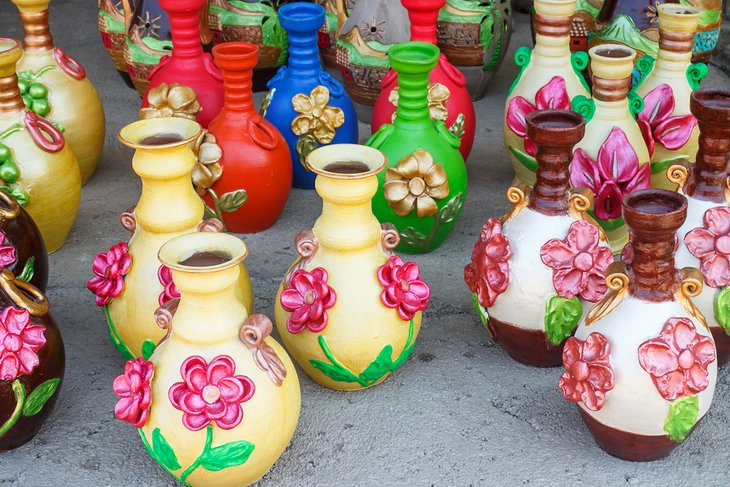
If you are in the market for ceramic handicrafts , whether in the form of ornately decorated vases or functional cookware, pay a visit to the village of San Juan de Oriente. Located about 45 kilometers from Managua, it is known as the "town of potters," and the artisans here have been creating beautiful pieces out of clay since before the Spanish conquistadors invaded the region.
Upon entering the small town, which has a beautiful setting overlooking the Masaya lagoon, you'll see dozens of pottery shops . The majority of people here earn their living creating colorful works of art and are very friendly and happy to share their work and the stories behind it with travelers. Most of the shops are family-run affairs, with one member in charge of the carving and design, another overseeing the kiln, and a third polishing the finished product.
Some names to look for while shopping include Gregorio Bracamonte's recreations of pre-Columbian jaguar vases (the artist passed away in 2019, making his work even more valuable today); and Helio Guitérrez, who is known for his bold geometric designs.
For working kitchenware that includes intricate designs, visit Miguel Angel Calero's shop. His pieces are also known for their highly polished, glass-like shine, and he has been called a local Michelangelo.
More Related Articles on PlanetWare.com
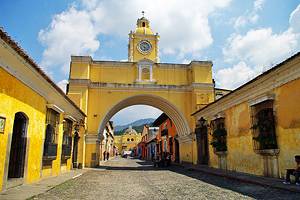
Central America: This part of the world offers many great adventures and intriguing destinations. To the south of Nicaragua, Cost Rica is fill with natural attractions, beaches, and incredible opportunities to see wildlife. Also worth checking out in Central America are the sights of Guatemala . Lakes, volcanoes, culture, and history make this a country worth working into your itinerary.


COMMENTS
The country is best known for its numerous lakes and volcanoes. It is home to the two largest freshwater lakes in Central America, Lake Managua and Lake Nicaragua. The population of Nicaragua is comprised of different ethnicities including mestizos (which make up the majority of the Nicaraguan population, about 69%) and people of Spanish descent.
Both restaurants and street vendors will sell freshly made juices. And don't forget to try coconut water, straight out of the coconut. 4. Pinolillo. Usually served cold, pinolillo is made with corn flour, cacao, and cinnamon. This powder is mixed into either water or milk, and can be sweetened or unsweetened.
Nicaraguan cuisine is very varied. While in the Central American region and Mexico corn is the base of most food, there is a distinct European influence in many dishes.. One of the curiosities of Nicaragua is the "fritanguerias", street food stalls that usually sell roast meat, roast pork, roast chicken, fried banana, fried cheese, fried tacos, enchiladas (stuffed tortilla of meat, rice ...
Rondón (Rundown Stew) Rondón is a traditional Caribbean dish popular along Nicaragua's coast. It's a filling stew with coconut milk, root vegetables like yucca and sweet potatoes, and seafood like fish, crab, and shrimp. Herbs and spices such as thyme, garlic, and chili peppers are used to season the dish.
The full Nica comes with fried eggs, or scrambled eggs cooked with diced onions and bell peppers, fried plantains, a few squares of fried or fresh cheese, a piled up heap of gallo pinto, and a fresh maize tortilla. Typical extras include pico de gallo, a vinegary salsa of finely chopped tomatoes and onions, and a little pot of sour cream, but ...
6 Tips To Fully Enjoy Nicaraguan Food Go on a food tour. Food tours are a great way to get acquainted with a cuisine you know little about. I always recommend doing one, wherever you travel, and it is no different for Nicaragua. Food tours are only just starting here - Nicaragua isn't exactly a major tourist destination.
Bell Pepper. Onion. Garlic. Coriander. Vegetable Oil. Lizano sauce. Gallo pinto, sometimes referred to only as pinto, is the traditional national dish of Costa Rica and Nicaragua. Although many variations of the dish exist, at its most basic it is a blend of cooked and fried rice and beans, combined with herbs and vegetables such as cilantro ...
4. Indio Viejo: The Indigenous Stew. Indio Viejo, a stew made from shredded beef, corn dough, and achiote, pays homage to Nicaragua's indigenous roots. The result is a hearty dish with a rich history and an even richer taste. Indio Viejo is a hearty stew that captivates with its rich, smoky aroma.
9 - Vigorón. Vigorón is recognized to be originally from Granada, where it was first created in 1914, but it is very popular everywhere in Nicaragua. It can be considered a street food, since it is mostly sold at bus stations and stops, markets, on the roadsides, or by street vendors.
Arroz con leche is a creamy rice pudding topped with ground cinnamon. This traditional Nicaraguan food is as sweet and rich as it is comforting. This typical dish is infused with spices by adding cinnamon sticks to the boiling rice water. For extra flavor, you will sometimes find arroz con leche with vanilla and raisins.
Humble and modest is the pozol, boiled and ground corn, with a piece of alfeñique (made from sugar cane molasses), it turns into a drink capable of competing against tiste de panecillo, or any cola drink. Find out what to eat in Nicaragua. Corn is a staple vegetable. Most of the dishes derive from maize. Jinotepe, Diriamba, and more.
Central and Pacific Cuisine. The inhabitants of the Central and Pacific regions of Nicaragua prefer simple gallo pinto (rice and black beans, cooked with oil in a frying pan) with either beef, chicken, pork, or (particularly on the coast) seafood—alongside fried snacks and dairy products.. Sample dishes include: Indio Viejo. Indio Viejo is a thick chicken or beef stew made with cornflour ...
Nicaraguan Food to Lookout for When in Nicaragua. Gallo Pinto, the Ever-Present Rice & Beans Meal. Quesillo, the Easily Available Cheesy Treats. Nacatamales, the Nicaraguan Version of Tamales. Sopa de Cola, the Traditional Oxtail Soup. Voho, the Great Nicaraguan Hangover Cure. Tajadas and Tostones, the Plantain Specials.
Tourism. Nicaraguan cuisine includes a mixture of Mesoamerican, Chibcha, Spanish, Caribbean, and African cuisine. Despite the blending and incorporation of pre-Columbian, Spanish and African influences, traditional cuisine differs from the western half of Nicaragua to the eastern half. Western Nicaraguan cuisine revolves around the Mesoamerican ...
In our Ultimate Nicaragua Itinerary for 1, 2, or 3 Weeks, you'll find everything you need for an incredible trip to Nicaragua. From must-visit destinations, epic day trips, and the best lodging suggestions, to top-notch food recommendations, hidden gems, and must-know travel tips, we've covered it all!
That makes from Nicaragua a perfect destination for all budget travelers who can contribute to the local economy as tourism is becoming one of the most relevant industries in the country. Food in local restaurants cost $2 - $3, so we did not find necessary to go shopping and cook in Nicaragua at all apart from fruits which we found affordable ...
Marvel at the natural spectacle of the Masaya Volcano, and relax on the pristine beaches of San Juan del Sur. With history, nature, and adventure around every corner, Nicaragua awaits you with open arms.". I. Explore Granada This charming colonial city is one of Nicaragua's most popular destinations.
Nicaragua is a country full of surprises and exciting adventures, with incomparable natural and cultural beauty that offers an unforgettable travel experience. Discover 12 of the country's tourist routes where you can experience priceless moments while enjoying delicious food, a verity of cultural expressions, nature and friendly people.
3. Admire colonial Granada. Nicaragua's oldest city is revered as the colonial jewel of Central America. Many of the pastel-painted buildings have been meticulously restored. Bask in Granada's historic grandeur as you weave through the cobblestone streets, visit local art galleries, and sip on a coffee in a plaza. 4.
3. Masaya Volcano Masaya Volcano. Protected in the country's largest national park, the Masaya Volcano is also one of Nicaragua's top places to visit, just 20 kilometers south of Nicaragua's capital city of Managua.. The most amazing part about visiting this active volcano is how close you can get to the lip of the crater in a private vehicle - you simply drive right up to the edge and park ...
🇳🇮VISIT NICARAGUA: https://www.instagram.com/visitanicaragua 🇳🇮CARLOS: https://www.instagram.com/carlos.tapia28/ 🌎 MY TRAVEL/FOOD BLOG: https://davidsbe...
1. Isla de Ometepe. A sunset from our hotel, Totoco Lodge on Ometepe. Isla de Ometepe is easily one of the most unique places to visit in Nicaragua. This small island is made up of not one, but two volcanos, and sits within Lake Nicaragua (Nicaragua's largest lake.)